THE ENDANGERED SPECIES ACT
A look back at the successes of this landmark law on its 50th anniversary.

TOGWOTEE SNOWMOBILING TETON VILLAGE EATS WILDLIFE ART [COMPLIMENTARY COPY]
Hole WINTER 2023
Jackson






























Compass Real Estate is a licensed real estate broker and abides by Equal Housing Opportunity laws. All material presented herein is intended for informational purposes only. Information is compiled from sources deemed reliable but is subject to errors, omissions, changes in price, condition, sale, or withdrawal without notice. Photos may be virtually staged or digitally enhanced and may not reflect actual property conditions. BE LOCAL. LIVE IN THE TETONS. 307.203.2022 mountainstandardrealty.com info@mountainstandardrealty.com 420 W Pearl Ave, Jackson, WY 83001 8 N. Main St, Victor, ID 83455
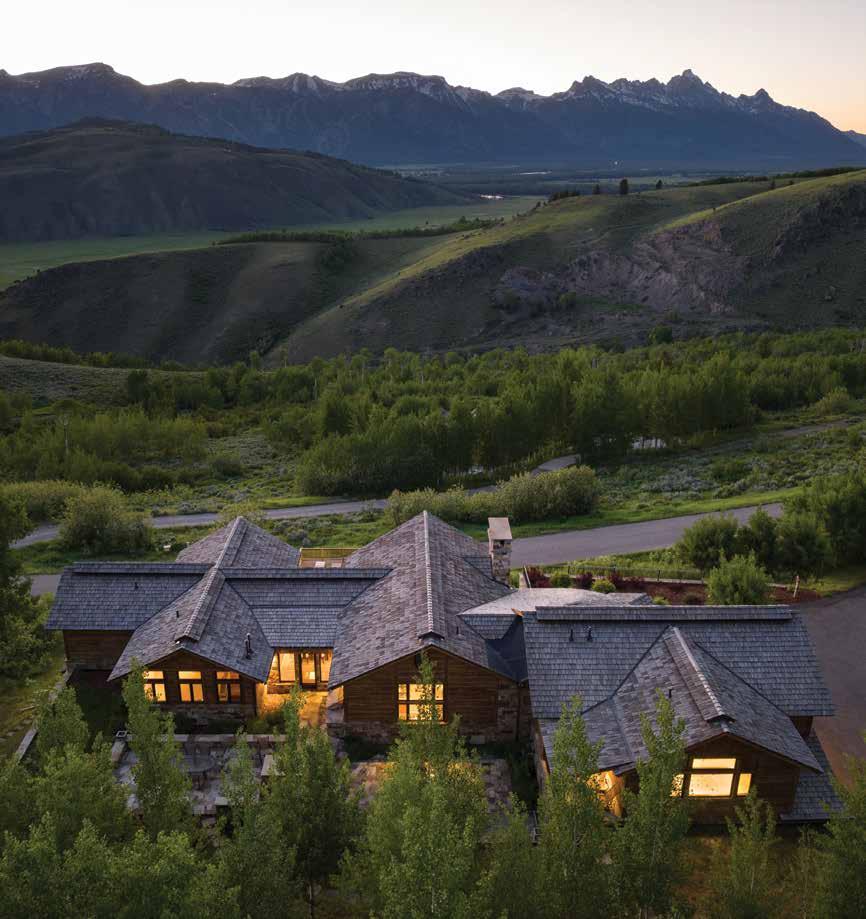





More than a bank, our roots are decades deep.
DIVISION OF NBH BANK. NMLS 465954
Proudly serving the Jackson Hole community for 40 years.






FEATURES
JACKSON HOLE
ON THE COVER: Ryan Dorgan captured Grizzly 399 and her quadruplet cubs in Grand Teton National Park on April 15, 2021, the first day they were seen out of the den that spring. Dorgan happened upon the family near Willow Flats. “From there it was madness like I’d never seen before,” he says. “She's always been an amazing bear to see, but the spectacle and people-management part of it all are overwhelming.”
ENDANGERED NO MORE 2023 marks the 50th anniversary of the Endangered Species Act, a landmark law that made the Greater Yellowstone Ecosystem whole.
BY MIKE KOSHMRL
TREMENDOUS, TREACHEROUS TOGWOTEE
The Continental Divide Trail System is a mecca for snowmobilers looking for backcountry and groomed-trail riding. Hazards lurk, too, and sometimes get the best of flatlander sledders.
 BY MIKE KOSHMRL
BY MIKE KOSHMRL
BOARDS
BY RACHEL WALKER
BY DINA MISHEV
16 WINTER 2023 | JACKSON HOLE
WINTER 2023
110
118
126
HAND CRAFTED
Jackson Hole’s ski and snowboard makers carve their niches one turn at a time.
134
140
People skied
PHOTO ESSAY: WYOMING HIGHWAY 22 BY BRADLY J. BONER PHOTOGRAPHY BY BRADLY J. BONER
NO LIFTS NECESSARY
in Jackson Hole long before the arrival of ski lifts...and they still do. Today it's called ski touring, and it is more popular than ever.
BRADLY J. BONER


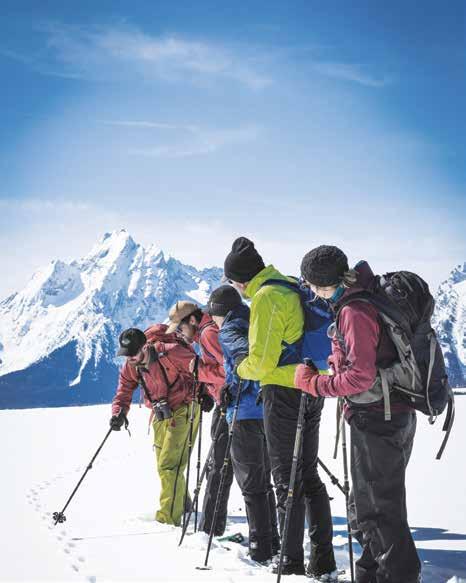
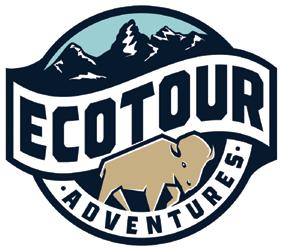




18 WINTER 2023 | JACKSON HOLE LOCAL LIFE ENJOY EXPLORE CONTENTS 30 88 156 JACKSON HOLE WINTER 2023 150 Paw Power BY MOLLY ABSOLON 156 Yurting in Yellowstone BY DINA MISHEV 162 Off to Camp BY DINA MISHEV 166 Sleigh Back in Time BY MOLLY ABSOLON 168 JACKSON HOLE MAP 170 CALENDAR 172 AS THE HOLE DEEPENS BY TIM SANDLIN 28 LOCAL KNOWLEDGE Matt Carr BY JIM STANFORD 29 BOOKS Good Reads BY JIM MAHAFFIE 30 ANATOMY OF Jackson Hole Downhill BY MARK BAKER 32 MY JACKSON HOLE LIFE Bonnie Budge BY PENNY NAKAMURA 38 ALL YOU NEED Nordic Skiing BY DINA MISHEV 40 GO DEEP Winter Boots BY RACHEL WALKER 42 JACKSON HOLE ICON Tram Jam Band BY MARK BAKER 54 HELLO Meet Mekki Jaidi, Laurie Andrews, and Paul Bruun 56 BLAST FROM THE PAST The Alpenhof BY TIBBY PLASSE 68 FOOD Teton Village Eats BY LILA EDYTHE 74 JH PANTRY 460 Bread BY SUE MUNCASTER 76 TASTE OF JACKSON HOLE Lamb at the Blue Lion BY SUE MUNCASTER 78 ART A National Treasure BY RACHEL WALKER 84 CULTURE On Point BY RACHEL WALKER 88 DESIGN Log Time BY MAGGIE THEODORA 94 HEALTH Nature is the Cure BY BEVIN WALLACE 100 CHOOSE YOUR OWN ADVENTURE How can I avoid getting charged by a bison? BY WHITNEY ROYSTER BRADLY J. BONER COURTESY WARD + BLAKE/DOUGLAS KAHN DINA MISHEV



HOWDY
EDITOR'S LETTER
KATIE COONEY
Ihope every issue of Jackson Hole magazine captures the diversity of things to do, expe rience, and see in this valley and also provides insight into what makes Jackson Hole so special in the world. Of course I’m far from impartial, but I think this winter’s issue really nails this. Although reporter Mike Koshmrl is no longer with Jackson Hole magazine’s sister publication, the Jackson Hole News&Guide—he’s moved on to report statewide for WyoFile—we’re fortu nate he still writes environment-related stories for this magazine. This issue, he takes a look at the Endangered Species Act, which celebrates its 50th anniversary in 2023, and several of the species that live in this area the act helped keep from extinction, “Endangered No More,” p. 110. In this issue, Koshmrl also wrote “Tremendous, Treacherous Togwotee,” p. 118, about the appeal and dangers of snowmobiling on Togwotee Pass, home to about 600 miles of trails that are part of the larger Continental Divide Snowmobile Trail System—and also annually the site of snowmo biler deaths and serious injuries.
Also in this issue, journalist Rachel Walker, whose work has appeared in AARP and The Washington Post, takes a look at the four inde pendent ski makers that call the Tetons home

in the feature story “Hand-Crafted Boards,” p. 126. “To be able to carve out a space in such a niche world is impressive,” Walker says. “The boutique board makers here, while all different, shared a common vision for how they could improve their sports, and the drive to pursue their pas sion in a remarkably skilled and intelligent way.” Journalist Bevin Wallace has been Jackson Hole magazine’s copy editor for several years, but she’s also an editor and writer herself, and I couldn’t be happier that this issue includes her first story for us, “Nature is the Cure,” p. 94.
As usual, Jackson Hole magazine shares the lives of several locals. The locals profiled in this issue include a former Jackson town councilor and 2021 inductee into the Fly Fishing Hall of Fame (“Hello: Paul Bruun,” p. 52); a business woman who has lived in Jackson Hole for more than nine decades (“My Jackson Hole Life: Bon nie Budge,” p. 32); and Teton County Sheriff Matt Carr (“Local Knowledge,” p. 28). Whenever the editorial team starts talking about who we’d like to profile in a particular issue, and then espe cially once I start editing an issue’s profiles, I want to suggest a special issue of Jackson Hole magazine that is dedicated entirely to sharing the stories of the people who make this place home. #maybesomeday
And then this issue has ideas on things to do, from Polka Night at the Alpenhof (“Blast from the Past,” p. 56) to dining out in Teton Village (“6 Places to Eat in Teton Village,” p. 68), visiting the National Museum of Wildlife Art (“A Nation al Treasure,” p. 78), taking a sleigh ride (“Sleigh Back in Time,” p. 166), dog sledding (“Paw Power,” p. 150), and staying in a yurt in Yellowstone (“Yurting in Yellowstone,” p. 156).
As always, I hope you enjoy reading this is sue of Jackson Hole magazine as much as I’ve enjoyed editing it.
Happy, and safe, adventuring!
— DINA MISHEV 20 WINTER 2023 | JACKSON HOLE
@JACKSONHOLEMAG @MYSPIRITANIMALISATREX









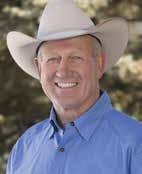

















Jackson Hole
WINTER 2023 // JACKSONHOLEMAGAZINE.COM
What is your favorite snack to eat while skiing (whether downhill or Nordic)?
A cranberry toffee cookie from Picnic is both sweet and salty, and it doesn’t crumble in a pocket or backpack.
A spicy meat breakfast burrito from D.O.G. provides plenty of fuel for a long ski tour in the backcountry.
Snickers—the ultimate power bar.
A slice and a mocha from 6311 [at Jackson Hole Mountain Resort], because they’re great people and the pizza is big and cheesy.
At JHMR, my guilty food pleasure is the French fries at Casper Lodge, which I dip in a bowl of their chili topped with lots of cheese and onions. Yum!
Kate’s Real Food Tram Bar in lemon, coconut, and ginger. This flavor is outrageous, and I’m a chocolate girl! The lemon gives a pep, and the ginger feels soothing.
A Grizzly Bar from Kate’s Real Food can power me for hours.
PUBLISHER
Kevin Olson
ASSOCIATE PUBLISHER
Adam Meyer
EDITOR
Dina Mishev
ART DIRECTOR
Elise Mahaffie
PHOTO EDITOR
Bradly J. Boner
COPY EDITOR
Bevin Wallace
CONTRIBUTING WRITERS
Molly Absolon Mark Baker
Lila Edythe Mike Koshmrl
Jim Mahaffie Sue Muncaster
Penny Nakamura Tibby Plasse
Whitney Royster Tim Sandlin
Jim Stanford Maggie Theodora Rachel Walker
CONTRIBUTING PHOTOGRAPHERS
Sarah Averill Natalie Behring
Price Chambers Ryan Dorgan
Kayla Renie Bob Woodall
Kathryn Ziesig
ADVERTISING SALES
Alyson Klaczkiewicz
DIGITAL CAMPAIGN MANAGER
Tatum Mentzer
AD DESIGN & PRODUCTION

Sarah Wilson Luis F. Ortiz
Heather Haseltine Lydia Redzich
Chelsea Robinson
DISTRIBUTION
Jayann Carlisle
Oscar Garcia Perez
Chocolate milk—besides being so yummy, it’s an amazing recovery drink due to the protein and carbs.
Leftover Halloween candy, which we tend to have around all winter, is great for skiing. The candy bars are small enough to fit in any pocket, and frozen Snickers or Mr. Goodbars are amazing.
Rob’s “All Good Bars” from Chasing Paradise when I can find them at the winter farmer’s markets. The bars are made with local honey, peanut butter, nuts and seeds, and cranberries.
Bison jerky packs flat and has no wrappers or unmanageable crumbs, and always hits the fix meter with flying colors.
Beef jerky so long as I have my small, plastic flask of water to wash it down with. I also like to keep a small bag of mixed nuts in my pocket. Basically, anything salty and that requires chewing, though if someone hands me chocolate, I won’t turn it down.
A friend who lives in Switzerland always gifts my family a selection of Swiss chocolate bars, which are the treats we love to eat most while skiing.
©2023 Jackson Hole magazine. All rights reserved. No part of this production may be reproduced in any form without written permission from the publisher. No responsibility will be assumed for unsolicited editorial contributions. Manuscripts or other material to be returned must be accompanied by a self-addressed, stamped envelope adequate to return the material. Jackson Hole magazine is published semiannually. Send subscription requests to: Jackson Hole magazine, P.O. Box 7445, Jackson, Wyoming 83002. 307/732-5900. Email: dina@jhmagazine.com. Visit jacksonholemagazine.com.
22 WINTER 2023 | JACKSON HOLE

CONTRIBUTORS
 BEVIN WALLACE
BEVIN WALLACE

(“Nature is the Cure,” p. 94) is very familiar with the benefits of spending time outside. As an outdoor journalist and editor for over 20 years, she has skied, hiked, and camped all over the world—often at the same time. A former editor of Skiing magazine and Outdoor Retailer, Bevin is a contributor to Vail-Beaver Creek, Elevation Outdoors, Peak, and Sierra. She lives in Colorado but spends a part of every summer in southern Montana with her family and tries not to let a year go by without seeing the Tetons.
MIKE KOSHMRL
(“Endangered No More,” p. 110 and “Tremendous, Treacherous Togwotee” p. 118) first came to Jackson Hole in 2012, drawn by the environmental reporter gig at the Jackson Hole News&Guide. He’s now on staff writing for WyoFile. As a freelancer, Koshmrl has written about urban wolves in his homeland of Minnesota, and he’s trekked into Yellowstone's Thorofare to fish for and cover resurgent migratory cutthroat trout. He tries to spend as much time as possible exploring the Greater Yellowstone Ecosystem.


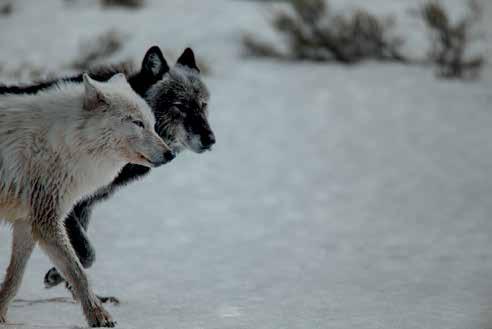


24 WINTER 2023 | JACKSON HOLE
CONTRIBUTORS
TIBBY PLASSE
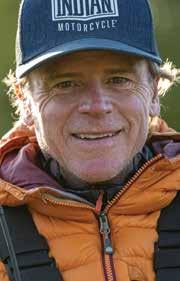
Equipped with an MFA in poetry and translation from the University of Nevada, Las Vegas, and a BA from Bucknell University, Tibby Plasse (“Blast from the Past,” p. 56) moved to Ketchum, Idaho, in 2006 to snowboard after dropping out of a PhD program in New York. She moved to Teton Valley— sight unseen—in 2009 and spent the next 10 years dairy farming. She now contributes to several regional publications and lives at the base of the Big Holes with her son and two spoiled German wirehaired pointers.

TODD WILLIAMS
(“Tremendous, Treacherous Togwotee,” p. 118) is an editorial and commercial photographer who was born and raised in central Minnesota before moving to New York City to work with photographers including Howard Schatz and Kenneth Willardt. He has been spending time in Wyoming for about 15 years. In addition to Jackson Hole magazine, Williams has done work for Polaris Industries, Indian Motorcycles, Vogue, and Esquire, among other clients. Follow him on Instagram @toddwilliamsusa
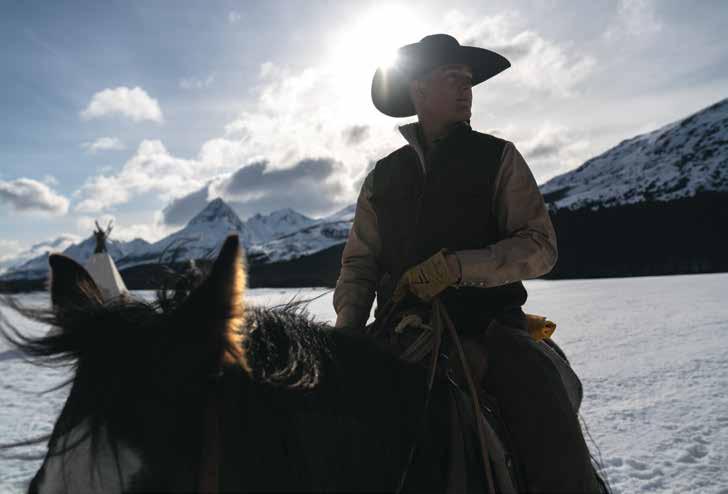
JACKSON HOLE | WINTER 2023 25
LOCAL LIFE
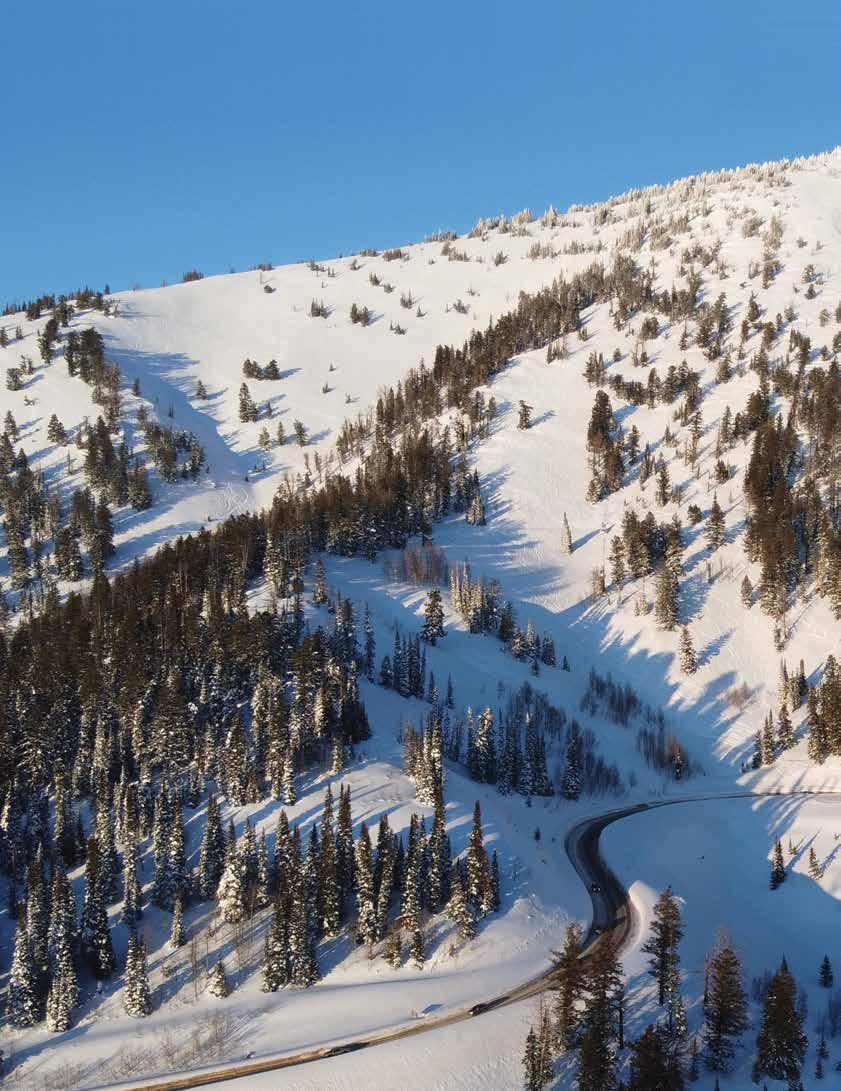
26 WINTER 2023 |
PEOPLE AND PLACES THAT ARE JACKSON HOLE
JACKSON HOLE

BRADLY J. BONER JACKSON HOLE | WINTER 2023 27
TETON PASS CONNECTS Jackson Hole with Teton Valley, Idaho. The Wyoming Department of Transportation estimates that about 5,000 people drive daily between the two valleys. Teton Pass is equally popular with backcountry skiers. Teton Backcountry Alliance, a nonprofit advocacy group, estimates that more than 150,000 ski and snowboard runs are taken in the area every winter.
TETON COUNTY SHERIFF Matt Carr
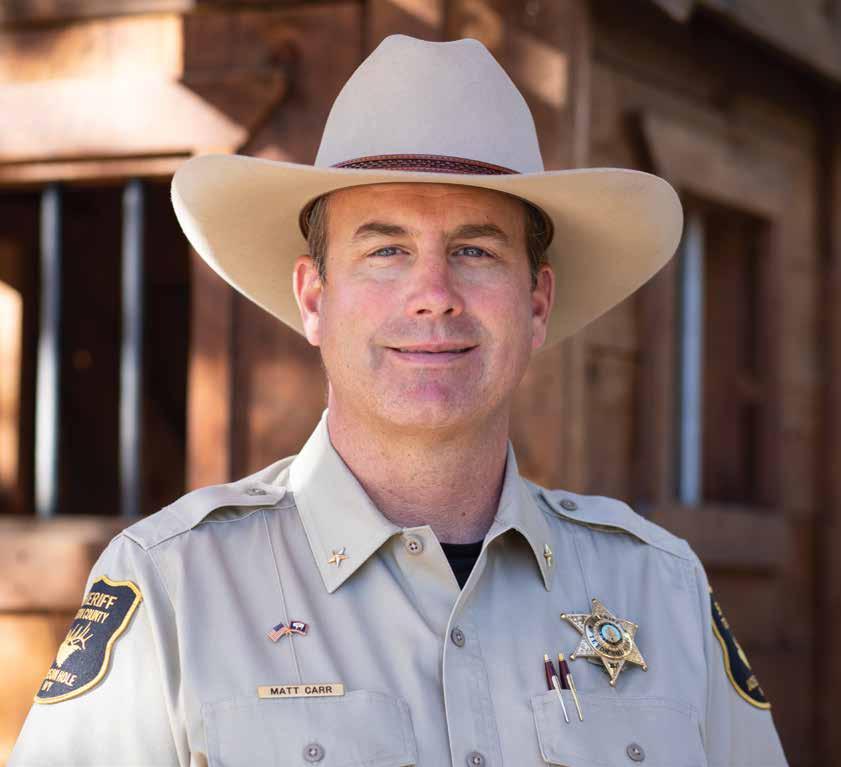 // BY JIM STANFORD
// BY JIM STANFORD
28 WINTER 2023 | JACKSON HOLE
LOCAL KNOWLEDGE
LOCAL LIFE
KATHRYN ZIESIG
Among the many jobs Sheriff Matt Carr has worked in Jackson Hole are several seasons as a rafting guide on the Snake and a decade of piloting boats across Jenny Lake in Grand Teton National Park. Keeping an even keel in rough water comes in handy for the newly re-elected 51-year-old lawman, not only when responding to emergencies, but for navigating the politics of the job. He’s discovered that engaging as a public political figure can be challenging. “I didn’t see that coming,” he says.
The native of Richmond, Virginia, with family roots in North Carolina tobacco country, majored in secondary education at James Madison University. He came to Jackson Hole with college friends in the summer of 1992 and worked as a dishwasher at The Bunnery. Then after graduation the following year, he moved here to be a ski instructor. He progressed from instructing to running the Kids’ Ranch to ski patrol, where he still works part time; this is his 30th season at Jackson Hole Mountain Resort.
Before being elected in 2016, Carr had worked in or supervised all divisions of the sheriff’s office, from the jail and patrol to investigations and search and rescue. He was the school resource officer and ran the drug abuse prevention program, while working summers at Jenny Lake Boating. He is only the fourth Democrat elected sheriff in Teton County and the first since Lawrence Cheney in 1966. Although “not a big party person,” he says, he identifies as a Democrat be cause of his concern for the environment and support for social services.
He’d like to hire more Spanish speakers among his ranks. “As the sheriff’s office, we need to be represen tative of the community we serve,” he says. And he la ments the lack of deputies living locally—only 1 of 20 patrol officers resides in Teton County, and he’s a care taker. “When you have officers who shop at the same grocery stores as you do, have kids who go to the same schools, and you go to church together, it makes a big difference,” he says.
Teton County has “all the crimes of a big city,” and the influx of people is straining infrastructure and staffing, he says. But despite the changes, “There’s still a core that's very much engaged,” he says. “The com munity here still has the ability to rise to the occasion. My concern is how long we can maintain that.” JH
LOCAL LIFE BOOKS ReadsGood
 // BY JIM MAHAFFIE
// BY JIM MAHAFFIE
ANIMAL RESCUE STORIES
I Will Take You Home: One Woman’s Obsession to Save Them All Rebecca Cupcake Tinnes
More than 20 years ago, the author discovered a nearby high-kill animal shelter, and then founded the nonprofit Animal Adoption Center, a no-kill shelter, in Jackson Hole. Her collection of rescue stories is hilarious, enlightening, and deeply meaningful for anyone who loves animals and wants to help them.

FOR YOUR COFFEE TABLE Angle of Repose
Greg Von Doersten
Jackson-based photographer Von Doersten, known locally as “GVD,” has been on assignment around the world for clients ranging from The New York Times to Outside and The North Face. But it’s not surprising that his first fine-art photography book, published in late 2022, features images exclusively of Jackson Hole and the surrounding mountains. He says that some of his most fulfilling work has been shooting in the Tetons. If you find yourself drawn to specific images in this book, know that each is also available to purchase as a fine art print.

REGIONAL HISTORY Images of America: Earthquake Lake Ellen
Butler & Kaitlin Johnson
One of many fascinating historic events in the region is the 1959 Hebgen Lake earthquake, which was the strongest earthquake ever recorded in the Rockies. Campers were stranded by an 80-millionton mudslide, new geysers appeared, roads were destroyed, and a new lake, Earthquake Lake, was formed along the Madison River. This book captures the event and its aftermath.

AMAZING DOGS
Merle’s Door: Lessons from a Freethinking Dog Ted Kerasote
Fifteen years ago, Jackson writer Kerasote published this national bestseller about his relationship with a once-wild dog he met while camping in a Utah desert. He named the young dog Merle, and training became mutual. Ted showed Merle how to live around people and wildlife, and Merle taught Ted about a dog’s intelligence and communication skills. JH

JACKSON HOLE | WINTER 2023 29
The sheriff, an avid boater and skier, draws on his variety of work experience to connect with people.
Jackson Hole Downhill
BAKER
It’s fast and formidable, and the fat-baggers like the Jackson Hole Downhill. But anyone who skied it every March will never forget the original course on Snow King, the ski area just five blocks from Jackson’s Town Square. Local and regional rac ers last flew down the Town Down hill course in 2019. A year later, the race was moved from Snow King to Jackson Hole Mountain Resort and renamed the Jackson Hole Downhill. The Jackson Hole Ski & Snow board Club began hosting the Town Downhill—it was one of the club’s major fundraisers—in 1982. A com munity ski race, the Town Downhill was open to anyone who wanted to race, and categories included Pro,

Am, Junior, Snowboard, Telemark, and, more recently, Fat & Baggy. The latter was added to encourage local skiers with limited race experience to join the fun. Racers in that cat egory are required to wear clothing that flaps in the wind—although this isn’t interpreted literally; Fat & Baggy racers are fine as long as they’re not wearing the aero skin suits worn by
“real” ski racers—and they race on skis that are at least 86mm underfoot (a typical race ski is usually less than 70mm underfoot). The category also encourages costumes.
“I was really bummed to see it leave Snow King, from a historical standpoint,” says Jason Moore, the race and events manager at JHMR. The race was a fundraiser, though,
ANATOMY OF 30 WINTER 2023 | JACKSON HOLE
LOCAL LIFE
One of the country’s last community downhill ski races returns this year on a course that’s fast, twisty, and open to anyone—skin suit and race skis not required.
// BY MARK
BRADLY J. BONER
Rob Watsabaugh weaves through the upper section of the Jackson Hole Downhill while competing in the Individual Pro class.
The run starts 9,022 feet up at the top of Teton Lift. The first challenge for skiers is a big jump—designed early in the run so skiers can handle it while their legs are still fresh—where racers catch the biggest air. That leads into the first turn—“just a big, sweeping turn,” Moore says. “A really fun, big turn that’s really open to a skier’s interpretation”—at Crag Saddle.
The best places to watch the race are up high at Crag Saddle, reached by traversing from the top of Apres Vous, or behind the net in the middle at Moran Face
Racers cross the face of Apres Vous mountain at Moran Face before coming into what Moore describes as another “big, sweeping turn.” It’s almost a teardrop-shaped piece of the course where you can catch more air or just get lower and roll. “We wanted to reward the fast guys and keep it easier on the kids or athletes having a hard time coming across,” he says.
After some “camel bumps”—small ramps that skiers can either catch air from or stay low and roll over—just before the Werner and Moran runs split is Worker’s City. This is the spot where Moore and his race crew base their operations and keep their gear and where spectators set up portable grills and cook up sourdough pancakes—using an 1860 sourdough starter—waffles, and pizza.
and participation in it had been declin ing. Moore says it needed new energy. While there was big buzz about the downhill race moving to Jackson Hole Mountain Resort, the race had a rough start. After weeks of groom ing and preparation, the new course, which links several runs on Apres Vous mountain together, was shut down before anyone launched from its starting gate. It didn’t help that it was Friday the 13th—March 13, 2020 to be exact. A day later, the re sort closed for the season because of Covid-19. So, it wasn’t until March 2021 that the inaugural Jackson Hole Downhill was held. Although many in the community were sad the Town Downhill ended, the Jackson Hole
Downhill still allows the valley to claim that it’s home to one of the last, if not the last, open, non-sanctioned community downhill races in the U.S. Although 2023 is only the second year of the new race (2022 was can celed after one day because of unsafe conditions), its course is already on its way to being legendary. Like the one at Snow King, it’s fast, but it’s more curvy. Here’s a look at some of the Jackson Hole Downhill’s most notable sections. The course descends 1,371 feet from the top of Teton Lift and, in 2021, the winning pro racers finished in about 51 seconds. (The Fat & Baggy winner finished in 58 seconds.)


The third annual Jackson Hole Downhill is March 10, 2023.
NASTAR Flats is the fastest section of the course. It’s not uncommon for the pros to hit 60 mph here. “We’re one of the last people doing this anymore,” Moore says of a community race course where you can catch this kind of speed. “Anyone can come off the couch and sign up for the race. That’s what we love. We’re doing what other places aren’t. We’re still Jackson.” JH
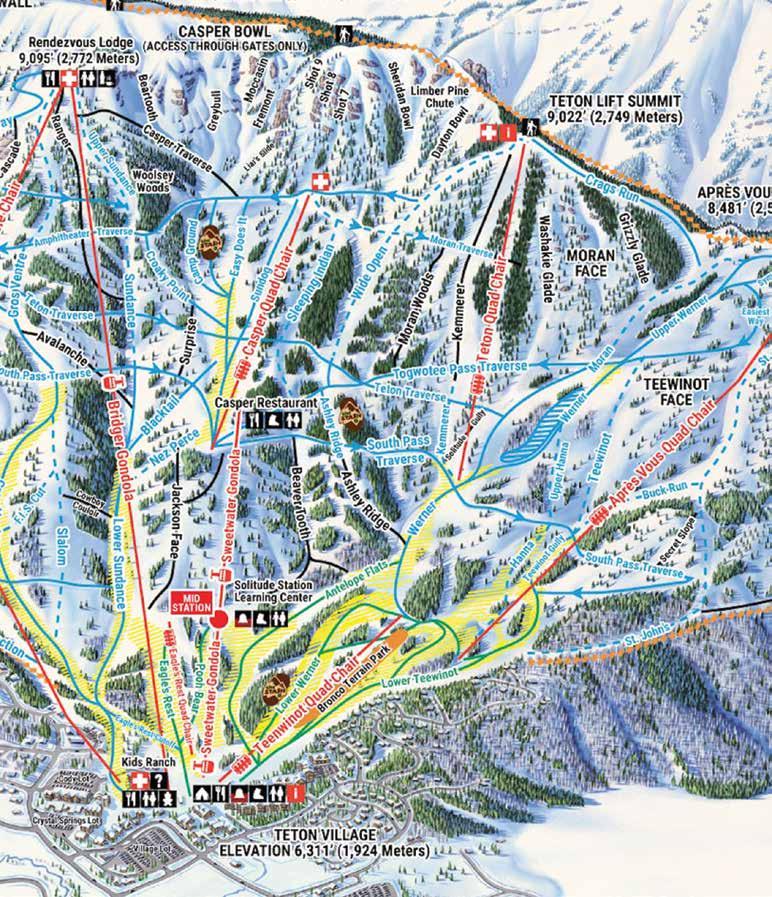
JACKSON HOLE | WINTER 2023 31
1 1 2 2 3 3 4 4 5 5
LOCAL LIFE
Bonnie Budge
// BY PENNY NAKAMURA
At 91 years old, Bonnie Budge is still a force to be reckoned with in Jackson Hole. She says her no-nonsense attitude toward life was forged in the valley long before the arrival of “all the conveniences we have today.” Budge’s grandparents and parents were part of the original families that first home steaded the area in the late 1800s, in an area now known as Mormon Row. By the time Bonnie was born in 1931 (to Joseph and Chloe May), her father had already purchased his own 160 acres between Mormon Row and the town of Kelly. It was on this expansive stretch of land, the JM Ranch, that Budge and her six siblings grew up, learning to ride horses, ski, and

generally survive in the massive shadows of the Tetons. “When you grew up the way we did, we had to learn to be very re sourceful,” says Budge, who now lives in East Jackson (her family moved into town when she was 12 because the Jackson school was better than the Kelly school).
“My siblings and I all agreed that when you’re growing up on a ranch, you can’t get into too much trouble, because if you do, you better know how to get out of it, or you won’t survive.” Budge has lived in Jackson Hole her entire life. Though she’s traveled extensively and enjoyed many places around the globe, she says she al ways comes back to the most spectacular place she calls home, the Tetons.
32 WINTER 2023 | JACKSON HOLE
MY JACKSON HOLE LIFE
BRADLY J. BONER
Bonnie Budge has seen a lot in her 91 years living in Jackson Hole. She spent the earliest years of her life on her family's 160-acre ranch between Mormon Row and Kelly.






HERE SHE SHARES HIGHLIGHTS
MEETING HOLLYWOOD ROYALTY
In 1954, Budge’s brother Dell May built the Western Motel on South Glenwood Street, a couple of blocks south of the Town Square. In 1966 Bonnie and her husband, Orin, bought it—for $250,000. At the time, the motel occupied five town lots and had 30 rooms and a neighboring two-bedroom house where she, Orin, and their five sons lived. “It was a different time,” Budge says. “After Labor Day, you could’ve shot a cannon down Broadway because Jackson emptied out. A lot of motels did business only during the summer months and shuttered for the winter.”

One summer in the 1960s, the Western Motel had a famous guest. “The actor Henry Fonda stay[ed] at our motel for about six weeks, because he was shooting [the movie Spencer’s Mountain],” says Budge. “I remember he said he wanted our most quiet room, so we gave him room number six, down a little hallway. Every morning he would give us a 50 dollar bill, and ask us for change. Apparently, word was, he was having an affair with one of the barmaids.” The Budges sold the Western in 1976. It operated as a motel until 2007 and then as employee housing until 2015, when it was demolished. Today, the lots that were once the Western are Springhill Suites By Marriott.
"
KELLY AND MORMON ROW
The JM Ranch, east of Blacktail Butte, was not in the heart of Mormon Row, but Budge says that when the weather was good, her family would attend church there. Today Mormon Row is part of Grand Teton National Park and recognized as the Mormon Row Historic District. The district was added to the National Register of Historic Places in 1997. (The oft-photographed Moulton Barn is part of Mormon Row.) In the late 1930s, Budge’s dad bought an additional 500 acres adjacent to his original 160 acres. He leased this land to farmers who grew wheat, hay, and alfalfa. “My father paid 500 dollars for that parcel; it was a dollar an acre,” says Budge.
HELPING THE COMMUNITY
Budge says when they owned the Western, she saw many women, including some of her employees, “who got the hell beaten out of them.” She knew she had to help. “We set up one of the first permanent women’s shelters in Jackson at one of our trailers, which gave them a safe place to stay and sleep,” she says. Today, that women’s shelter has matured into the Community Safety Network, a nonprofit that has helped hundreds of women escape their abusers. (Budge still occasionally counsels battered women via the nonprofit’s crisis hot line.) During the height of the Covid pandemic, Budge, who owns rental properties including a mobile home park in East Jackson, provided rental forgiveness to 35 tenants. “My dad used to say, ‘If you’re on your own two feet, you help those who can’t be on their own feet yet,’” Budge says. “I remember my family was always trying to take care of somebody.”
JACKSON HOLE | WINTER 2023 35
My dad used to say, ‘If you’re on your own two feet, you help those who can’t be on their own feet yet."
BRADLY J. BONER
FROM HER JACKSON HOLE LIFE.
Budge shows off a painting by her brother of her family's JM Ranch near Mormon Row in what is today Grand Teton National Park.
LOCAL LIFE
Some of Budge's dancing boots from over the years sit on a small table in her East Jackson home.

DANCING
Bonnie May and Orin Budge “courted” for four years before getting married in 1948. Their court ship included dancing at the Million Dollar Cowboy Bar and the Wort Hotel. “Back then we did something called the ‘Jackson Hole stomp.’ It was a cross between cowboy meets rockabilly,” says Budge. The dancing continued after they had 5 sons, 12 grandkids, and 16 great grandkids. “Orin and me, we danced a million miles together. He used to tell me, ‘Once a year, one day of the year, we’ll do anything you want to do.’ I always wanted to dance, and we were always dancing, our entire lives together we kept dancing.” Orin died in 2010, after 63 years of marriage.
HUCKLEBERRIES


“I still love huckleberry picking,” says Budge. Of course, winter is not huckleberry-picking season, but berries picked the prior summer can be canned and frozen and eaten yearround. “I just finished eating a quart and a half of them. I eat a handful with my ice cream, it’s delicious,” she says. Huckleber ries, which have a sweet-tart flavor, were gathered for centuries by Native Americans for food and to use as medicine and grow in the wild around Jackson Hole. (Attempts to cultivate the berry have been unsuccessful.) Growing up, Budge, her mother, and her mother’s friend Ida Chambers took a wagon hitched to a team of horses up Blacktail Butte to pick them. “Our mother would tell us to put them in the buckets, but we prob ably ate more than we put in the buckets,” Budge says. The berries that Budge and her siblings didn’t eat were canned.
THE EARLY DAYS IN JACKSON HOLE

The cover of Virginia Huidekoper’s 1978 photography book documenting local life, The Early Days in Jackson Hole, is of Budge’s father on a bucking bronc with the Tetons in the distance. To this day, Budge has a framed version of this photo hanging in her house. “My father was a calm, reason able, and hard-working man, and we worked hard right alongside him in those days—it was just what was expected of you; we never questioned it,” she says.

SCHOOL
The school Budge attended from age 12 through 16 was on South Jackson Street in downtown Jackson. (Today it’s the site of New York City Subs.) “After school, if we had a nickel, we would walk over to the Jackson Hole Drugstore and order up a Black Cow,” she says. “It was one scoop of ice cream, lots of chocolate syrup, and a little seltzer water.” JH
36 WINTER 2023 | JACKSON HOLE
MY JACKSON HOLE LIFE
My father was a calm, reasonable, and hard-working man, and we worked hard right alongside him in those days—it was just what was expected of you; we never questioned it.”
"
BRADLY J. BONER


Nordic Skiing
// BY DINA MISHEV
Smartwool’s Merino Beanie proves you don’t need to be fancy to be perfect. Clean seams and lightweight merino wool make this the ideal hat for high-output Nordic skiing. $25, smartwool.com
Nordic Skiers who run cold wear Voormi’s Access NXT Pullover as a baselayer; skiers who run hot— or who go really hard—can wear it as their only layer. As a baselayer, it’s lightweight and breath able; it can work as your only layer because it’s got a durable-water-repellent finish. $229, voormi.com


Smith’s Embark Glacier Sunglasses have vented and removable side shields, so they can pull double duty as 1) the sunglasses to wear when ski ing (shields on) and 2) looking good while you’re wandering around town (shields off). Either way, you’ll appreciate the color- and contrast-boosting ChromaPop lenses. $209, smithoptics.com
As warm as jackets that weigh three times as much, the Trollveggen Superlight Down850 Jacket is Norrøna’s lightest (it weighs less than an average avocado) and most packable (it stuffs into its own pocket) down jacket. And, partially thanks to its windproof, recycled nylon exterior, it works equally well as a mid- and outer layer, making it the most versatile jacket in our closet. $429, norrona.com
Because women have an extra layer to wear over men, Icebreaker’s Merino Sprite Racerback Bra is made of merino that is core-spun to be breathable and comfortable all day long. $69, icebreaker.com

Honey Stinger Waffles taste best when they’re frozen! Yes, each bite is initially a little chilly, but it takes only seconds to soften in your mouth. $9 for a sample pack of six, honeystinger.com
Mountain Hardwear says its Winter Journey Tights (women) and Pants (men) are for winter climbing, but we turn to them when we want close-fitting pants for Nordic skiing on the worst weather days; they’re made from a stretchy soft shell material with an insane ability to repel snow. For bluebird days, Smartwool’s Merino Sport Fleece Wind Tights (not pictured) have a close-fit cut and windproof front panels. Mountain Hardwear: $110, mountainhardwear.com; Smartwool: $140, smartwool.com
LOCAL LIFE ALL YOU NEED
38 WINTER 2023 | JACKSON HOLE
GEAR TO MAKE YOUR CROSS-COUNTRY SKI ADVENTURE A SUCCESS.
ESSENTIAL
Spending $55 on socks seemed outrageous until we started skiing in CEP’s Ski Merino Com pression Socks and found our legs feeling fresh er for longer; the socks’ targeted medi compres sion helps increase blood flow and remove lactic acid. $55, cepcompression.com

POC’s Light Merino Jersey is a barely-there baselayer that’s super soft next to your skin. For a little more warmth, go for Ibex’s Woolies Tech Long Sleeve ¼ Zip, made from a mix of merino, nylon, and elastane and includes the best prop erties of each—warmth, durability, and stretch. POC: $90, us.pocsports.com; Ibex: $135, ibex.com
Nordic skiers not into tights should try Eddie Bauer’s Guide Pro 2.0 Alpine Pants with Norrøna’s PureUll Wool Longs beneath. Made of a stretchy softshell material, the pants are water resistant, have zippered cuffs and a built-in belt, and aren’t as clingy as tights. Norrøna’s new baselayer collection is made from 100 percent ul trafine wool that is soft and non-itchy next to your skin, odor-resistant, and equally warm and wick ing. Pants: $159, eddiebauer.com or 55 S. Cache St.; baselayer: $119, norrona.com
Wear the Hypernight Reflective Convertible Glove/Mitt from Nathan Sports as a glove when you’re hot; if the wind kicks up or the temp drops, deploy the low-volume, wind-resistant over mitt for additional warmth. $35, nathansports.com

Montane’s Azote 25L Backpack can carry ex tra layers, snacks, and hot beverages for you and a friend or two. $129, us.montane.com
Because you want to slide into the most comfort able shoes possible after taking off cross-country ski boots, meet the Chaco Ramble Puff Clogs, which are pretty much sleeping bags for your feet, but with good traction. $75, chacos.com
Phantom Glide must be made from unicorn horns—it’s that magical. With this permanent base treatment, a single treatment penetrates and is absorbed into ski bases for years of improved glide performance. And you can apply it yourself. (If you’re not a DIYer, Mudroom in Teton Village will apply the magic for you.) $99; dpsskis.com


BRADLY J. BONER
JACKSON HOLE | WINTER 2023 39
LOCAL LIFE
Boots
KODIAK GLACIAL/DUNDONALD WATERPROOF ARCTIC GRIP
WHAT IS IT?
An unfussy tall leather boot that’s insulated, has unimpeachable traction, and is stain-resistant (aka shielded from salt discolor ation), this Kodiak is tough enough for long, dark winter days outdoors, but attractive enough for date night.
STRENGTHS
The boot’s Vibram Arctic Grip outsole is as reliable as Nokian Hakkapeliitta winter tires on Teton Pass on the most challenging winter-driving day. A side zipper makes for easy access; the 200gram Thinsulate insulation keeps feet warm without bulk.
WEAKNESSES
Some may find the simple, unfussy design a bit basic.
BEST FOR
Being active outside: dog walking, snowshoeing, shoveling, winter hiking, wood-chopping, etc.
DETAILS
The men’s version is the Kodiak Dundonald Waterproof Arctic Grip and the women’s the Glacial. Dundonald is $190 and Glacial, $210; kodiakboots.com
BY RACHEL WALKER
STIO COLTER BOOT


Stio’s first foray into footwear, the Colter is, like the rest of the Jacksonbased brand’s designs, stylish and functional.
A pull-on kids’ boot with flexible, insulated rubber bottoms and neoprene uppers, Bogs come in a wide variety of colors and pat terns, and are warm, waterproof, and comfortable.

If there’s a boot that makes our feet happier after a day in ski boots, we haven’t found it; these boots feel like slippers thanks to their slip-on design, soft wool lining, and light weight sole. Unlike slippers, the Colters have grippy-on-ice treads and are water-resistant.
These boots are so easy to pull on and off that parents won’t get any pushback from stubborn kids who hate shoelaces. Extremely comfortable and warm—they’re rated to temps as low as -35F— these kicks are a little-person winter staple
These aren’t the boots to wear when shoveling snow or tromping around trails; their design is not meant to keep powder out.
Those who value looks, comfort, and warmth equally.
While the rubber sole grips (Bogs calls it “slip-resistant”), it doesn’t have the teeth of some burlier, heavier boots.
Everything that kids do, from waiting for the school bus to shuttling to the resort to making snow angels in the yard and more.
In men’s and women’s designs. $160; available at Stio Mountain Studio 10 E. Broadway and stio.com
Find sizes for little and big kids at bogsfootwear.com; $95.
40 WINTER 2023 | JACKSON HOLE
GO DEEP
AGE
WEAKNESSES BEST
DETAILS 2 3
BOGS NEO-CLASSIC DIGITAL
WHAT IS IT? STRENGTHS
FOR
1
WE TESTED THESE SO YOU DON’T HAVE TO. //
SALEWA MOUNTAIN TRAINER 2 WINTER
BAFFIN IMPACT
4 5 6 7
For days when you don’t need an arctic-worthy boot, meet Salewa’s Gore-Tex waterproof hiker, which uses wool fibers in the heels and ankles to insulate and help thermoregulate.
When warmth is an absolute must, reach for the Impact from Canadabased Baffin. Tested at both the North and South Poles, this is the pick for extreme winter conditions.
Fits like a favorite hiker but functions like a winter workhorse. Gore-Tex wicks sweat and blocks outside moisture, and the Arctic Grip Vibram sole keeps you upright in even the most challenging conditions.
A customizable inner boot system allows for some personalized climate control, and the outer design—two buckles and a cinch at the top of the upper boot—ensure a secure fit.
Don’t be deceived by this water proof leather and suede boot’s good looks; it’s as warm as it is attractive.
Hand-made in a small workshop in the shadow of the Rockies in Guffey, Colorado, these beauties are the small-batch answer to massproduced kicks adored by sorority girls everywhere. Wear them with or without socks.
In the words of Goldilocks, these boots are “just right.” New this winter, they’re fashionable enough to wear to work but tough enough to endure icy and blustery conditions outside. The sole is made from Vibram’s Icetrek rubber compound, which won’t scratch interior floors or absorb liquid or dirt but delivers superior grip on icy surfaces.
The shearling-lined interior is a wearable hug for your feet, but the soles are made for winter walking. The leather and sheepskin are sourced from around the western United States (the rubber soles are made in Mexico).
Not the wood-burning stove equivalent of winter boots; anyone whose feet get really cold may want a warmer, more insulated boot.
Days when you’ll be going back and forth from inside to the outdoors or for active winter excursions where movement warms your body.
The mountain trainer comes in men’s and women’s versions. $290; salewa.com
Unless the temperatures plummet to Arctic levels, these boots could be overkill for daily use.

Snowmobiling on Togwotee Pass, ice-fishing, and basically any out door activity in extreme cold where you won’t be moving a ton.
An equally warm but more fashion able women’s option is the Dana boot; the kid’s Pinetree boasts the same features as the adult boots. Impact, $250, Dana, $230, and Pinetree, $110; baffin.com

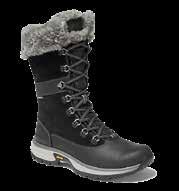
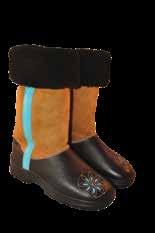
It only comes to mid-calf—not a deal breaker, but it would look better with skinny jeans if it were taller.
Everything. Find this boot a prominent spot in your mudroom because you’ll be wearing it all winter long.
The closest men’s equivalent is the Snoqualmie Pass. Rainier, $165, Snoqualmie Pass, $180; available at Eddie Bauer, 55 S. Cache St. and eddiebauer.com
You’ll need to do the waterproofing yourself with an aftermarket product, and all of the sizing is unisex, so narrow-footed folks may have trouble finding the right fit.
When you’re looking for a state ment boot that will last the rest of your life.
$299; sundanceleather.com JH
JACKSON HOLE | WINTER 2023 41
EDDIE BAUER RAINIER
SUNDANCE LEATHER CORNICE SHEEPSKIN BOOT
LOCAL LIFE
JACKSON HOLE ICON
Tram Jam Band
The originators of ski-bum music celebrate their 30th anniversary in 2023.
// BY MARK BAKER
YOU KNOW IT’S COLD OUTSIDE when you need a hair dryer to unstick your lips from the brass.
“Because the valves will freeze,” Peter “Chanman” Chandler says. The frontman for everyone’s favorite ski resort band, Tram Jam Band, a name that conjures an image of marmalade on the move, was talking about fellow band member Powell Miller and how he keeps his trumpet from icing up when it’s below zero—or colder. “Never any complaints—20 below or 40 above, they’re out there,” says Tim Mason, vice president of operations at Jackson Hole Mountain Resort, of the band that’s been entertaining fellow skiers with its ski-bum music at the base of the JHMR tram for almost 30 years. Ski-bum music is “any kind of music that’s made by ski bums,” Chandler says. “And by ski bums, I mean people who are committed to the mountain. It’s music that ski bums listen to, which can range from reggae to bluegrass to the Grateful Dead.”

Today, the band includes Chandler, Miller, guitarist Jeff Eidemiller, drummer Andy Peterson, bass player John Clark, and saxophonist Jason Fritz. But in the beginning, 1993, it was just Chandler, who grew up on the coast of Maine and has a master of divinity degree from Harvard, and then-musical partner Bradley Parker. They told the resort they’d play for ski passes. Sometimes, they’d play resort bars until 2 a.m. and then just hang out and start playing again at 7 a.m. The weather no longer fazes the band. Chandler remembers seeing “-12” on the temperature board one Saturday. “But it’s been colder,” he says. Sometimes the wind and snow blows sideways. Hard. “Somewhere along the line, it became easier. At some point, playing in a blizzard was no big deal,” Chandler says, although he admits, “There’s only so much good music you can play in that kind of weather.”
The Tram Jam Band plays covers and Chanman originals like “Gotta Take Some Turns,” “The Coffee Song,” and “Dream of You.” Sometimes, people show up just to listen. They aren’t even there to ski. “We have people who just hang out and listen,” Chandler says. “People are usually really into it.” Catch the Tram Jam Band every Saturday from 11 a.m. to 2 p.m. (And, yes, they still get paid in ski passes, based on “mutual agreement.”) JH
42 WINTER 2023 | JACKSON HOLE
RYAN DORGAN














Mekki Jaidi
Building businesses and growing roots in

ekki Jaidi was a New York City-based derivative trader when he first glimpsed Jackson Hole in August of 2012. He and his then-girlfriend-now-wife, Jane, were aboard a Delta Air Lines flight from Salt Lake City to the Jackson Hole Airport. The pilot made one of those standard, yet incredible, slow descents down the Snake River corridor through the heart of the valley. It was Jaidi’s first time seeing the Tetons, and, trite as it sounds, it was love at first sight. “I didn’t even think something like that existed in the United States,”

ZIESIG 44 WINTER 2023 | JACKSON HOLE
KATHRYN
says Jaidi, who grew up in New York. A little more than a decade after that first trip, Jaidi is one of the largest employ ers in the valley and, with Jane, is rais ing two daughters here.
It wasn’t just the awe factor of the physical landscape that appealed to Jaidi and Jane. Over their long weekend vacation, they were taken by the valley’s slower-going lifestyle, which was quite the contrast to the hustle and bustle of keeping up with New York City’s eightplus million residents. “It was just the openness and the connectedness of the community, just the feeling of knowing your neighbor, ” Jaidi says.
The Jaidis didn’t move immediately to Jackson. But in 2013 their intense attraction to the northwest corner of Wyoming led them to buy a condo in town as an investment. Jaidi convinced his mom and sister to do the same. The investment condo was only an invest ment for a year, though. In 2014, Jaidi and Jane moved to Jackson full-time and dug into the community. The cou ple—they married in 2015—now have two daughters, ages five and two, and Jaidi has become enmeshed in the val ley’s business and nonprofit communi ties. “My daughters get to know people in the community, they see them out in public. Growing up back East, we were taught to not look strangers in the eye,” Jaidi says. “We’re definitely in a happy place and fortunate enough to be in the position we are, and that’s why I feel the desire to give back to the community.”
Jaidi’s first bite at business in Jack son Hole was in 2014, when he found ed Outpost, a property-management company. He was motivated by dissat isfaction with the property manager for his own rental and thought he could do better, especially by providing clients with more straightforward pricing without all the fees. Initially, Outpost was seven properties and just Jaidi, who didn’t have experience with property management and had yet to get his real

JACKSON HOLE | WINTER 2023 45
LOCAL LIFE
HELLO MEKKI JAIDI
NONPROFIT WORK
Jackson Hole is home to more than 200 nonprofits. Mekki Jaidi is on the board of directors of three of them. Here, in his own words, is why:
Soccer helped shape some of the characteristics that lead to my success in my adult life, including seeing the results of hard, grueling work. I want to be part of an orga nization like Jackson Hole Youth Soccer, which shapes our kids while also allowing them to have fun.
My family frequents R Park during both the summer and winter. We were able to experience the mission of the Jackson Hole Land Trust first-hand and create memories that would have otherwise been privatized and developed for one or a handful of individuals rather than the community as a whole.
For such a small town, Jackson Hole has a vibrant cultural scene, and the Center for the Arts is the epicenter of that environment. I want to continue to see it flourish by directly helping the 22 nonprof it organizations that are memberresidents of the Center and also help in the Center’s efforts to make its programming accessible to and enjoyable by the community as a whole.
estate license. (About the latter, which he did get, he says, “I saw that as my route to live full-time in Jackson Hole.”)
It turned out that he wasn’t the only homeowner who had been dissatis fied with the existing property-man agement options. Outpost’s business ballooned. Today the company has a portfolio of about 230 condos and homes—more than a third of all pro fessionally managed rental properties in the valley.


As Outpost grew, so has the Jaidi empire. Six years ago, he launched O2 Cleaning, bringing the cleaning por tion of rental management in-house. There’s also Terrain, which handles landscaping and snow removal. In 2020 Jaidi partnered with local chefs Clark Myers and Chas Baki to start Pro visions Jackson Hole, a catering com pany, donut bakery, and meal-delivery service. Most recently, in late 2021, Jaidi acquired Snake River Roasting Co. from founders Ruth Ann Petroff and Mark Barron. The various busi nesses sprouted and grew together or ganically, and they complement each other functionally while cutting down on costs by eliminating the need for outside contractors. It’s an added ben efit that they make the Outpost guest experience more seamless. Together, Jaidi’s businesses employ about 200 people. His management style is hir ing smart, motivated people and keep ing his hands off. “I like to put people in positions of power and see how they grow the business,” he says.
The purchase of Snake River Roasting didn’t only offset Outpost’s $40,000 annual investment in com plimentary coffee for guests renting properties in its portfolio; it also gave the community a new gathering space. Jaidi takes pride in Snake River’s smallbatch, hand-roasting process, which is still done in Jackson, and also the fact that the coffee shop that came with the business is one of the only joints in town that serves its own roasted cof fee. After several months of remod eling and retrofitting the downtown coffee shop, it opened this past June as Snake River Roasting Co. Cafe. The acquisition has expanded Jaidi’s busi ness reach so that he’s also serving and interacting with the local community, rather than solely making vacations easier for Outpost renters. “This com munity thrives on the people that are within the community,” he says. Now, they have a new place to guzzle down a cup of Jackson Hole-roasted joe.
46 WINTER 2023 | JACKSON HOLE
1 2 3
KATHRYN ZIESIG
BRADLY J. BONER
MEKKI’S IDEAL WINTER DAY




Rendezvous Park has a nice sledding hill for my kids. Plus, it fits in nicely with my spot on the board of the Jackson Hole Land Trust, which owns and administers the park.” (jhlandtrust.org/r-park)
I like taking walks on the groomed Snake River levee at Emily’s Pond; when the afternoon sun hits, you get the warmth. You run into locals and have conversations along the way, and it’s just a beautiful spot to be along the river.

Fat-tire biking is nice for exercise. I like to do that on the groomed paths and on Cache Creek, not necessarily backcountry trails. It lets me free my mind and connect with nature, and honestly, some of my best ideas come during those times. (Rent a bike via tetonmtbike.com.)


MEKKI’S FAVORITE MEALS



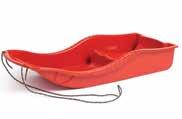
1. We love the staff at the Snake River Grill. There’s just a cozy vibe with the fireplace. If you get there early enough and it’s snowing outside, you can see it coming down outside. snakerivergrill.com

2. The cocktails at [Snake River] Sporting Club are some of the best in the valley; they serve them in the right glass and have the right ice cubes for each individual drink. I’ve always really enjoyed whatever concoctions they make. snakeriversportingclub.com/dining
3. In terms of hospitality, Kampai (shown below) is doing a great job. They’ve been so accommodating, squeezing in last-minute reserva tions for locals. kampaijh.com JH

JACKSON HOLE | WINTER 2023 47
REED MATTISON
BRADLY
J. BONER
LOCAL LIFE

Andrews
 HELLO
LAURIE ANDREWS
This community leader runs trails and nonprofits. //BY MAGGIE THEODORA
Laurie
HELLO
LAURIE ANDREWS
This community leader runs trails and nonprofits. //BY MAGGIE THEODORA
Laurie
48 WINTER 2023 | JACKSON HOLE
SARAH AVERILL
Laurie Andrews first visited Jackson Hole in the summer of 2001. A rock climber, she and three friends came here to climb the Grand Teton. She says she loved the climb, but that it wasn’t the highlight of the trip. Before re turning home, the group checked out Jackson. “It was a Saturday morning, and the farmer’s market was going on,” says Andrews, who, at the time, worked for The Nature Conservancy in Seattle. “I looked around and was like, ‘How does someone live here?’ The Grand was fun, but the community I saw at the farmer’s market was incredible.”
The following winter, on a ledge in the middle of a climb in New Zealand, An drews decided she wanted to do something different with her life, like move to Jackson. Serendipitously, around that time, a job opened in The Nature Conser vancy’s Jackson office. That June, less than a year after she had stood on the Grand’s 13,775-foot-tall summit, she moved to the valley. In the 20 years since, Andrews’s main sport has changed from climbing to running, which she often does with one or more of the four dogs she and husband, Perk Perkins, have. And, through her work at two area nonprofits, she has become an important part of the Jackson Hole community that she initially found so incredible.
After landing in Jackson, Andrews worked for The Nature Conservancy for two years and then moved on to work for the Jackson Hole Land Trust. During her 15 years at the Land Trust, a nonprofit that works to protect and steward the land scapes of northwest Wyoming, Andrews helped permanently preserve nearly 8,000 acres, including two acres in downtown Jackson, the preservation of which received donations from more than 5,500 locals (the Save the Block campaign), and R Park, a nonprofit park on the West Bank of the Snake River (see sidebar). In 2019 Andrews moved from the Land Trust to work as president of the Com munity Foundation of Jackson Hole, a nonprofit that provides philanthropic leadership for the valley and whose annual collaborative fundraiser, Old Bill’s Fun Run, has raised over $200 million for local nonprofits since its founding in 1997. “I came here for the place and the community and still pinch myself that after a day at work, I can go and run up Cache Creek or go for a hike,” she says. We got Laurie to share some of herself and what she loves about Jackson Hole.
LEFT: Laurie Andrews with her black Lab, Chico.
ABOVE: When the temperature dips below zero, Andrews brings out "Big Yellow." But she says she can tell it's much colder than zero in this selfie taken up Cache Creek because she also has on a hat and the jacket's hood is up. "It is a certain kind of zen to go running for two to three hours in negative 15 degree weather," she says. "It is hard to find running partners, but the dogs love it! The key is to keep moving."

JACKSON HOLE | WINTER 2023 49
Jackson Hole gives me the ability to have a wonderful career and interact with a wonderful community and also has the space I need for my mental health."
"
COURTESY PHOTO
LOCAL LIFE
LAURIE ANDREWS

One of the themes throughout my career, and life, is the bal ance of patience and persistence. I’ve never given a Ted or TedX talk, but I enjoy listening to them [see sidebar about Andrews’s favorite podcasts]. If I did do one, I think the subject would be this balance. I believe that, wheth er you’re climbing or running or orga nizing a campaign to save a property, you need to be patient, but also very persistent. There’s a juxtaposition of nudging things along, but, at other times, knowing to step back. People will come along when they’re ready. [Editor’s note—Andrews and her hus band knew each other for eight years before they started dating.]
If I didn’t do patience and persis tence, another thing I’d love to speak about is the power of community, which my career has really allowed me to experience. There is so much power in this community. I think about the Save the Block campaign, which had so many moving parts and was right up there with the stupidest things I ever agreed to do. But it was successful because the community came together—to agree that this space was a place that mattered to us and then, even though we didn’t have a single donor at the start, to raise more than $7 million in about five months. That was in 2019. And we pulled together during Covid, too.
We created a soft landing for each other. It wasn’t perfect, but we fig ured out how to help people stay in their homes, and we helped feed students when schools closed. What I picked up at the farmer’s market when I was visiting was real and runs so deep here.
As much as I love this community though, and something that often baffles people, is that I’m an introvert off the charts! I get overstimulated and have to recharge with alone time. Jackson Hole gives me the abil ity to have a wonderful career and in teract with a wonderful community and also has the space I need for my mental health.
R PARK
The only nonprofit park in Jackson Hole, Rendezvous Park—R Park—is 40 acres on the west bank of the Snake River near the intersection of Wyoming Highways 390 and 22. The park, part of which is a re claimed gravel pit, is owned and operated by the Jackson Hole Land Trust. Opened to the public in 2014, the park includes meadows, ponds in which kids can fish and all ages can practice their kayak rolls, hills for winter sled ding, wetlands, and Mama Mimi, a giant troll made from repurposed pallets and driftwood collected along the Snake River by Danish artist Thomas Dambo. Mama Mimi is interactive; you can walk on top of her extended leg to cross a creek. R Park is free to visit and open daily from sunrise to sunset. Dogs must be kept on leash and are only permitted on the marked loop trail along the park’s perimeter. Dogs are not permitted in the interior of the park.
50 WINTER 2023 | JACKSON HOLE
HELLO
AS TOLD BY LAURIE ANDREWS
BRADLY J. BONER
LISTEN UP
z “Podcasts are a new experience for me since Covid,” Andrews says. “They give me the feeling that I’m getting a window into the world.” Here are three of her favorites.

z The weekly NPR podcast Throughline speaks to history and how a piece of it affects the present, and you never know whether it will be about Afghanistan or something like the history of the game of Monopoly. Often I’ll look at the title and be like, “really?” I’ll give it 10 minutes, and by then, I’ll be fascinated. I didn’t think I cared about Monopoly, but it turns out I do. The game was invented by a woman, and that’s just one interesting thing about it.
z A new episode of the Ted Radio Hour comes out Friday morning. Each episode usually highlights three or four different-but-related Ted Talks. I’d never know to look at the Ted Talks featured, but they end up being mind expanding and some times bring me moments of pure joy.
z Brené Brown’s Dare to Lead features leaders speaking to strategic needs of organizations and teams, especially in these last two years where there has been no playbook. It’s a great list of the best-in-class for work and life lessons. I listen to Brown’s Unlocking Us when I am more in an exploratory mood; it can surprise me, and I get aha moments from it, and I love how it always starts with the person sharing their story—we all have a story, and it is such a good reminder to ask!
Intuitive Counseling


This is transformational work. Come with the intention to know and to allow the highest expression of yourself. Spirit will guide us.


WINTER RUNNING

“Running in the winter is such a different exercise than running at other times of the year, and it just makes me so happy,” says Andrews, who makes her own winter-specific running shoes by attach ing cleats meant for the soles of fishing shoes and waders to a newish pair of regular running shoes. “Fishing cleats aren’t actual spikes, but are instead hexagons,” she says. “So they grab but aren’t as deep as spikes.” (If you’re not up for making your own cleated running shoes, companies like Icebug make running shoes with deep lugs and studs for running on snow and ice.) Three of Andrews’s favorite winter runs are roads in summer, but in the winter “they are a wonderland,” she says.
“Drive as far as you can on the Gros Ventre Road and eventually you’ll hit a gate that closes it to cars. Start running here and go for as long as you want. It is peaceful and quiet.”
"I run the road to Granite Hot Springs 11 a.m. because after that it’s often busy with snowmobiles. Sometimes I’ll run the entire 11 miles [each way] to the hot springs [making a 22-mile total run].”
“The road up Mosquito Creek is also closed to cars by a gate in the winter. Snowmobilers and fat bikers use it past that and pack it down nicely for running.” JH
Design Consultation
Discern what constitutes a Soul-filled home for you, and create a beautiful environment that inspires & nourishes you and your loved ones.
JACKSON HOLE | WINTER 2023 51
“Mary Wendell” Lampton 307-413-3669 sacredspacestetons.com
Nurture your true nature through your
internal & external environments.
LOCAL LIFE
BRUUN
PAUL BRUUN Meet Jackson’s own fly fishermanfoodie-journalistpolitician.

 HELLO PAUL
HELLO PAUL
QA 52 WINTER 2023 | JACKSON HOLE
// INTERVIEW BY JIM STANFORD
BRADLY J. BONER
Paul Bruun caught his first Snake River fine-spotted cutthroat trout on upper Flat Creek in 1969. Thus be gan a lifelong passion for the region’s premier native fish and eventually a guiding career that spanned 37 years on the Snake. In 1973, the Miami na tive moved here to become editor of the Jackson Hole Guide. Today, at age 78, Bruun is nearing 50 years of writ ing for Jackson Hole newspapers, mostly about fishing and food, and his “Outdoors” column still appears every other week in the News&Guide Along the way, the “Fishin’ Politician” served 12 years on the Jackson Town Council. A Patagonia fishing ambas sador and the co-creator of the South Fork Skiff, a highly mobile fiberglass craft unlike any prior float-fishing boat, Bruun was inducted into the Fly Fish ing Hall of Fame in Livingston Manor, New York, in 2021, and he received the 2022 Izaak Walton Award from the American Museum of Fly Fishing for his contributions to the sport. Bruun answered some questions for Jackson Hole magazine readers.


PB: What struck me about my dad was he gave the same attention to the waiter, the bartender, the carhops, that he did to the hotel owners, the big entertainment stars, and big-time businessmen. He had time for every one of them, and he cared about every one of them. There was not a division of labor, or people. I thought, “That’s the way to treat people.”








JACKSON HOLE | WINTER 2023 53
Q: You grew up in a newspaper family, with your dad, “Big Paul,” publishing the Miami Beach Reporter. What did you learn about journalism from him?
LOCAL LIFE
HELLO PAUL BRUUN
Q: You were the first “outsider,” or non-native, elected to the Jackson Town Council. What made you think you could win?
PB: I had been going to city council meetings for years and writing about them. I also felt that if I worked harder than anyone else, I could do it. Going door to door, you learned an awful lot from people who would invite you in. You weren’t campaign ing, you were learning, taking an on-street course in communities.
Q: What accomplishments are you most proud of from your time in office?
PB: The Home Ranch, Snow King Avenue, Bruun Boulevard, building the new Town Hall. These weren’t easy, and they were expensive, but we had the luxury of doing it on our own time. Also, convincing Josie
Horn to donate Powderhorn Park for women’s softball and local architect Bob Corbett to design it—generous donations that have lasted.
Q: You’ve fished from Florida to the Yukon, Mexico, and Tierra del Fuego to New Zealand. What’s your favorite fish?
PB: You can’t have one answer to that—it’s like saying pick your favor ite child. For cold water, fresh water, the Snake River fine-spotted cut throat. Every time I go where they are, I am absolutely flabbergasted at how they survive the conditions they survive in. That’s a special fish. For warm water, fresh water, small mouth bass. He’s very clever. His diet is expansive, from tiny insects up to large baits. And they are so, so strong; and they’re found in a lot of very nice places. And for salt water, the common snook. He can be found along docks and seawalls, on reefs or
wrecks in the Gulf or the ocean, and he can be found in very fresh water rivers. He’s a fabulous athlete. And when they don’t want to eat, they don’t eat.
Q: Besides the outdoors, you wrote a longtime “Exit Eating” column about food. Your last supper?
PB: Stone crabs with malt vinegar, with coleslaw and hash browns.
Q: For many years you were a notorious bachelor. What was it like to find a love like Jean, who shares your passion for fishing, and get married at age 65?
PB: Of the things I can talk about intelligently, it is by far the greatest event of my existence.
“First and foremost is the Clouser Minnow maybe in three colors, or three sizes.” Bruun has fished this pattern, created by Pennsylvania fly shop owner Bob Clouser, around the world. He re lies on the artistry of his friend and master Jackson fly tier, Jay Buchner. “If I have to pick a fly and my life depends on it, you can bet Jay Buchner would have tied it. It’s going to be around a long time.” Tied with weighted dumbbell eyes and a bucktail body with strands of Krystal Flash, riding the hook point up, the Clouser Minnow is basically fly fish ing’s version of a jig, one of the most common and versatile lures for spin casters.

Bruun recalls how Bill Mason, owner of Snug Fly Fishing in Sun Valley, Idaho, used to joke that an angler only needs one fly, a Parachute Adams “and a pair of scissors!” At full size or when snipped, this versatile pattern, tied with a dubbed gray body of muskrat fur with a mix of grizzly and brown hackle fibers, can be an adult mayfly, caddis, midge, nymph, emerger, or wet fly. “It can be any thing. It’s really a fabulous fly.” Leonard Halladay originally designed the Adams on the Boardman River in Michigan.

Rounding out Bruun’s must-haves is the Pheasant Tail Nymph, created by Frank J. Sawyer in the north country of England. Tied with wire and bits of pheasant feathers, this fly can be effective in small spring creeks and even high-altitude lakes in the Wind River Mountains, south and east of Jack son Hole, where golden trout can make an angler look foolish. “It’s not guaranteed, but it’s the next best thing. If you have to have a closer, something you have enormous confidence in, it’s like calling up Aaron Judge.”
All three patterns are available at Jackson Hole fly shops, and, with a little internet sleuthing, anglers can learn how to tie their own during the cold winter months. Fly tier Buchner has posted how-to videos on YouTube, sells custom-order flies (307/733-4944), and teaches classes in February and March at JD High Country Outfitters. Contact the store at 307/733-3270 or jdhcoutfitters.com. JH

54 WINTER 2023 | JACKSON HOLE
3 FLIES TO SAVE YOUR LIFE 1 2
3
If I have to pick a fly and my life depends on it, you can bet Jay Buchner would have tied it. It’s going to be around a long time.”
"

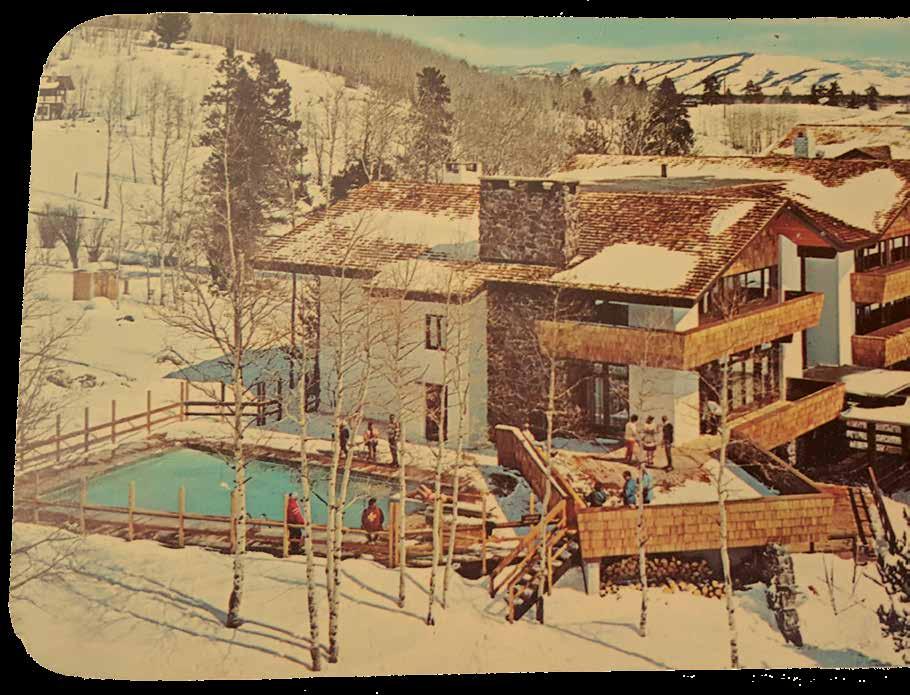
LIFE BLAST FROM THE PAST 56 WINTER 2023 | JACKSON HOLE TheAlpenhof TheAlpenhof
LOCAL
// BY TIBBY

No cows with bells will greet you at The Alpenhof Lodge in Teton Village, but basset hounds do bound out from beneath an array of European flags to welcome you to this Tyrolean-style hotel. At check-in here, you’re handed a ceramic key ring, not a plas tic card. You’re shown the ski locker, a com munal wooden room off the lobby, where you store your gear alongside fellow guests who are also enjoying the ’Hof’s European ways. These European ways also include al penhofffrühstück für hausgäste—aka break fast for lodge guests—eaten beneath Austri an-influenced painted ceilings in the lodge’s Alpenrose restaurant. (The Alpenrose serves breakfast, lunch, and dinner to guests and the public daily.)
“Our mission is six words—smiling faces, cozy rooms, hearty food,” says Mark Johnson, the lodge’s long-time manager and father to the basset hounds. “You can’t find a bet ter breakfast in Teton Village, or maybe any where in Jackson.” The only thing that Alpen hof guests rate anywhere near as highly as the breakfasts are the lodge dogs—currently 13-year-old Lucy, a golden retriever-basset


JACKSON HOLE | WINTER 2023 57
This Teton Village lodge provides all the cozy creature comforts you’d expect from a European ski chalet.
PLASSE
The Hof Band plays polka music weekly at The Alpenhof Lodge; it's one of the most enduring events on the West Bank.
RYAN DORGAN
LOCAL LIFE
BLAST FROM THE PAST
LEFT: To ensure the lodge looked authentically European, its founders made a case study of what an Alpine experience could be in Wyoming and used that to inform The Alpenhof’s custom furniture and the SwissGerman style of the rooms.

RIGHT: Guests enjoying the slopeside pool at The Alpenhof in 1985.

hound mix; and Bea, a basset hound. The Hof’s first dogs, golden retrievers Sam and Molly, arrived at the lodge in 2001. “There has never not been a dog here since,” Johnson says.
The Alpenhof Lodge is one of the last representations in Teton County of the European influence that dominated the rise of the ski industry in the U.S. in the 20th century. In 1965, when Dietrich and Anneliese Oberreit bought lot 2 in the small village coming together at the base of what is today Jackson Hole Mountain Resort, they envisioned a European-style “ski haus” both in terms of architecture and amenities. Ski enthusiasts who had dreamed of running a lodge that would honor their Swiss and Bavarian roots, the Oberreits didn’t have any experience in the hospitality industry, so they took correspondence courses in hotel manage ment. To ensure the lodge looked right, they made a case study of what an Alpine experience could be in Wyoming and used that to inform The Alpenhof’s carved and cut-out balconies and deck balustrades, custom furniture, and the SwissGerman vibe of the rooms, which is enhanced by quaint décor and painted walls.
In 2016, 61 years after it opened its doors to its first guests, The Alpenhof was
58 WINTER 2023 | JACKSON HOLE
COURTESY
PHOTO
placed on the National Register of Historic Places. It’s not just the lodge building that has serious history. “Everyone in town has worked for us at one point,” says Johnson. “I would say we’re in the running for some of the longest-running staff in town. Gail, our housekeeper, has been with us for 20 years.” Guests feel the same way. “The hotel has guests that have been coming for 40 years,” Johnson says. “It’s a traditional Alpine experience, and you can’t find that anymore.”
The Hof creates a European feel not only with its architecture and décor, but also with what’s on tap and on the menu. Few, if any, other places in Wyoming have a mug club that’s served in steins, liters of Franziskaner and Steigel Grape fruit Radler on tap, fondue, apfelstreudel—apple strudel made from a house rec ipe that includes cranberries and almonds and is served with crème Anglaise— and a polka night every Wednesday the deck is open. The latter, one of the most enduring events on the West Bank, grew out of a bet between friends. Johnson explains: “Local musician Peter Chandler, who we all know as Chanman and for his reggae, well I bet him one night that he couldn’t play polka—and he has cer tainly proved me wrong.” alpenhoflodsge.com JH




JACKSON HOLE | WINTER 2023 59
The Alpenhof in the early 1970s.
BOB WOODALL
BOB WOODALL


PEAK
PROPERTIES
The factor that makes the Jackson Hole real estate market so unusual is the relative scarcity of private land. Ninetyseven percent of Teton County, Wyoming, is publicly owned—either national park, national forest, or wildlife refuge. This computes to just 75,000 privately held acres in a county spanning 2.5 million acres. The guaranteed open spaces and unobstructed views these surrounding public lands afford make the remaining private land a real treasure. Add the abundance of recreational opportunities found in and around the valley, and the quality of life one can enjoy in Jackson Hole is simply unbeatable.
Moreover, many of the properties featured here are secluded, scenic retreats located in the midst of prime wildlife habitat. Most existing and prospective property owners in Jackson Hole cherish this notion, and serve—or will serve—as stewards of nature.
One cannot put a dollar value on waking to the Teton skyline, skiing home for lunch, or listening to a trout stream gurgling through the backyard. In Jackson Hole, “living with nature” is not a fleeting, vicarious experience a person has while watching TV. Here it’s a fact of life, and we wouldn’t have it any other way.
UNIQUE OFFERING IN HOBACK JUNCTION
22-1884 BEDROOMS BATHS DOLLARS MLS# AT A GLANCE SQUARE FEET
TRUE
Great opportunity for a three-level townhouse in the heart of Jackson. Over 1,800-square-feet of living space seconds to everything downtown Jackson Hole and Snow King have to offer. Garden, 2 bedrooms/2 baths, large living and kitchen space with views up to Snow King Resort.
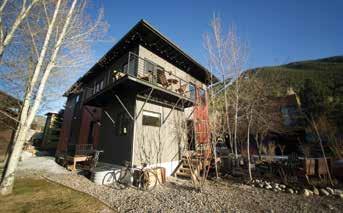

JACKSON HOLE SOTHEBY’S INTERNATIONAL REALTY Rob Deslauriers • 307/413-3955 rob@deslauriersrealestate.com robdeslauriers.com
SKI-IN SKI-OUT IN TETON VILLAGE
2,262 SQUARE FEET
22-2934 AT A GLANCE
Sited on .33 acres with views of the Snake River, the home offers a 1,500 sq.ft. upper level main home, completely remodeled, with 3 beds, 2 baths, 2 car garage, and a spacious deck overlooking the yard and Snake River. The lower level offers a self-contained 756 sq.ft. apartment with 1 bed/1 bath. The two units can be used together to make 1 larger home or function independently with separate entrances, laundry, and parking. Commercial zoning. Seller is a Wyoming real estate licensee.

BUDGE
KELLEY REALTY GROUP
Keller Williams Jackson Hole
COLDWELL BANKER MOUNTAIN PROPERTIES Jim Kandolin • 307/413-4546 jim.kandolin@cbmp.com jacksonholewy.realestate
62 WINTER 2023 | JACKSON HOLE
ADVERTISING FEATURE
4 3 1,500,000
Rebekkah Kelley • 307/412-5294 rebekkah@budgekelley.com budgerealtygroup.com BEDROOMS BATHS DOLLARS MLS#
Stunning turnkey property in one of the most convenient locations in Teton Village. Steps away from the Moose Creek chairlift, it’s easy to ski in/out of this well-designed home. This spacious townhome is filled with large windows and glass doors, featuring 3 levels, 4 bedrooms with vaulted ceilings, 4 full upgraded baths, 2 balconies, and a main level with wood-burning fireplace. Offered furnished with strong rental history. Sundance Tennis and Swim Club member ship available.
2,472 4 4 4,795,000 22-821 BEDROOMS BATHS DOLLARS MLS# SQUARE FEET AT A GLANCE 662 S MILLWARD STREET
1,872 2 2
1,450,000
GROS VENTRE NORTH CONTEMPORARY
Panoramic, unobstructed views of the Tetons frame this stunning mountainside residence. A multi-year renovation by CLB Architects transformed the home into its current elegant and light-filled state. Terraced gardens and large entertaining spaces are easily accessed from nearly every room. The structure blends perfectly with its natural sur roundings atop Gros Ventre North, one of Jackson Hole’s only gated communities and centrally located to Jackson, Wilson, and JHMR. Indoors, high ceilings and massive windows deliver dreamlike Western views.

,JACKSON HOLE SOTHEBY’S

REALTY
Vaughn Sassi • 307/203-3000 huffvaughnsassi@jhsir.com
IN JACKSON HOLE
Located at 3 Creek Ranch, Jackson Hole’s finest private community, this new home offers 6 bedrooms and 5.5 baths with water on three sides of the lot. An elegant combination of stone and barn wood with copper on the outside and white oak, rustic beams, and black accents on the inside. Large first floor primary bedroom overlooking water with another downstairs bedroom that could also be an office or second den. Four upstairs ensuite bedrooms, two with private balconies.

JACKSON HOLE SOTHEBY’S
REALTY Barbara Allen • 307/413-3510 barbara.allen@jhsir.com
An impeccable 23.66-acre parcel is situated atop Saddle Butte just above the heart of Jackson. This blank canvas is ready for you to design your dream home with unobstructed views of the entire Teton Range. The fully paved meandering road guides you to the top where the setting gives you the sense that you are truly living among the Rocky Mountain peaks. You will be able to enjoy hiking out your back door while also being conveniently located a short jaunt to town below. KELLER WILLIAMS JACKSON HOLE Cindee George & Kelsey Spaulding Real Estate Group 307/690-3996 team@jhreteam.com jhreteam.com
This 5.72-acre lot with uninterrupted Teton views, two creeks, a pond, and private access to over a mile of the Snake River feels secluded but is only 10 miles from downtown Jackson. Adjacent to Grand Teton National Park and next to the Snake River; home to more wildlife than humans; and in the literal shadow of the Tetons. See the listing website: SolitudeVista.com LIVE WATER JACKSON HOLE Latham Jenkins/Associate Broker • 307/690-1642 latham@livewaterproperties.com livewaterjacksonhole.com

JACKSON HOLE | WINTER 2023 63 ADVERTISING FEATURE
INTERNATIONAL
Huff
mercedeshuff.com 5,158 5 5 12,500,000 22-821 BEDROOMS BATHS DOLLARS MLS# SQUARE FEET AT A GLANCE MOUNTAIN MODERN AT 3 CREEK RANCH
INTERNATIONAL
4,646 6 5.5 10,900,000 22-1732 BEDROOMS BATHS DOLLARS MLS# SQUARE FEET AT A GLANCE TOP OF THE WORLD
—
BEDROOMS BATHS DOLLARS MLS# ACRES AT A GLANCE
23.36
6,750,000 22-2761
SOLITUDE VISTA
—
BEDROOMS BATHS DOLLARS MLS# ACRES AT A
5.72
2,995,000 22-1741
GLANCE
SWEEPING VIEWS IN MOULTON RANCHES



Bordering Grand Teton National Park with Teton views and water features, this custom home in Moulton Ranches on 2.6 acres has full-perimeter fencing and 360-degree sweeping views including the Grand Teton and Sleeping Indian. Great open floor plan and spacious rooms are found throughout the 3,652-square-foot home. Complete with a gourmet kitchen, 3 bedrooms, a fully finished basement, separate caretaker/rental unit, and lovely outdoor patio spaces. Seller will consider owner financing.
MOUNTAIN STANDARD REALTY TEAM AT COMPASS Doug Herrick • 307/238-2512 dherrick@jhrealestate.com mountainstandardrealty.com
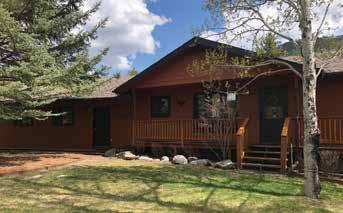
Residence 5B is a grand, three-bedroom, three-and-a-half bathroom loft converted to an incredible two-bedroom, two-and-a-half bathroom home with soaring 12-foot ceilings and a one-of-a-kind corner layout in the building. Occupying the highest non-penthouse floor, 5B features northern and eastern exposures across 15 windows with treetop views and incredible light. Two split principal suites flank the living room, each with an en-suite bathroom and oversized closets. A unique opportunity for a discerning buyer in one of Manhattan’s most desirable and vibrant neighborhoods.
NICK GAVIN PROPERTIES / COMPASS Nick.gavin@compass.com
2,800,000 22-2382
MLS#
40 AT A GLANCE SOLD! SERENE
Beautiful 40-acre parcel bordering the Bridger-Teton National Forest. The land offers complete privacy, elevated mountain and valley views, room for horses, an end-of-theroad location, and gentle topography. Located on a high plateau, Bridger-Teton National Forest wraps around two sides of the property creating a private and expansive feel while also allowing for incredible recreational access right out your door. The property has year round access and is a great location in the Jackson Hole valley.
KELLER WILLIAMS Nancy Martino, Associate Broker, CRS, GRI 307/690-1022 nancymartino@kw.com AT A GLANCE SQUARE
FEET
64 WINTER 2023 | JACKSON HOLE
BEDROOMS BATHS DOLLARS MLS# AT A GLANCE SQUARE FEET ADVERTISING FEATURE CORNER
3,462 4 4 4,395,000 22-2074
LOFT IN DOWNTOWN MANHATTAN
BEDROOMS
DOLLARS
2,408 2 2.5 9,750,000
BATHS
MLS# AT A GLANCE SQUARE FEET 40 ACRES IN GAME CREEK
—
BEDROOMS BATHS DOLLARS
JACKSON HOLE SOTHEBY’S INTERNATIONAL REALTY Spackmans and Associates • 307/739-8156 spackmans@jhsir.com ACRES
HOBACK RIVER VIEWS
A short drive from town, this lovely home provides a quiet place to enjoy a casual lifestyle. Surrounded by the convenience of shopping, schools, your favorite restaurant, and town amenities, yet minutes from hiking trails, fishing, and captivating mountain views. A large south facing deck overlooks the Hoback River and provides a perfect place to enjoy your morning coffee or afternoon and evening entertaining.
BEDROOMS BATHS DOLLARS
2,400 3 3 1,475,000 21-1672
MLS#

Jackson Hole’s destination for LUXURY real estate. MEET OUR LUXURY PROPERTY SPECIALISTS: WWW.jacksonholewy.REALESTATE 1160 alpine lane, 1f jackson, wy 83025 307-732-0943 jackson Angel Fire • Breckenridge • Crested Butte • Frisco • Jackson Hole • Santa Fe • Star Valley • Taos • Teton Valley • Vail • Winter Park At Coldwell Banker Mountain Properties, our agents combine unparalleled knowledge of the Jackson Hole market with best-in-class luxury real estate expertise, creating a truly exceptional experience for our clients.

ENJOY
ARTS, CULTURE, FOOD, AND DESIGN


JACKSON HOLE | WINTER 2023 67
COURTESY OF TETON THAI
// BY LILA EDYTHE
Places to Eat in Teton Village
Read this guide to learn where to go—and whether you can roll in wearing your ski boots or will want to change into shoes.

68 WINTER 2023 | JACKSON HOLE 6 FOOD ENJOY
RIGHT: The New York strip steak at Osteria.
LEFT: The full menu is available at Osteria's bar.
RESTAURANT
IL VILLAGGIO OSTERIA serves lunch and dinner in a cozily chic space inside Hotel Terra at the base area.


ON YOUR FEET
Lunch is definitely a ski-boots-on crowd. Dinner, less so. Après at the marble-topped bar goes either way.
FOOD
Although “best pizza in the valley” is a highly, and hot ly, contested topic among locals (and also dependent on personal taste), Osteria has to be on everyone’s list for having great pies. Its dough is made from flour im ported from Italy and baked on a stone hearth, and the resulting crust is neither thin nor deep, but perfectly in between; it’s got enough substance to be a little chewy, but not too chewy. In the winter, pizza options include the Morbido (a meat lover’s fantasy with sopressata, sau sage, prosciutto, and speck) and a pizza topped with pis tachio, Mortadella, pulled mozzarella, olives, artichokes, roasted tomatoes, bechamel sauce, parmigiana, lemon zest, and pesto. But don’t ignore the rest of Osteria’s menu. If you see fried olives stuffed with housemade sausage, you should definitely order those. Choices for entrees include a New York strip topped with butter and served atop shaved fingerling potatoes and Creste Rigate pasta (housemade pasta with black garlic, mushrooms, chives, white wine, and pecorino). Kendra Alessandro, director of communications for Fine Dining Restaurant Group, says the Creste Rigate pasta is one of her person al favorites and “a classic staple that locals love to order. If it were taken off the menu, we would hear about it.” 3335 Village Dr.; 307/739-4100, jhosteria.com
JACKSON HOLE | WINTER 2023 69
COURTESY OF FINE DINING RESTAURANT GROUP
COURTESY OF FINE DINING RESTAURANT GROUP
ENJOY FOOD

TOP: Sliders at Piste Mountain Bistro.

BOTTOM: All of the tables in Piste have views, of ski runs and/ or the Gros Ventre mountains on the east side of the valley.
RESTAURANT
ON YOUR FEET
Ski boots on. Fueled from lunch here, you should have the energy for a couple more laps on the Casper, Marmot, or Thunder lifts, all of which are nearby.
FOOD
Jackson Hole Mountain Resort has prioritized seasonality and sustainability in its menus for more than a decade, and no JHMR eatery highlights local farms and growers more than Piste Mountain Bistro. The list of local suppliers of pro duce and meat on its menu is almost as expansive as the views out its walls of windows (ask for a table at the south end of the restaurant if you want to look out at Corbet’s Couloir; go for a table on the east for views of Sleeping Indian). Local purveyors include Idaho’s Cosmic Apple Gardens, Snake River Farms, and 460 Bread and Wyoming’s Vertical Harvest, Haderlie Farms, Mead Ranch, and Lockhart Cattle Company. Working with Vertical Harvest means that, even in winter, the salads here are as killer as anything beef-related, whether a slider or ribeye. Top of Bridger Gondola; 307/733-2292, jacksonhole.com
RESTAURANT
THE MANGY MOOSE includes the Mangy Moose Saloon, consistently recog nized as one of the country’s best après-ski bars; a steakhouse that serves dinner; a lounge with the only public pool table in Teton Village; and a downstairs cafe that serves breakfast, lunch, après, and dinner.

ON YOUR FEET
Of course ski boots are welcome at the après-ski bar and cafe. If you’re heading to the steakhouse, ski boots off.
FOOD
When the Moose opened in 1967, it was pretty much the only place to eat in Teton Village. Nowadays, there are plenty of choices, but the Moose is still a must-visit. To guarantee you can order the housesmoked Wyoming beef prime rib for din ner at the steakhouse, get an early reserva tion. They do often sell out. Other options include spicy elk brats, bison meatloaf, a lamb gyro, and a New York strip steak sourced from nearby Lockhart Cattle Com pany. Whether you’re in the saloon for lunch, après, or dinner, you can’t go wrong with the nachos, which are impressive for both their quantity and quality—wash them down with a spicy margarita. If you have a margarita too many, the burger and chili are best for soaking up excess alcohol. In the cafe, if you share with your friends, you can get the carne asada tater tots, piz za, and an assortment of tacos. 3295 Village Dr.; 307/733-4913, mangymoose.com
70 WINTER 2023 | JACKSON HOLE
PISTE MOUNTAIN BISTRO is a chic alpine restaurant serving lunch at the top of the Bridger Gondola.
COURTESY OF JHMR
COURTESY OF JHMR
The nachos at the Mangy Moose are legendary.
COURTESY OF DISHINGJH
RESTAURANT
Adjacent to the Ranch Lot, a five-minute shuttle ride or walk from the base of the tram, TETON THAI does not take reservations and serves lunch and dinner in a warm, woody space.

ON YOUR FEET
Ski boots can definitely stay on here, but a benefit of Teton Thai’s location (next to a parking lot) is that it’s easy to grab your comfy shoes from your car.
FOOD
Voted the best Thai Food/Asian Cuisine eight years running in the annual Best of Jackson Hole awards, the family-owned Teton Thai serves the Thai dishes you're likely familiar with—Laab, Tom Yum Goong, Pad Thai, Pad Woon Sen—and these are great here, especially when paired with a signature cocktail like the Old Bang kok (Bulleit 95 Rye, Thai tea, and bitters, garnished with an orange peel). But where Teton Thai really shines is in dishes like Crying Tiger, marinated beef with num jim jow (a tangy and sweet sauce), the crispy duck curry (also available with roasted duck), or Gavin’s Soup, which is inspired by and named after the co-founder of Os teria, another Teton Village restaurant. This hot-and-sour ricenoodle soup has lemongrass, mushrooms, bean sprouts, cilantro, lime, tomatoes, kaffir leaves, and galanga; whether it also includes chicken, beef, or pork is your choice. Stir-fried green beans sound simple, but here they’re anything but. If you find yourself here for après (3–5 p.m.), signature cocktails are $10 and draft beers $2, and nothing will taste better after a day of skiing than the Thai Street Ribs. 7342 Granite Loop Rd.; 307/733-0022, tetonthaivillage.com
TOP: Teton Thai is almost always packed.
ABOVE: Salad rolls with peanut sauce and a signature cocktail, Something Nice, at Teton Thai. (Something Nice is not to be confused with another signature cocktail, Something Naughty.)

JACKSON HOLE | WINTER 2023 71
COURTESY OF TETON THAI
COURTESY OF TETON THAI
The interior decor of the Westbank Grill was recently updated; its status as one of the best steakhouses in the valley remains unchanged.


RESTAURANT
ON YOUR FEET
The Four Seasons would never tell you to change out of ski boots, but they don’t really go with the elegantly organic look of this newly remodeled space.
FOOD
Westbank Grill has a fairly large menu (for both breakfast and dinner). For break fast you could get buttermilk pancakes, yogurt and housemade granola, or Eggs Benedict. For dinner, there are scallops and pasta. But, at its heart, Westbank Grill is a steakhouse. If you eat meat, you should do that here. There’s a breakfast burrito stuffed with Wagyu beef hash. The steak options at dinner range from a 40-ounce Wagyu beef T-bone to a dry-aged Piedmontese beef ribeye, a Wagyu flat iron, and a corn-fed tenderloin. The latter, whether the 6- or 8-ounce por tion, topped with smoked blue cheese and caramelized onion and with a side of brandy peppercorn sauce, is perfection. If you’re looking for something be yond beef, Westbank’s dinner menu also has rack of lamb, bison tenderloin, and an elk chop. Any appetizer, salad, or entree here that includes pork belly is worth considering, even if you don’t think you like pork belly. This kitchen cooks it per fectly—crispy on the outside, tender inside. The wine list is extensive, but the most unique drink offering is a flight of whiskey-based cocktails—a Manhattan, an OldFashioned, and a Boulevardier—made with Wyoming Whiskey. 7680 Granite Loop Rd.; 307/732-5000, fourseasons.com/jacksonhole
FOOD
ENJOY
WESTBANK GRILL, the fine-dining restaurant inside the ski-in/ski-out Four Seasons Jackson Hole, serves breakfast and dinner.
COURTESY OF FOUR SEASONS RESORT AND RESIDENCES JACKSON HOLE
72 WINTER 2023 | JACKSON HOLE
COURTESY OF FOUR SEASONS RESORT
RESTAURANT
Perched at 10,450 feet on the summit of Rendezvous Moun tain and reached by riding the tram, CORBET’S CABIN is the only mountaintop hut in Jackson Hole; it’s open from 9 a.m. to 3 p.m.

ON YOUR FEET




Ski boots rule here, although non-skiers can buy a sightsee ing ticket, ride the tram for the experience and views, and enjoy a waffle, too.

FOOD




The choices here are limited (this historic cabin doesn’t have running water, after all), but what is on offer—a selec tion of made-to-order waffles—is pretty much perfect given its location. If there’s a better snack to enjoy during a moun taintop break from skiing than a waffle, we’ve yet to eat it.
On the typical winter day, the staff here makes between 400 and 500 waffles on a classic carbon Golden Malted waffle baker. Because there’s no running water, the waffle batter is made in the base area of the resort and brought up on the tram. There are five choices of toppings, and each waffle is served wrapped in foil for easy consumption (and protec tion if you want to stuff half in your jacket pocket for later): strawberry, brown sugar butter, Nutella, bacon and peanut butter, or lemon glaze and powdered sugar. Yes, you can combine Nutella with bacon and peanut butter. Top of the JHMR tram; 307/739-2688, jacksonhole.com/waffles JH

JACKSON HOLE | WINTER 2023 73
There are five choices of waffle toppings at Corbet's Cabin, a historic log cabin at the top of Rendezvous Mountain.
COURTESY OF JHMR
COURTESY OF JHMR
PHOTOGRAPHY BY BRADLY J. BONER
// BY SUE MUNCASTER
460BREAD
ABOVE FROM LEFT: Spreading flour on cutting boards while shaping dough; fresh-baked loaves of bread rest on a rack; bakers shaping loaves.
When I asked my two visiting grand nieces (two- and five-years-old) what they wanted from the supermarket, they both shouted “raisin bread!” They didn’t know this, but my neighborhood market, Victor Valley Market, stocks amazing raisin bread, courtesy of Teton Valley-based 460 Bread. But raisin bread is among 460 bread’s most popular loaves, so heading there from my home, I hoped there was a loaf left. There was. Back at home, I slathered toasted slices with butter. When the girls headed home a few days later, they left with four frozen loaves we’d had to visit two different grocery stores to find.
Now, sharing this story with 460 Bread’s new ish owner Ben Ellis—he and wife, Shannon, bought the bakery in 2020—he laughs but isn’t surprised. “Mass-produced raisin bread is usually just white bread with a lot of sugar and some rai sins thrown in,” he says. The raisin bread at 460 is made with an artisan wheat dough with a levain starter and sponge preferments. This combina tion builds the taste, texture, and acidity that give each loaf a rich flavor. “Commercial bakeries do this with chemicals, preservatives, and antifun gals that only contribute to the [bread’s] ability to sit on a shelf,” Ellis says.
Although people have been baking bread for around ten thousand years, artisan bread today is often high-tech. Like the first bread bakers, 460 Bread makes hearth breads—breads baked in stone ovens without a pan. Its stone, which is giant, is inside a German-designed, Czech-built



convection oven the size and shape of a Jack son Hole Mountain Resort tram car. Bakery cofounder Jarod Pfeiffer brought this oven, called a deck oven, because it maintains the perfect tem perature to bake baguettes (within 1 degree). A Japanese dividing machine makes sure every bri oche bun is a consistent size. The next big piece of equipment Ellis hopes to install is a slicing and bagging machine.
As high-tech as the equipment can be, 460’s in gredients are simple. But that doesn’t necessarily mean they’re easy to find. “Each ingredient has a story,” Ellis says. “We live in a breadbasket for ar tisan breads where you want mostly low-protein winter wheat. Idaho and Montana mills provide most of what we need." The bakery sought out a sustainable source of olives from Italy via a dis tributor in Denver.
The bakery sells to grocery stores, markets, and restaurants. It makes approximately 40 dif ferent bread products daily, using between 7 and 11 different types of dough. Between five and sev en of 460’s breads—including French baguettes, sourdough, ciabatta, olive-thyme, my grand nieces’ favorite raisin bread, and brioche burger buns—are available at grocery stores and mar kets including Whole Foods, Albertsons, Pearl Street Market, and Smith’s in Jackson; Aspens Market and Base Camp in Wilson; and at Victor Valley Market, Barrels & Bins, and Broulim’s in Teton Valley. The 30-some other breads are made to different restaurants’ specifications. A total of
ENJOY JH PANTRY 74 WINTER 2023 | JACKSON HOLE
This Driggs-based bakery mixes ancient traditions with local ingredients and high-tech equipment.
//
projects, was looking for a new work challenge. Today Pfeffer and Mack stay involved as advisors.
150 restaurant clients includes Sweet Cheek Meats, Trio, Gather, Jackson Hole Mountain Resort, the Snake River Grill, and Grand Targhee. (For Grand Targhee, 460 is working with chef Eric Gruber to make a bread with artisan russet potatoes.) “This business is like a puppy,” Ellis says. “It’s like a living thing we are shepherding. From the delivery drivers to the yeast strains, we’re just trying to care for them and direct them so they can reach their potential.” JH

JACKSON HOLE | WINTER 2023 75
ENJOY
TASTE OF JACKSON HOLE
// BY SUE MUNCASTER
Lamb at The Blue Lion
Rack of lamb has been on the menu at the Blue Lion for more than 40 years. On the restau rant’s busiest nights, as many as 40 of the 120 entrees served are this $75 dish—an epic eight-bone rack of New Zealand lamb roasted in a Dijon-herbed bread crumb crust served over a creamy fresh peppercorn sauce with wild rice, seasonal veggies, and a side of jalapeño mint jelly.
In a house across the street from Miller Park a couple of blocks from the Town Square, the Blue Lion opened in 1976 with French-trained chef Karen Scott as owner/chef. Local lore is that the restaurant’s name came from Scott. According to the restaurant’s website, she was “sad and blue that she finally had to go to work, and her birth sign was a Leo; thus, the Blue Lion.” In 1978 Ned Brown bought the restau rant. He originally wanted to do BBQ or Mexican cuisine but decided to keep the French-bistro-finedining vibe. Brown owned and ran the restaurant until 2021, when Jackson-based Blue Collar Group bought it.
New owners often like to shake things up, but Blue Collar knew that wasn’t the move for the Blue Lion. “From the beginning, we have been committed to keeping the historic dishes the same,” says culi nary director Jeremy Williamson. “With 50 to 60 per cent of our total clientele being local residents, some of whom have standing reservations on the same day for weeks into the foreseeable future, why change?”
There was one small change in the rack of lamb, though: the restaurant swapped out the baguettes used as the basis for the dried-herb breadcrumbs that coat the rack. It now uses baguettes baked lo cally by 460 Bread. When asked why it doesn’t use locally raised Idaho or Wyoming lamb, Williamson says, “There’s simply no substitute for the taste of the New Zealand meat.”

INSIDER TIP:
Dine here with a friend and encourage them to order the Huckleberry Scallops. (We’re assuming you’ll order the rack of lamb.) Share entrees and you’ve got the best “surf and turf” in the valley.
76 WINTER 2023 | JACKSON HOLE
COURTESY OF DISHINGJH
ROASTED RACK OF LAMB WITH PEPPERCORN CREAM SAUCE AND JALAPEÑO MINT SAUCE
6 servings
FOR THE LAMB
6 racks of lamb
1 cup Dijon mustard
2 cups breadcrumbs
1 stick (1/4 lb.) melted butter
Preheat the oven to 350 degrees. Brush each rack with Dijon mustard and roll in breadcrumbs. Arrange the racks on a baking sheet and drizzle with melted butter. Bake until medium-rare (inside meat tem perature should be 120 degrees F, which should take approximately 20–30 minutes). Let sit for 5 minutes, slice into chops, serve over peppercorn cream sauce, and pass the jalapeño mint jelly.

PEPPERCORN CREAM SAUCE
10 cups chicken or beef stock with fat removed
2 cups Burgundy, Cabernet Sauvignon, or Pinot Noir wine





2 tbs. brandy


1 tsp. shallots, minced
1 tbs. mixed peppercorns, coarsely crushed
1 tbs. fresh rosemary, chopped
2 cups heavy cream
Salt to taste
Bring the stock to a boil in a saucepan and reduce to 1 cup. Bring the wine, brandy, and peppercorns to a boil in a separate saucepan and reduce to one cup. Combine with the reduced stock. Continue to boil until the sauce is reduced again to one cup. Add the rosemary and salt to taste (the sauce can be prepared in advance up to this point and reheated over medium heat). Add the cream and heat slowly until thickened.
JALAPEÑO
MINT JELLY
1/2 cup water
3/4 cup sugar
2 tbs. crème de menthe


1 1/2 cups fresh mint, chopped
3 fresh jalapeños, seeded and chopped
1/4 cup cold water
1 tsp. gelatin powder
In a saucepan, combine water, sugar, and crème de menthe over medium heat and stir until sugar is dissolved. Add the fresh mint and ja lapeños and bring to a boil. In a separate small saucepan, whisk the cold water with the gelatin and heat slowly over low heat just until the gelatin is dissolved. Mix the gelatin with the mint mixture and stir thoroughly. Refrigerate overnight until set. Stir before serving. JH

JACKSON HOLE | WINTER 2023 77
ENJOY ART
A National Treasure
Steady in its mission, the National Museum of Wildlife Art continues to adapt and evolve to meet modern demands for accessibility, diversity, and excellence.
 // BY RACHEL WALKER
// BY RACHEL WALKER
78 WINTER 2023 | JACKSON HOLE
Rising from the hillside only a few miles north of Jackson’s Town Square, the National Museum of Wildlife Art blends into the landscape so seamlessly that it could be easy to miss. The museum’s driveway is marked with five bronze elk and an unassuming sign, and the building, clad in Idaho quartzite and inspired by the ruins of Slains Castle in Aberdeenshire, Scotland, only peeks out over the hillside. But turn onto Rungius Drive, and you’ll soon land at a national treasure—literally. In 2008, the U.S. Congress designated the museum the “National Museum of Wildlife Art of the United States,” and today it remains the coun try’s only museum dedicated entirely to wildlife art.

“Visitors often remark that they had no idea of the depth and breadth of this collection,” says museum director Steve Seamons. “They come expecting something different and not really antici pating a world-class collection of art in a variety of mediums.”
The museum's Sculpture Trail includes these two pieces by Stewart Steinhauer. © Stewart Steinhauer (Saddle Lake Cree Nation, b. 1952), Buffalo Mountain, 2015. Little Buffalo Mountain, 2015. Purchased with Funds Donated by Lynn and Foster Friess with additional assistance from the National Museum of Wildlife Art Acquisition Fund.


JACKSON HOLE | WINTER 2023 79
Rosa Bonheur (France, 1822–1899), Chamois Mother and Baby, 1888. Oil on canvas. 10 1/4 x 13 ¼ inches. Gift of the 2003 Collectors Circle, National Museum of Wildlife Art.
COURTESY OF NATIONAL MUSEUM OF WILDLIFE ART
COURTESY OF NMWA
COURTESY OF NMWA
Bart Walter (United States, b. 1958) Wapiti Trail, modeled 2005, cast 2007. Bronze. Life Size. Anonymous Gift, National Museum of Wildlife Art. © Bart Walter.
ENJOY ART
ABOVE: Thomas Moran (England, 1837–1926), Eternal Snows of Mount Moran, Teton Range, c. 1912. Oil on canvas. 25 x 30 inches. Gift of Lynn and Foster Friess.
MIDDLE: Carl Rungius (Germany, 1869–1959), American Black Bear, 1929. Oil on canvas. 61 x 76 inches. Gift of Jackson Hole Preserve/ Laurence S. Rockefeller, National Museum of Wildlife Art. © Estate of Carl Rungius.

BOTTOM: Rosa Bonheur (France, 1822–1899), Tiger, n.d. Watercolor on paper. 11 1/2 x 17 1/2 inches. Gift of Fred King, Sportsmen’s Edge Gallery, National Museum of Wildlife Art.
Founded in 1987, the 51,000-squarefoot museum consists of 14 galleries, a restaurant (Palate), and a research li brary. The permanent collection holds more than 5,000 artworks that date from 2500 B.C.E. to the present and includes work by luminaries. Georgia O’Keeffe’s Antelope, an oil painting on canvas, depicts an antelope skull half submerged in the sand against a pastel sky. The museum also owns Endangered Species by Andy Warhol, an influential series of 10 silkscreen prints of nearly extinct animals the artist created in 1983. (These prints are not on regular display because of their sensitivity to light.) Two Lions by Theodore Gericault, a French artist who died in 1824 at the age of 32, is one of only 21 Gericault works in American museums.
The museum’s recent acquisition of Eternal Snows of Mount Moran by Thomas Moran activated a healthy debate about what constitutes wildlife art, primarily because the dramatic and stunning oil painting contains no animals. Museum

"
officials welcome this debate. Their po sition is that landscapes and ecosystem portraits are part of the genre; without the wild, there would be no wildlife. To that end, officials say that even plants— in fact, all living organisms—constitute wildlife. Eternal Snows of Mount Moran, gifted by Lynn and the late Foster Friess, is a powerful, awe-inspiring piece. The painting’s permanent location so near to the actual eponymous peak underscores the synchronicity of art and nature that helps support the museum’s mission to inspire and educate.
Equally impressive is the museum’s Carl Rungius collection, the largest in the United States. Rungius (1869–1959) mostly painted wildlife of the Rocky Mountains in Wyoming and Alberta, Canada, and is considered North Amer

ica’s premier wildlife painter. In 2020, the museum embarked on the devel opment of the Carl Rungius Catalogue Raisonné, an enormous undertaking that will result in a comprehensive, an notated listing of all the known works of the artist. Not only will the project make a lasting impact on scholarship, but it will also culminate in the publica tion of a Rungius Masterworks book and a touring exhibition, further raising the profile of the museum.
“Visitors and locals come to Jackson to experience wildlife and the natural world around us,” says Seamons. “We provide our visitors the perfect oppor tunity to see wildlife depicted in the world-class art included in our collec tion, and to benefit from the diverse educational offerings we provide for visitors of all ages.”
And, in the wake of Covid-caused disruption, the museum has launched a variety of new programs to engage ever more visitors. At the height of the pandemic, it launched an online art-
making class called Make it Wild. A different artist teaches each class, and the series’ popularity inspired officials to continue it even as Covid restrictions lifted and in-person events again be came possible.
The museum was uniquely—and coincidentally—prepared for Covid shutdowns in March 2020, having al ready embarked on creating and pro ducing Bisoncast, an educational video series. Short films that are roughly 15 minutes long, each episode tells the story of a work (or two) in the museum’s permanent collection and how it re flects the real-life natural world in and around Jackson Hole. Museum staff first brainstormed Bisoncast in 2019, and to date have produced six videos with plans to create more, says Sugden
80 WINTER 2023 | JACKSON HOLE
Visitors and locals come to Jackson to experience wildlife and the natural world around us."
—NMWA DIRECTOR STEVE SEAMONS
COURTESY OF NMWA
COURTESY OF
NMWA
COURTESY OF
NMWA
chief curator of education Jane La vino. This program, along with Make it Wild, underscore the value in creat ing programming that can reach an audience beyond Jackson Hole. They also offer an opportunity for visitors to the valley to continue to engage with the area even once they’ve returned home, Lavino says.
“There are many people who may never make it out here to visit the mu seum in person, so the next best way is to experience it virtually,” Lavino says. “The good thing about being forced to rethink some of our methods during the pandemic was that we realized that there are times when reaching a virtual audience makes a lot of sense.”
In November 2021, the museum was able to go back to celebrating the opening of new exhibits in person. That month, at the opening of National Geo graphic: 50 Greatest Wildlife Photographs, more than 450 people turned out for free food, drinks, and small group tours of the exhibit with a staff member. In June 2022, a similar celebration was held for the opening of Bonheur & Be yond, an exhibit that honored women making wildlife art and paid homage to 19th century artist Rosa Bonheur.
The museum’s stated mission is to explore humanity’s vital relationship with nature through fine art focused on wildlife, and all of its programming, from world-class exhibits to local events, operates within that mandate. Community engagement exposes people to issues surrounding conserva tion and helps foster constructive dia logue around complicated topics. The current exhibit Wolves, Photography by Ronan Donovan started with Montanabased Donovan speaking at the muse um about his experiences photograph ing wolves in Yellowstone and the Arctic for National Geographic. Since their re-introduction to Yellowstone in 1995, wolves have been a controver sial topic in the communities around the park. When the museum’s annual magazine, Call of the Wild, asked Dono van what he hoped people might take away from his exhibit, he replied that

JACKSON HOLE | WINTER 2023 81
ENJOY
there were two things: “One, I want people to be immersed in wolves without human influence— to experience how wolves interact, raise their young, and feed themselves with their feet during long hunting forays. I want people to see the land scape through the eyes of wolves and even to ex perience scenes where wolves are at rest, sleeping. I want people to have a more authentic baseline for the behavior of wolves. The second takeaway is to show people how much conflict exists with wolves in the Northern Rockies that is related to misinformation and misconceptions. It is possi ble to coexist with wolves, and it is just a matter of how much social tolerance humans allow. I hope this exhibit helps to add to that social tolerance.” Madison Webb, the museum’s marketing director, says, “From a conservation perspective, this [part of our] mission is essential right now.”


The museum is also dedicated to diversifying its collection and acknowledging the Native popu lations that occupied the land where it now sits. In March 2022, it collaborated with the Wind River Foundation to host artist Robert Martinez and singer Christian Wallowing Bull for a multifaceted performance and art demonstration.

Aside from the galleries and community events, the museum aims to entice families and local residents with community programs rang ing from First Sunday, when admission is free to area residents; to Fables, Feathers, and Fur, a free art and story time program for kids that takes place every Friday in the summer and every other Friday in the winter.
The museum has made additional efforts to be accessible. One of its 2019 exhibits was Somos de Aqui, one of the first bilingual art exhibits in Wyo ming. In English and Spanish, Somos explored some of Puerto Rico’s iconic wildlife, including some critically endangered species and two of its unique habitats (El Yunque National Park and Mona Island), through photography, audioscapes, and videos. The museum is also working to make its entire collection bilingual and have all display copy in English and Spanish. A partnership with EnChroma, creator of eyewear for color blindness, provides special glasses that help colorblind visi tors experience a fuller range of colors in artwork. For those who can’t travel to the museum in per son, there’s a webcam trained on the National Elk Refuge across the highway. “The National Mu seum of Wildlife Art has grown tremendously over the past 35 years,” Lavino says. “And it’s now more accessible and relevant to a wider audience than it has ever been before.” JH
82 WINTER 2023 | JACKSON HOLE
ART
BELOW: Wolves on Ellesmere Island, Nunavut, Canada. These images by National Geographic photographer Ronan Donovan are part of his exhibit at the museum, which hangs through April 29, 2023.
PHOTOGRAPHS BY RONAN DONOVAN, NATIONAL GEOGRAPHIC. ON VIEW IN WOLVES PHOTOGRAPHY BY RONAN DONOVAN
 // BY RACHEL WALKER
// BY RACHEL WALKER
When Babs Case arrived in Jack son Hole in 1998 to be artistic director of Dancers’ Workshop, she found a beloved nonprofit arts orga nization with about 60 students. Now Dancers’ Workshop is one of the val ley’s most important cultural institu tions. With an annual operating bud get of $2.2 million, Dancers’ Workshop today attracts performers from all over the world even as it strives—and suc ceeds—to reach Jackson Hole residents of all socioeconomic levels. Since its founding in 1972—the organization cel ebrated its 50th anniversary in 2022—
Dancers’ Workshop has brought the joy and art of movement, and, for those not interested in dancing themselves, of watching movement, to all ages.
The organization has a dance school for kids ages 18 months to 18 years, adult wellness and movement classes, and is the home of Contem porary Dance Wyoming, an ensemble of professional dancers (and the only professional dance company in the state of Wyoming). DW also brings visiting artists to the valley and stages performances that range from formal to experimental. In 2019, the last year
before Covid affected in-person classes and performances, Dancers’ Workshop taught more than 50 youth classes per week and 17 weekly classes for adults. There were also more than 50 specialty workshops. In total that year, 898 stu dents attended at least one DW class. In 2019, DW also produced performances including Batsheva, Savion Glover, Malpaso Dance Company, David Dorf man Dance & Inez Bass, and Contem porary Dance Wyoming; and commis sioned new work by Hubbard Street Dance and other visiting guest artists. These performances, master classes,

ENJOY CULTURE 84 WINTER 2023 | JACKSON HOLE
Dancers’ Workshop seeks to bring the art of movement to the Jackson Hole community.
Afro-Caribbean troupe Malpaso Dance Company has been to Jackson Hole three times for residency classes through Dancers’ Workshop and performances with Contemporary Dance Wyoming.
TODD ROSENBERG
and open rehearsals reached 5,129 au dience members. Case’s leadership can be thanked for this breadth and depth of offerings and the outreach to get as many community members as pos sible to enjoy them.
“Babs has a knack for connecting with people,” says David Dorfman, ar tistic director of his eponymous New York-based dance company and a longtime colleague of Case’s. “She can bring together the most conservative and the most liberal people from all stripes of life.”
Case says fostering such connec tions is her life’s work. “Dance changes lives. So, we do everything we can to invite everyone in our community to participate,” she says. “Jackson has extreme wealth and also people who don’t have as much, or much at all. That doesn’t matter. It’s essential that everyone can experience what we do, can participate.”
Dancers’ Workshop accomplishes this in several ways. The organization has a comprehensive financial aid pro gram to provide classes on a sliding scale. Community members are also invited to attend the dress rehears als of live performances at little or no cost. DW works with the valley’s pub lic schools to expose children to dance and music, and often DW performanc es are staged outside, where they are free and can bring residents and visi tors together.
It’s difficult to find anyone in Jackson who has not been impacted by Dancers’ Workshop. Local resident Mairi Schil ling, age 13, began taking dance classes when she was five. “Back then I skipped and hopped around the room and got my toes sprinkled with sparkle dust,” Schilling says. Over the years, danc ing became more of a priority, and the organization acted as equal parts edu cator and mentor. “I knew it would get harder, but watching the older girls and
teachers taught me that if I stuck with this, I could be really good.”
At DW, “good” doesn’t simply mean being talented on a stage. Rather, Case and her roster of teachers encourage students to be curious and open to possibility. “I’ve learned to always keep

thinking and exploring,” says Schilling, whose primary extracurricular activity is now dance. “To always try again and to do a little better.”
Case applies that advice to herself and her other initiatives as she tire lessly creates new opportunities to broaden the arts in Jackson through residency programs that bring visiting dance troupes to the valley. The resi dencies bring up to 30 dancers as well as individual artists to Jackson Hole for stints that last from one week to several. Recent resident artists include the Malpaso Dance Company, based
JACKSON HOLE | WINTER 2023 85
I see part of my role as teaching students how to respond to work by using all of their senses. It is not relevant if you like a thing or not. What’s important is understanding your reaction to it and being able to communicate that reaction in a kind and helpful way."
— BABS CASE, ARTISTIC DIRECTOR OF DW
"
DW artistic director Babs Case models portions of a costume for the nonprofit's production of The Lion, the Witch and the Wardrobe.
PRICE CHAMBERS
in Havana, Cuba; Savion Glover, whom The New York Times calls a “master tap dancer;” and David Dorfman. During the residencies, artists stage a performance and also may offer clinics or otherwise engage with the community.

This exchange of ideas and creative vi sion is mutually beneficial, says Fernando Saez, founder and artistic director of Malpaso Dance Company, which completed its third Dancers’ Workshop residency last May. “The more we go to Jackson, the deeper we know the people,” he says. “For us, it’s not about the beauty of the place, but about the special and particular people we work with.” Case also does choreography for Contemporary Dance Wyoming, which she founded in 1999.
Case understands firsthand the richness that comes from collaboration and travel. Over the course of her career, she has per formed, choreographed, and taught modern dance and visual art throughout the U.S., Eu rope, Asia, Canada, and South America. She was the founding director of The Center for the Arts in Stuart, Florida, for 12 years and has received funding from the National Endow ment for the Arts along with other accolades. Twice she has received both the Florida and Wyoming Fellowship Awards for Choreog raphy. In 1992, she was awarded an IndoAmerican Research Fulbright to study dance, theater, and visual arts in India. For her, edu cation is a lifelong pursuit.


“I see part of my role as teaching students how to respond to work by using all of their senses,” Case says. “It is not relevant if you like a thing or not. What’s important is un derstanding your reaction to it and being able to communicate that reaction in a kind and helpful way.” Students here are taught to use the guidelines of “think, see, feel, and hear” to express themselves. The objective, Case says, is to steer prospective critics away from simplistic assessments (“I liked it;” “I didn’t like it...”) and toward a more nuanced interpretation.
Dorfman says he would expect nothing less from his longtime peer. “Babs is an in credible teacher who gives the same kind of class and education to young children as
86 WINTER 2023 | JACKSON HOLE
CULTURE
ENJOY
Savion Glover, a tap dancer, actor, and choreographer, has done several residencies at DW in which he teaches classes and does performances.
TOP RIGHT: Babs Case works with Contemporary Dance Wyoming on its performance of Spaces Between Us.
BOTTOM RIGHT: Young dancers during the performance of If the Shoe Fits.
BRADLY J. BONER MEG POTTER
she would a master class at a fine arts university. She is offering sophisticated lessons that lift everyone up.”



Dorfman recalls an outdoor perfor mance his company collaborated on in Jackson with Dancers’ Workshop that involved a parade and life-size pup pets. “I needed to trust Babs’s vision,” he says. “She took us on a tour of where the puppets were being made, and it was breathtaking, but it was hard to conceive of what exactly was going to happen.” The performance exceeded his expectations. “We had to be light on our feet but grounded so that we could improvise in the moment. And as we were performing, I realized ex actly how much work had gone into it. Babs has a way of opening up new possibilities,” he says.
And the future is nothing if not ripe with possibility, says Case. “Looking ahead to the next 50 years is like look ing into a gorgeous night sky filled with endless possibilities and infinite im pact,” she says. “I am so grateful to all who have helped to secure the future for the arts in our community.” JH
JACKSON HOLE | WINTER 2023 87
RYAN DORGAN
Log Time
In March 2021, work started on a 5,000-square-foot log house in Crescent H Ranch. Built in the mid1990s, when everyone wanted a log cabin in Jackson Hole, the house was being remodeled and added on to by its new owners, who worked with Baxter Design Studio. “There is a real warmth to log and a feel ing of the Old West, but the house didn’t work for us,” the homeown ers say. “We approached Chris [Bax ter, principal at BDS] with the idea to really make this thing all it could be and create a ‘wow’ factor.” The house is now finished, and it has a definite “wow” factor…so much so that Baxter says he’s heard from sev eral other area homeowners. “They had no idea that something like this was possible with a log house, and they want something similar done to their homes, which were built in the same era.” Baxter is candid with these potential clients. “Remodel ing a log home is not more work than a new build, but it is not sim ple,” he says.
For property owners with the potential to do a new build, log as used today is very different than it was used a couple of decades ago. “Some of the most interesting de sign happens when traditional and modern materials and methods are mixed,” says Tom Ward, principal and partner at Ward | Blake Archi tects. For inspiration, here’s a look at the finished BDS project, a Warddesigned new build, and a 1960s log cabin reimagined and renovated by WRJ Design that Architectural Di gest proclaimed to be the “perfectly updated log cabin.”
// BY MAGGIE THEODORA COURTESY OF WARD BLAKE ARCHITECTS/DOUGLAS KAHN
TETON VILLAGE NEW BUILD
An existing client came to Tom Ward, a principal and partner at
to design a new-build log home

Even though
has been
Jackson
since the late 1980s—when
were popular—he says he has done only a few log homes. “It is not our usual or standard approach,” he says. Still, he took on this project. The client knew he wanted the home to use rectangular hand-hewn logs. “He loved the material,” Ward says. “It really spoke to him and is an interesting material to me because it really has a presence. Each individual timber is massive and generally gives you a sense of solidity; these timbers were worked by traditional tools and by hand. From a materiality perspective, [rectangular logs] have more of this sense of solidity than a round log.”
ENJOY DESIGN 88 WINTER 2023 | JACKSON HOLE
Although no longer the dominant force it once was in the Jackson Hole materials palette, there’s still something special about living with log, especially when combined with open, light-filled spaces.
Jackson-based Ward | Blake Architects,
in Teton Village.
Ward
designing homes in
Hole
traditional log homes
Part of the client’s program was a large public area. “He didn’t want a series of rooms,” Ward says. “I saw this space and its roof spanning the house from one side to the other.” Such a roof, on a home in Teton Village, would have to support a substantial snow load, though. To create the necessary structural support with logs, “you start stacking giant wood beams on top of giant wood beams, which is visually very heavy,” Ward says. "I wanted to do something that wasn’t visually heavy. Steel was an automatic thought. Steel trusses can be smaller and, scale-wise, look light.”


“Each of the materials selections has to reinforce modernism juxtaposed over tradition,” Ward says. The stairway is all done in stainless steel, a modern material, but “it is clean and simple and absolutely minimal in execution.” Also, every surface of this steel was run through a forge and hand-hammered. The end result is “not unlike the hand-hewn log surface,” Ward says. Blacksmith Steve Fontanini used traditional techniques to “take the machine qualities away from the stainless. The stairs are assembled and riveted together in the most traditional sense. There was no welding or grinding,” Ward says.
While Ward wanted an open, vaulted ceiling, he went with log for the four corners of the grand staircase. Here, “steel wouldn’t have had the presence of log,” he says. So they used four old-growth Douglas fir logs (inside of which, for structural purposes, there is steel) to anchor the stairs, and topped each with steel that con nects to timbers in the ceiling. “I wanted to juxtapose something modern and light—the steel—on top of a traditional log,” he says. Ward admits about the design, “It was a hard sell to the client. I talked about modern treatments of traditional materials and tradi tional treatments of a modern material. But [this client] is always up for something interesting and told us to go for it.”


JACKSON HOLE | WINTER 2023 89
WARD | BLAKE ARCHITECTS/DOUGLAS KAHN
WARD | BLAKE ARCHITECTS/DOUGLAS KAHN
WARD BLAKE ARCHITECTS/DOUGLAS
KAHN
ENJOY DESIGN
CRESCENT H REMODEL
Architect Chris Baxter, founder and principal of Baxter Design Studio, attributes much of the success of this project to the homeowners. “They were willing to take chances and make some big moves,” he says. The original home was compartmentalized; in the remodel, walls were removed, windows added, and rooms moved around. The home’s main public spaces—a den, dining room, and kitchen—are now open to each other, and to the outside. Clerestory windows (shown here) were included in the addition to the living area. “A beauty of a log structure is that it is built from materials that appear to come from the site, so it is integrated into the site. But, when you’re inside a traditional log cabin, you don’t feel like you’re on the site. By adding windows and light, you really experience the site.”
The homeowners say, “It doesn’t have to be rustic or modern. It can be both.” To the right of the pho tograph in the corner are the old logs; on the other side are new logs at the beginning of the addition.
“It’s like old Jackson meets new Jackson, right here in this one spot. We took a step into the future with this [project], but brought along the wonderful elements of its past,” the homeowners say. “It would maybe have been more cost effective to not keep anything, but then we wouldn’t have ended up with what we did, which is something unique.”

90 WINTER 2023 | JACKSON HOLE
STUDIO/GABE BORDER
COURTESY OF BAXTER DESIGN
Baxter says the old kitchen was dark and “uncomfortable to be in.” His design for the remodel included removing walls to connect what had formerly been separate spaces and bring in light. “We did this, and, all of a sudden from the kitchen, you can see into the rest of the house. The family spends so much time in the kitchen now,” he says.
The owners of this Crescent H home say, “We fell in love with Crescent H more than this particular house. It is such a special community. There was only one house available, and we saw that it had potential for transformation.” In late 2020, the family bought a 5,000-square-foot log home, built in the mid-1990s. Work remodeling it and adding about 2,500 square feet of ad ditional space started the following March. The family moved into the remodeled area of the home last January; the final details of the addition were finished this fall. “It is a total and complete transformation. We still have the warmth and coziness of log and now an added openness and airiness that is this unbelievable juxtaposition,” the homeowners say. It wasn’t just the interiors that were transformed. The exterior of the home—both the original structure and the addition—were stained dark for a more modern look.




JACKSON HOLE | WINTER 2023 91
BAXTER DESIGN STUDIO/GABE BORDER BAXTER DESIGN STUDIO/GABE BORDER
The new owners of a log cabin dating from the 1960s wanted to honor the home’s past and authenticity, but do so in a modern way. They worked with Berlin Architects and WRJ Design, and the finished project was featured in Architectural Digest in July 2021. This river rock fireplace was part of the original home, and the rocks in it came from the Snake River and its tributaries. “This rock can really be a nice, natural element in a home,” says Rush Jenkins, creative director and co-owner of WRJ Design (with his partner and COO Klaus Baer). “But, like many fireplaces of that era, it had a heavy mantle of knotty, knobby wood. We updated the mantle to be reclaimed timber, which is lighter and has a simplicity to it that can be more contemporary in the Western vernacular.” A center post was also removed in this room, and more and larger windows installed. “There are ways of engineering things now that weren’t possible when these houses were built,” Jenkins says.




Originally, the logs in this house were “quite yellow,” says Jenkins. “We glazed them to more of a walnut color, which warmed it up a lot and certainly brings the home to the current aesthetic.”
“The cowhides layered on the floor bring rusticity in a contemporary way,” says Jenkins about the den/ game room. A Chesterfield sofa, which has very traditional lines, was done here in a suede and accented with fur pillows. The game table is antique, and the chairs surrounding it are done in a combination of suede and plaid. The coffee table is rustic but has contemporary lines. WRJ kept the drapes simple; they’re a sheer linen. “Furniture and fabric selections are a great way to mix traditional and contemporary,” Jenkins says.
92 WINTER 2023 | JACKSON HOLE
ENJOY
SPRING CREEK REMODEL
COURTESY OF WRJ DESIGN/ERIC PIASECKI
DESIGN/ERIC PIASECKI
WRJ
DESIGN/ERIC PIASECKI WRJ
“The client wanted to do something here that was unique and that hadn’t been done before,” Jenkins says. “She wanted it to feel fresh and new, but also with a nod to the rustic.” To do this, WRJ combined steel with gold finishes, including rivets, on the sink, faucet, and handles of the bar. The backsplash is an antiqued mirror, and the bar countertop is a leathered granite. Jenkins says the end result “is very rustic, but has sophisticated elements and some surprises.”








Formerly this wall was about half the height it is now, and the stair railing was made of log. Replacing the log railing with an iron one “brings a lighter touch,” Jenkins says. To brighten the space fur ther, the new wall, like many others in the home, was finished in plaster. “Plaster makes it much brighter, and here it serves as a back drop for this painting, two beautiful sconces, and some mounts,” Jenkins says. JH

JACKSON HOLE | WINTER 2023 93
WRJ DESIGN/ERIC PIASECKI WRJ DESIGN/ERIC PIASECKI
Nature is the Cure
Spending time outside—no exercise required—is one of the easiest ways to improve your health and well-being.
 // BY BEVIN WALLACE // PHOTOGRAPHY BY BRADLY J. BONER
// BY BEVIN WALLACE // PHOTOGRAPHY BY BRADLY J. BONER
94 WINTER 2023 | JACKSON HOLE ENJOY HEALTH
Every time I try to grab onto the rock face in front of me, my hand comes away, crumbling debris sifting through my fingers. My legs are shak ing with the effort to find a decent foot hold. I try not to look down because the sight of the valley far below gives me vertigo. There’s no going back down this couloir, which my friends and I had been told was “not as steep as it looks.” (I would argue it’s actually steeper.) While we’re not in mortal danger, I’m wear ing shorts and know a fall would leave me banged up and bleeding. As I finally
reach the grassy pass at the top of the climb, my slight panic gives way to eu phoria—and one of the most spectacu lar, fairytale-worthy views I’d ever seen. I reflect on my recent life: after a bout of post-Covid inflammation that had kept me sidelined, I’m feeling healthy and strong for the first time in a long time. Yes, the last few minutes were scary, but they were also invigorating and lifeaffirming and definitely devoid of any feelings of sadness or malaise.
I was experiencing something we all probably suspect to be true—that
The benefits of spending time outside include reduced stress and depression, improved sleep, increased vitamin D levels, better fitness, boosted im munity, reduced inflammation, and more.

JACKSON HOLE | WINTER 2023 95
spending time outside, especially in a beautiful place, is beneficial to our wellbeing. Turns out, beyond the sort of “well, duh” aspect of this concept, there is actual evidence that getting outdoors not only helps us mentally, it also improves our physical health. And getting outdoors does not have to involve scaling a steep couloir or even anything beyond a casual walk, or sit, in nature. Yes, ap parently I could have gotten the same benefits without risking injury or blood. Several theories about why nature is good for us have emerged, but it’s a subject that is just barely starting to be understood well enough to be utilized for practi cal purposes. “The physiological response to being outside in nature is real, and it’s measurable,” says Michelle Kondo, a research social scientist with the USDA Forest Service’s Northern Research Station. “There are many physical and psychological benefits of nature that scientists have observed, which can better help us understand how nature supports wellness in the body, mind, and community.”
RICHARD LOUV, JOURNALIST AND AUTHOR OF CHILD IN THE WOODS: SAVING OUR CHILDREN FROM NATURE-DEFICIT DISORDER
These studied and documented benefits—which include reduced stress and depression, improved sleep, increased vitamin D levels, better fitness, boosted immunity, reduced inflammation, and increased hap piness and creativity—have led many doctors and therapists to recommend a daily dose of nature to their patients. “Getting outdoors is part of the prescrip tion; there are undeniable benefits,” says Ryan Burke, a licensed professional counselor who has lived in Jackson Hole since 2004. “‘Nature-deficit disorder’ is becoming more accepted by therapists; the idea that we need to get outdoors in order to have a well-functioning mind and body is no longer a fringe con cept. Our natural state is being outdoors, and we need to return to it and take command of our own individual lives.”
Burke knows of what he speaks. A former binge drinker, he has found that out door activities—in his case, extreme triathlons in the Tetons that he comes up with himself to test his endurance—have helped him gain confidence and a sense of calm without using substances. Now he uses the personal strengths he discovered

96 WINTER 2023 | JACKSON HOLE
HEALTH
ENJOY
We need to focus not just on what is lost when nature experience fades, but on what is gained through exposure to natural settings, including nearby nature in urban places."
"
in himself to help his clients overcome what he calls the hazards of civilization: isolation, overstimulation, and being hyper self-focused. “Sometimes they might not really know what’s wrong, just that they feel bad,” he says. “If you can get outdoors and get that perspec tive of awe and feeling of calm, anxiety and depression tend to disappear.”
And even Burke agrees that “just walking or sitting outside helps.” According to a UK study published on nature.com, people who reported spending 120 min utes in nature per week (that’s just 17 minutes a day) had consistently higher levels of health and well-be ing than those who reported no exposure. The results also suggested that it didn’t matter how the exposure to the outdoors was achieved; some respondents pre ferred long walks on the weekends in locations far ther from home while others made regular shorter visits to local parks, with the same results. If you’re fortunate to live in or visit a place as beautiful as Jackson Hole, with easy access to pristine wild areas, you probably already know about the boosts in mood you get from being outside and how just a look at the Tetons can zap your anxiety.
Want to be smarter and more creative? A study by cognitive neuroscientist David Strayer and his col leagues at the University of Utah showed increased performance on a creative problem-solving task by a full 50 percent in a group of hikers after four days of immersion in nature. “Our results demonstrate that there is a cognitive advantage to be realized if we spend time immersed in a natural setting,” the study’s authors wrote.
As for the physical benefits, I asked my doctor about this, and she agreed wholeheartedly (but off
GET OUT THERE
Your daily dose of nature can be simply sitting on your back stoop and gazing at the trees, but since the CDC recommends at least 150 minutes of moderate-intensity physical activity per week, why not do at least some of that outside? Exercising outdoors has benefits over hitting the gym: According to the American Council on Exercise, you’ll get a harder workout outdoors because you encounter a changing environment—bumps, obstacles, inclines, uneven surfaces—which requires your body to work harder, and burn more calories. You’ll breathe easier because outdoor air is generally cleaner than indoor air, according to the EPA, and of course you’ll get that free dose of vitamin D—not to mention the mental health benefits. According to a study published in Environmental Science and Technology, “Compared with exercising indoors, exercising in natural environments was associated with greater feelings of revital ization and positive engagement; decreases in tension, confusion, anger, and depression; and increased energy.”
But before you head out for a run, ride, or hike, make sure you’re doing it smartly, especially in wild natural areas like those sur rounding Jackson Hole. Don’t be that cross-country skier who comes home frostbitten. That doesn’t benefit your health. Here’s a partial list of ways to stay safe and healthy when venturing beyond the backyard:


• Bring plenty of water—hot tea is great in winter—and food. Noth ing spoils a healthy outing faster than bonking or dehydration.
• Wear sun-protective clothing, eyewear, and sunscreen. While getting vitamin D is important, skin cancer is still a concern, and the jury still leans toward using sunscreen at least most of the time you’re out in the sun.
• Have the proper equipment and apparel to dress in layers.
• Tell someone where you’re going, and preferably don’t go alone.
• Plan your route and bring a map (phones don’t always work in the backcountry).
• Check the weather forecast and plan accordingly.
JACKSON HOLE | WINTER 2023 97
Reaping the benefits of being outside does not require vigorous exercise.
Combine time outside with physical activity for additional benefits.
ENJOY HEALTH
"Nature-Deficit Disorder" is becoming more accepted by therapists.

NO ACTUAL BATHING REQUIRED
In 1982, to encourage people to put down their tech and recon nect with nature, the Japanese Ministry of Agriculture created the term shinrin-yoku, which translates to “taking in the forest atmosphere” or, charmingly, “forest bathing.” Since then, the concept of forest bathing has spread around the world due to its general pleasantness and touted benefits. Studies suggest being in a green environment reduces the production of cortisol—the stress hormone—and reduc ing stress can alleviate anxiety and depression, calm the mind, lower inflammation, and increase happiness. “Nature’s impact on our senses is very soothing,” says therapist Mary Corelli. “Hearing rushing water, seeing sunlight dance through leaves of a tree, feeling the cool air on our skin, or smelling the fragrance of pine needles can all lead us to a healthy state of sensory soothing and stimulation.”
While forest bathing can be as simple as sitting in nature, many books have been written about it (I recommend The Healing Magic of Forest Bathing by Julia Plevin) and it is a practice for which there are some basic guidelines: leave your devices at home, find a spot to sit or stroll (and no, it doesn’t have to be in a forest; just somewhere outdoors or even outdoors-adjacent and preferably kind of peaceful), try to use all five senses, and be mindful of what you see and feel. Be thankful and repeat daily if possible.

the record) that she believes spending time outdoors is crucial to maintain ing good health. When every joint in my body flared up like a burled old tree this summer, she prescribed medica tion and told me to take it easy, prefer ably outside. I took that advice to heart and, instead of grueling hikes up high mountain trails, I went on casual walks through forests and parks—and spent hours just sitting under trees. The doc tor-recommended “forest bathing” (see left) gave me a dose of vitamin D (regular exposure to sunlight is known to be the best way to get vitamin D, necessary for reducing inflammation and supporting the immune system) and potentially lowered my blood pressure—an effect of spending time in nature suggested by a recent University of Southampton study as well as a 2021 meta-analysis. It also has been shown that being out doors improves sleep. A study by Stan ford Medicine suggests that increasing the amount of time you spend outside helps to regulate body temperature and circadian rhythm. Oh, and some thing we all have a renewed interest in these days, immunity, seems to be improved by spending time in forests; plants produce phytoncides, which have been shown in studies to increase a type of white blood cell in humans, and sun exposure strengthens infec tion-fighting T cells.
In her 2017 book The Nature Fix, au thor Florence Williams writes, “We’re experiencing a mass generational amnesia enabled by urbanization and digital creep…. We don’t experi ence natural environments enough to realize how restored they can make us feel, nor are we aware that studies
show they make us healthier, more creative, more empathetic, and more apt to engage with the world and with each other. Nature, it turns out, is good for civilization.” The book explores the optimal ways each of us can combat “indoor-itis” in our lives, and it ends with an explanation of the “nature pyramid,” a concept promoted by Tim Beatley of the University of Virginia. Based on the USDA’s food pyramid, it’s a recommendation for how much nature we humans need. Basically, it starts at the bottom with daily doses of nature near our home, including our pets and house plants. On the next level up would be weekly outings to parks and nearby places away from the bustle of the city, followed up a level by monthly trips to natural lakes and for ests, and then at the top of the pyramid, a yearly multi-day trip somewhere in true wilderness, which scientists like Utah’s David Strayer believe are essen tial to optimal vitality.
“I don’t think everybody has to be a nature enthusiast,” says Mary Corelli LCPC, a therapist in Bozeman, Mon tana, whose practice includes earthminded therapy that draws on nature to support mental health. “In fact, I respect that some people really prefer to be indoors or to live in big cities. But I do believe that nature, in no mat ter how small a dose, grounds us into healthy states of being. People may not want to go on long hikes, but if they can open a window and let a fresh breeze through, or stop to admire a tree in the neighborhood, they can sufficiently connect with the balance and good ness that nature provides.” Just start with those daily 17 minutes. JH
98 WINTER 2023 | JACKSON HOLE

How can I avoid
getting charged by a bison?
FIRST OF ALL, WE APPRECIATE YOUR INITIATIVE.
ARE YOU GOING TO YELLOWSTONE?
YES
SNOWMACHINE OR SNOWCOACH?
Machine
Bison can run 35 mph. Don’t think you can outrun one.
Coach
NO
WHY, IS IT TOO COLD?
No, we couldn’t get reservations.
Oh, those have been charged.
WILL YOU BE GETTING OFF?
Call. There are last-minute cancellations.
Obviously. Did you know a bison doesn't get cold until about negative 40?
WHATEVER. ARE YOU GOING TO KELLY?
NO
That sounds boring.
YES Can you do it in an area where there are no bison? OK OK
NO You should. OK
YES Will you get out of the car? NO YES
AVOID. JUST DON'T GO NEAR THEM. IS THAT SO HARD?
100 WINTER 2023 | JACKSON HOLE ENJOY CHOOSE YOUR OWN ADVENTURE
// BY WHITNEY ROYSTER

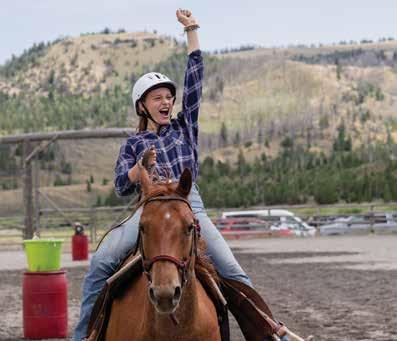




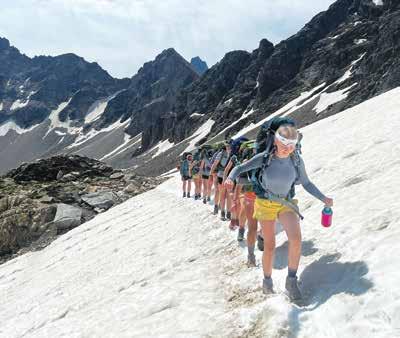

ALTAMIRA FINE ART
GALLERIES
Whether you’re passionate about plein-air, a serious collector of Western paintings by contemporary or deceased masters, or a casual art fan searching for a keepsake to remind you of your time spent here, in Jackson Hole you have the opportunity to enjoy art in a multitude of forms. Over the past two decades, Jackson Hole has grown to become one of the most heralded art centers of the West, popping off the tongues of aficionados alongside the likes of Santa Fe, Palo Alto, and Scottsdale. Begin by visiting some of the galleries highlighted here, which show the diversity of art available in the valley, from traditional wildlife and Western art to contemporary paintings and sculptures.
AZADI FINE RUGS
We are a haven for maverick voices in Western contemporary art. No matter the month or the season, visitors to our down town gallery will find resonance within our walls. Whether connecting to the contours of an equine outline or recalling a mountain memory within an abstract landscape, our patrons recognize the essential value of art in their lives. Like nature, art stirs our souls— a sentiment we share with as many people as possible through monthly events such as the third Thursday ArtWalk. Stop in for inspiration. Two locations: Jackson, Wyo ming and Scottsdale, Arizona. connect@ altamiraart.com.
172 CENTER STREET 307/739-4700

ALTAMIRAART.COM

Established in 1790, Azadi Fine Rugs is owned by one of the oldest rug-weaving families in the world. For over two cen turies, Azadi Fine Rugs has been honored to share history, art, and culture through the magic of handwoven rugs. With an inventory of over 40,000 in-stock fine rugs, Azadi has given the most refined cli ents and interior designers in the world an unforgettable experience by providing an unparalleled selection of fine quality rugs.
55 NORTH GLENWOOD 307/734-0169
AZADIFINERUGS.COM
Taking a nod from the exquisite envi ronment that surrounds us, our goal at Bella Fine Goods is to inspire and delight you with beauty. Enjoy our upscale collec tion of fine jewelry, unique home furnish ings, fine art, and special gifts. Stop by, or give us a call, and we’ll take care of you with an unforgettable experience!
30 CENTER STREET 307/201-1848
BELLAFINEGOODS.COM

104 WINTER 2023 | JACKSON HOLE
BELLA FINE GOODS
Gallery Wild is artist-owned and -oper ated, showcasing contemporary fine art inspired by wildlife and wild places from both established and emerging artists. Our curated collection of photography, paintings, and sculpture is directly influ enced by thousands of hours in the field observing, studying, and falling in love with all things wild. You are also welcome to explore the studio where owner Carrie Wild and visiting artists share their tech niques and artistic process as they create new work.
80 WEST BROADWAY 307/203-2322
GALLERYWILD.COM
Founded in 1987, the National Museum of Wildlife Art is a world-class museum and nonprofit located in Jackson Hole, Wyoming. The Museum’s collection boasts more than 5,000 artworks representing wild animals from around the world. Fea turing work by prominent artists such as N.C. Wyeth, Georgia O’Keeffe, Andy War hol, Bob Kuhn, Albert Bierstadt, and Carl Rungius, the Museum’s unsurpassed per manent collection chronicles much of the history of wildlife in art, from 2500 B.C.E. to the present.
2820 RUNGIUS ROAD 307/733-5771
WILDLIFEART.ORG
Crafters and curators of fine jewelry. Representing top Italian jewelry houses including Picchiotti, Chantecler, Fope, and Vendorafa. Service and quality above all else. Home of the iconic Teton Stacking Rings . In love with jewels, inspired to give back. Presenting sponsor of St. Jude Children’s Research Hospital Moonlight on the Mountains Event. Voted best jewelry store in Jackson Hole.
TM
60 EAST BROADWAY 307/201-1722
JACKSONHOLEJEWELRY.COM


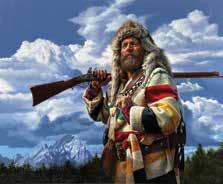
PEARLS BY SHARI
Specializing in Golden South Sea pearls and heirloom strands, Pearls by Shari brings the elegance of pearls to the heart of the Tetons. With over 20 years of pearlbuying experience, Shari Turpin brings unparalleled expertise to each design fea tured at 90 E. Broadway and Neiman Mar cus locations nationwide. Whether you are memorializing your trip to Jackson or want to add a one-of-a-kind pearl design to your jewelry collection, Pearls by Shari features the widest selection of high-quality pearls in the United States. Make an appointment or stop by our showroom located on the Town Square.
90 EAST BROADWAY 307/734-0553
PEARLSBYSHARI.COM
Discover the shape of Western style. Founded on a proud Wyoming heritage that embraces the people, integrity, and lasting values of the West, JW Bennett hats are handcrafted using refined skill, attention to detail, and traditional tech niques. Our style is modern, sophisti cated, gritty, and beautiful. Visit our bou tique for a personal hat-fitting experience and leave with a memory of the Mountain West that is uniquely yours.

55 NORTH GLENWOOD 307/201-5669
JWBENNETT.COM
WEST LIVES ON GALLERY
West Lives On Gallery exhibits fine art re flecting the rich heritage of the American West. Featuring Western, wildlife, and landscape art in our traditional and con temporary galleries. Founded in 1998, West Lives On Gallery today represents more than 100 national and regional artists.
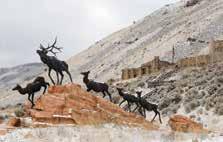
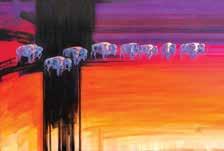
55 & 75 NORTH GLENWOOD 307/734-2888
WESTLIVESON.COM
JACKSON HOLE | WINTER 2023 105
WILD
GALLERY
JW BENNETT
NATIONAL MUSEUM OF WILDLIFE ART
Bart Walter (United States, b. 1958) Wapiti Trail, modeled 2005, cast 2007. Bronze. Life Size. Anonymous Gift, National Museum of Wildlife Art. © Bart Walter.
JACKSON HOLE JEWELRY CO.
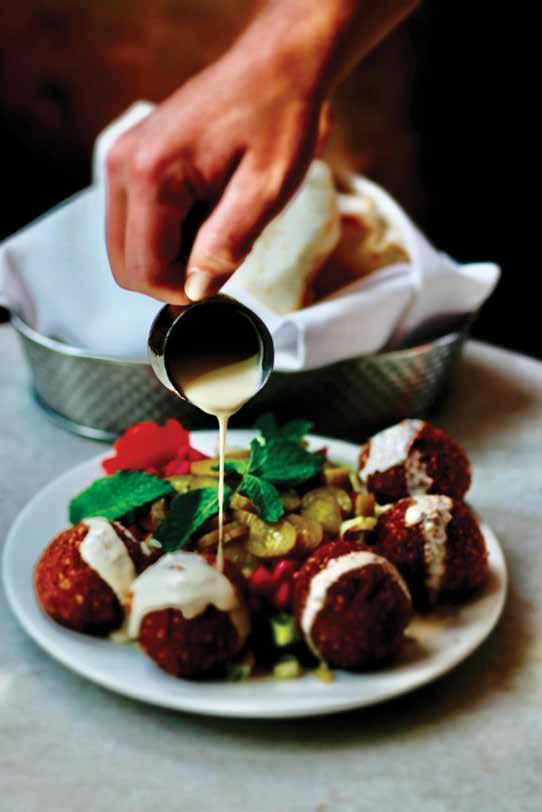










106 WINTER 2023 | JACKSON HOLE Wines With Altitude Tastings By Appointment 2800 Boyles Hill Road • Jackson, WY 307.201.1057 • www.jacksonholewinery.com New Jackson Tasting Room • 98 Center Street Award-winningWines

































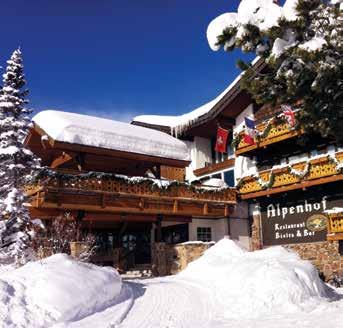
JACKSON HOLE | WINTER 2023 107 A Swiss Hotel & Restaurant In the Tetons SWISS Join Us For Traditional Fondue, Raclette & other Swiss specialities 307.733.3242 • alpenhoflodge.com • 3255 Village Dr, Teton Village in the Alpenhof Lodge next to the Tram in Teton Village
ENJOY
The Bunnery Bakery & Restaurant | 307/733-5474 | JACKSON Hearty, healthy fare, bakery, and famous OSM products.
Butter Cafe | 208/399-2872 | VICTOR, ID Brunch with a twist—join us daily for all of your favorites, house-made and playfully delicious
Figs | 307/733-1200 | JACKSON Vegetarian and vegan friendly, Mediterranean-inspired small plates/entrees.
Palate | 307/201-5208 | NATIONAL MUSEUM OF WILDLIFE ART An artful lunch with a view in Jackson Hole.
Red Willow Steak & Seafood | 307/855-2605 | RIVERTON, WY Order your favorite decadent meal in the Wind River Hotel & Casino.
Silver Dollar Bar and Grill | 307/732-3939 | JACKSON Breakfast, lunch, dinner, happy hour, and live music.
Snake River Brewing Co. | 307/739-2337 | JACKSON Jackson Hole’s living room since 1994. Serving up 12 taps of award-winning beers and Alpine-inspired dishes 7 days a week, 11 a.m.–10 p.m. Wyoming’s oldest and America’s most award-winning small craft brewery.
Streetfood @ The Stagecoach | 307/200-6633 | WILSON Scratch-made and globally influenced, Streetfood has all of your favorite bar eats in a relaxed, historic location at the base of Teton Pass.
Teton Thai | 307/733-0022 | TETON VILLAGE Best of JH: Best Overall Asian Restaurant.
Wanderlust Bistro | 208/821-1982 | VICTOR, ID
Hidden in the Teton Valley Resort and serving breakfast, lunch, and dinner with a taste of Mexico, search us out whenever your Wanderlust strikes.
GRAND TARGHEE
Powder Cache Bar and Grill | 307/353-2300 | GRAND TARGHEE RESORT Rocky Mountain fare with fresh, local ingredients. Trap Bar & Grill | 307/353-2300 | GRAND TARGHEE RESORT Famous Wydaho Nachos, great food, and delicious drinks. Snorkels Café | 307/353-2300 | GRAND TARGHEE RESORT Homemade breakfast, lunch, pastries, and espresso bar.
JACKSON HOLE MOUNTAIN RESORT
Piste Mountain Bistro | 307/732-3177 | TOP OF BRIDGER GONDOLA Enjoy Rocky Mountain cuisine at 9,095 feet. Book on Open Table. Gondola lunch ticket, season pass, or day lift ticket required.
RPK3 Kitchen, Bar & Apres | 307/739-2738 | TETON VILLAGE Dine under the Jackson Hole tram.
Solitude Station | MID-STATION OF SWEETWATER GONDOLA
Enjoy endless offerings of thoughtfully curated, premium farm-to-table selections.

SNOW KING MOUNTAIN
Kings Grill | 307/201-KING | JACKSON Classic American menu. Happy hour. Families welcome! Snow King Cafe | 307/201-KING | JACKSON Sandwiches, burgers, beers, and kids meals.
Panorama House | 307/201-KING | JACKSON Best Teton views and Jackson Hole sunsets from the top of the Snow King Gondola. Drinks, crepes, snacks, beer, and wine.
108 WINTER 2023 | JACKSON HOLE
DINING GUIDE



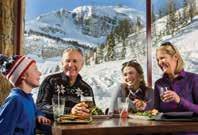


JACKSON HOLE | WINTER 2023 109 Average entree; $= under $15, $$= $16-20, $$$= $21+ B L D J $$ $$ 4 4 $$ $$ 4 4 4 $/$$ $/$$ $/$$$ 4 4 $$ 4 4 $$ 4 4 $ $ $/$$$ 4 4 4 $/$$ $$ 4 4 4 $$ $$ 4 4 4 $$ $$ 4 4 $ $ $ 4 4 4 $$ $$ $$$ 4 4 4 $ $$ 4 4 $ $ 4 4 $ $$ 4 4 4 $ $$ 4 4 4 $ $$ 4 4 4 $ $ 4 4 4 $ $ 4 4 4 $ $ 4 4 4
NO MORE
I
n the fall of 1983, Brian Czech was an early-career U.S. For est Service ranger patrolling his favorite place of all time, the Teton Wilderness, when he saw something he’d never seen before: a grizzly bear.
The bruin was treading through six inches of fresh-fallen powder in the backcountry at Fox Park, a remote mountain meadow a mile south of the Yellowstone National Park bor der and eight miles west of the Continental Divide. Czech, then in his early twenties, wanted a closer look at this griz zled ursine emblem of the wild. Atop his mount, a Tennessee walker named Diamond, he inched nearer. By the time he got within 56 yards—a distance he paced off the next day—the big bear decided it wasn’t too fond of its human-on-horse fan club. “He went up on his hind legs and sniffed at the air for two or three seconds,” Czech recalls. “It’s a long time ago, but something like that you remember.” The grizzly plopped back down to all fours. Then it put one foot in front of the other. Then the motion picked up speed. “He was pumping, straight at me,” Czech says. “I didn’t have to do a damn thing,
I just had to stay on my horse, Diamond. He immediately wheeled toward the ranger cabin.”
At the time, Czech made light of the grizzly run-in with an observation: he was the only person he knew who’d been charged by the only grizzly bear they’d ever seen. And de spite spending two more 1980s summers in the 585,000-acre Teton Wilderness, including one season mapping grizzly bear habitat, Czech never saw another grizzly there. (A de cade later, he saw plenty of grizzlies while working in Alaska.) At the time, the great bears were still in the early stages of a decades-long recovery in the Greater Yellowstone Ecosys tem. Wolves, which were extirpated from the ecosystem by the 1930s, hadn’t yet been reintroduced. Another now-com mon emblem of the wild, bald eagles, were also seldom seen, though their population was gaining steam. The Endangered Species Act, 50 years old in 2023, changed the fates of all of these species. Today, grizzlies can be expected at Fox Park; the Teton Wilderness is now known for its dense population of the species. Wolves are equally back at home in the GYE—

 The year 2023 marks the 50th anniversary of the Endangered Species Act, a landmark law that made the Greater Yellowstone Ecosystem whole.
The year 2023 marks the 50th anniversary of the Endangered Species Act, a landmark law that made the Greater Yellowstone Ecosystem whole.
110 WINTER 2023 | JACKSON HOLE
// BY MIKE KOSHMRL
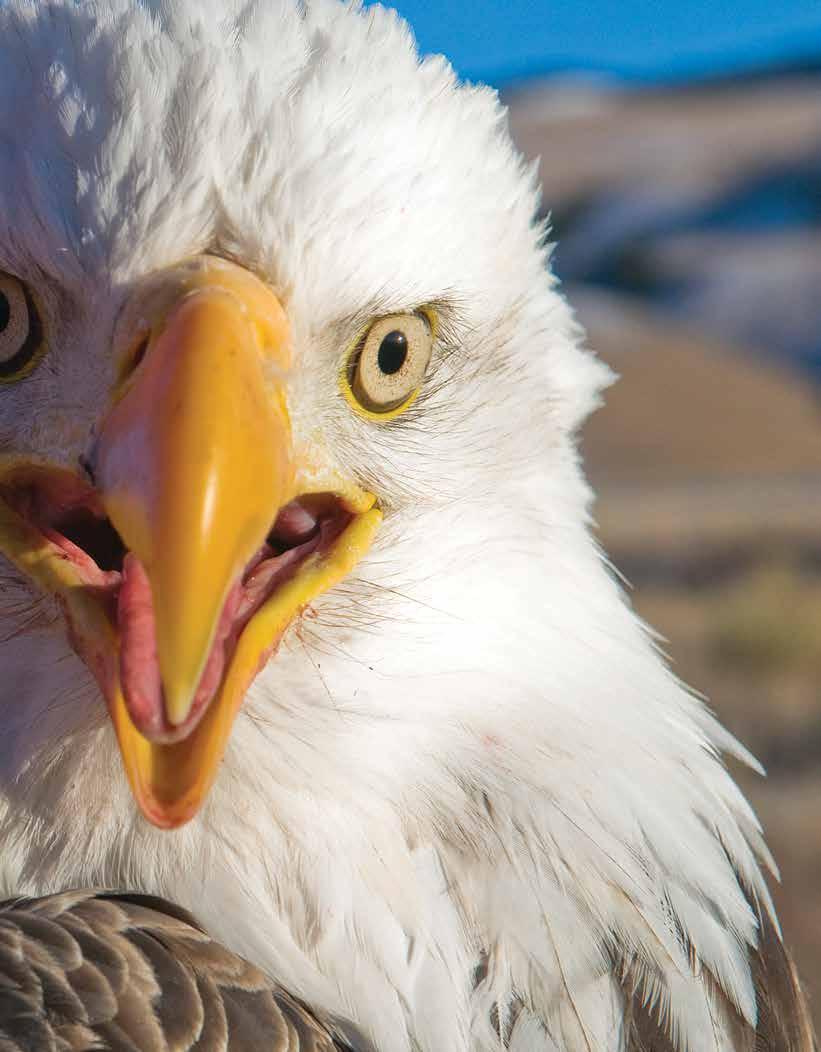
HOLE | WINTER 2023 111
JACKSON
BRADLY J. BONER
many hundreds live in the area today (more than 3,000 live across the American West). Bald eagles in Jackson Hole and beyond are basically ubiquitous.
Grizzlies, wolves, and bald eagles are among the more charismatic species that owe their lives to the ESA, but they’ve got good company. Noah Greenwald, endangered species director for the Center for Biological Diversity, esti mates that the ESA has prevented the extinction of 291 spe cies since its passage in 1973. “It’s a tremendous law that set a precedent for the rest of the world,” he says. “These were animals that the federal government actively worked to eliminate around the country. It turned the tide; these ani mals went from being annihilated to protected because of the Endangered Species Act.”
Czech, after woodsmen days in Wyoming and beyond, turned to academia, and he got to know the Act well. Now a Virginia resident, he conducted a policy analysis of the ESA for his PhD at the University of Arizona, and his dissertation was later adapted into a book, The Endangered Species Act: History, Conservation, Biology and Public Policy. By forcing hu mans to slow down their activities instead of overrunning imperiled species, the ESA, Czech argues, acts as a prescrip tion for a steady economy. “There’s a fundamental conflict between economic growth and species conservation,” he says. “The economy is pushing out species left and right, and it’s pressuring species left and right. If the economy continues growing and growing and growing, it will ex tinguish those species left and right.” In other words, a by product of the ESA is that it slows down growth by making us account for our impacts on the creatures we share the Earth with. History has proven that, without laws forcing our hand, humankind does a poor job of conserving other species for their own sake. Many North American species, like the passenger pigeon, were lost before the ESA came about. Bison were nearly among those extinctions. Other animals, like the San Marcos gambusia minnow and a host
of Hawaiian songbirds and freshwater mussels, were listed in the Act but went extinct anyway.
The first wildlife-protection law in the United States can be traced to northwest Wyoming: The Lacey Act of 1884, also known as the Yellowstone Game Protection Act. In spired by public outrage after poacher Ed Howell got off light for being caught with dead bison in the park’s Pelican Val ley—poaching was against park regulations, but it was not illegal—the Lacey Act added legal teeth to the prohibition on park hunting. Six years later it was broadened into the na tionwide Lacey Act, still in effect today. There were also two direct precursor laws to the ESA of 1973. The Endangered Species Preservation Act of 1966 had the goal of addressing potential extinctions of species like the whooping crane and bald eagle. Three years later, the Endangered Species Conser vation Act of 1969 broadened its predecessor’s parameters by including species and subspecies threatened with world wide extinction and prohibited the importation of these spe cies into the U.S. from any foreign country.
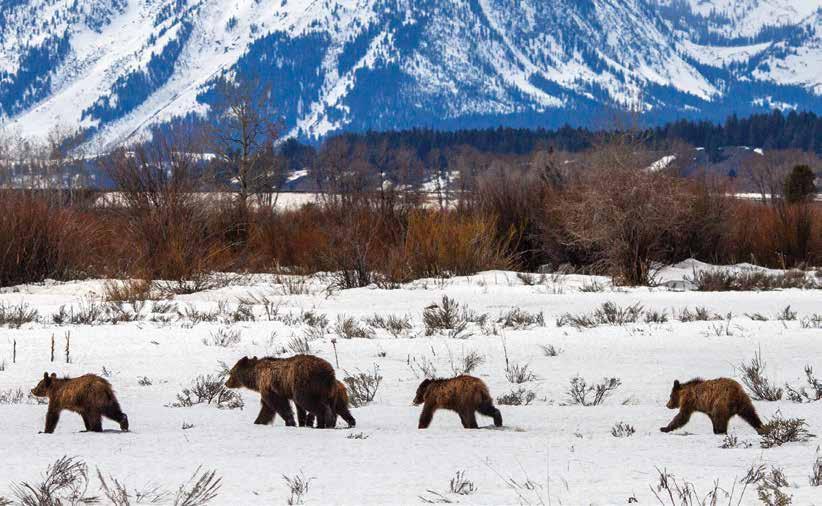
There were several major changes from the 1960s acts to the 1973 ESA that gave it more regulatory reach and teeth. “One, there was a recognition that habitat was a driver of ex tinction,” Greenwald says. “And it added species—plants— recognizing that plants are foundational to life on Earth.” The final product was a powerful tool to protect not just in dividual species, but the places where they lived. It was com prehensive, procedural, and a one-stop shop for protect ing species of any kind. “And it goes well beyond species,” Greenwald says. “The language about ecosystems upon which species depend is really strong.”
The ESA had broad bipartisan support in its early years, but it didn’t last. The first big fight came during construc tion of the Tellico Dam on the Little Tennessee River, an impoundment that threatened the existence of a two- to four-inch-long minnow called the snail darter (the minnow
112 WINTER 2023 | JACKSON HOLE
RYAN DORGAN
“It’s a tremendous law that set a precedent for the rest of the world. These were animals that the federal government actively worked to eliminate around the country. It turned the tide; these animals went from being annihilated to protected because of the Endangered Species Act.”
—NOAH GREENWALD, ENDANGERED SPECIES DIRECTOR FOR THE CENTER FOR BIOLOGICAL DIVERSITY
lives on, but only because it was moved to other river sys tems before the dam was finished in 1979). Today, the ESA garners little political support in conservative places like Wyoming, where threatened and endangered species—the act’s two major classifications—exist on the landscape and must be accounted for, whether it’s the grizzly bear, lynx, or the blackfooted ferret. Partly, that’s explained by Czech’s premise that the ESA inherently slows down the economy. One example is the saga of the sage-grouse, the population of which has been in decline since western settlers started plowing up sagebrush in the homestead era. In the years leading up to 2015, to prevent the species being listed as threatened, which could have curtailed industrial activ ity like oil and gas drilling in sage-grouse habitat, western states coalesced to conserve the chicken-sized bird by de veloping state-level plans. This effort was successful for the states, and it persuaded the U.S. Fish and Wildlife Service to not list the species. Still, sage-grouse struggles persist. U.S. Geological Survey research estimates that populations have fallen by 80 percent since 1965—with half that decline oc curring in the last 20 years. As few as 200,000 birds remain, down from presettlement estimates of 16 million.
The ESA’s reputation as a tool for never-ending litigation has also won few fans in the West. Grizzlies and wolves, for example, can be difficult species for residents to live with, and both remained protected under the act for years after their populations grew past recovery goals because of one
lawsuit after the next. The Center of Biological Diversity— Greenwald’s employer—is often in the thick of that litiga tion. About the Center for Biological Diversity, Czech says, “It’s hard to know if they’ve been productive in the long run or not, because they certainly have pushed the envelope hard. But I feel like they have been helpful.” Wyoming’s con gressional delegation would say the opposite. U.S. senators John Barrasso and Cynthia Lummis and former U.S. Rep. Liz Cheney have all supported failed Endangered Species Act reforms that blunt its regulatory teeth and increase state in volvement in administering the longstanding law. “Species that go on the endangered species list seem to stay there for ever,” Barrasso said in support of a 2021 ESA-reform bill. A cosigner on that bill, U.S. Sen. Jeff Risch of Idaho, called the ESA “well-intentioned but grossly flawed. More often than not, the law creates so much bureaucratic red tape that it comes at the expense of the very species it seeks to protect,” he said. Still, ESA supporters see its golden anniversary as cause for celebrating arguably the world’s strongest law for pro tecting animals and plants from extinction. “Despite the opposition, despite substantial problems with implemen tation, despite lack of funding, it’s been tremendously successful,” Greenwald says. “Millions of acres across the country have been protected largely because of the ESA. And there’ve been plenty of notable success stories: great whales, grizzly bears, wolves, and many, many others.” Here are snapshots of three of those species’ success stories.

JACKSON HOLE | WINTER 2023 113
ROB DESLAURIERS robdeslauriers.com | rob.deslauriers@jhsir.com 307.413.3955 ANNE JONES anne.jones@jhsir.com 307.699.3004 FURTHER EXPLORATION AT ROBDESLAURIERS.COM Rob and Anne specialize in Teton Village and Jackson Hole Luxury and Resort Properties, with over $230 million in transactions over the past two years and a 20-year track record of success in brokerage and development. “We are here to deliver the Jackson Hole dream to our buyers and sellers based on experience, a commitment to service, and long-standing friendships in the community. We welcome the chance to collaborate with you on your Jackson Hole Real Estate goals.” RD ROB DESLA URIERS REAL ESTATE | HOSPITALITY | DEVELOPMENT | SKIER THE HEIGHT OF JACKSON HOLE LIVING
AN INCREDIBLE RECOVERY
The United States of America nearly wiped its literal animal symbol—the bald eagle—off the map. There were many causes of the decline, includ ing indiscriminate killing of all raptors during the settlement era, but by the mid-20th century, the fore most driver was the widespread application of DDT. The pesticide, which thinned egg shells and caused failed nests, was used to kill insects on cropland, but it also was applied aerially by federal agencies like the U.S. Forest Service to protect timber stands from pine beetles. At the low point, in 1963, there were only 417 nesting bald eagle pairs remaining in the Lower 48. The Greater Yellowstone Ecosystem was a strong hold; even at the bottom, there were about 31 pairs here. “This was considered a significant population at the time,” says Susan Patla, a retired Wyoming Game and Fish Department nongame biologist who monitored eagles in the Snake River watershed for decades. “It was actually producing birds that were dispersing to other places.”
After the 1960s nadir, recovery came slowly. The Migratory Bird Act of 1918 and Bald and Gold

en Eagle Protection Act of 1940 both protected the species, but DDT remained legal until 1972. A year later, the ESA was enacted, and five years after that, bald eagles were listed as endangered through out the Lower 48. By 1982, Patla says, the agencies were reporting an estimated 50 to 58 pairs in the Greater Yellowstone Ecosystem and 180 and 210 eagles overall. Soon, recovery was soaring. In 1995 bald eagles were reclassified from endangered to threatened, and in July 2007 they were delisted al together. When the U.S. Fish and Wildlife Service last conducted a nationwide population estimate in 2020, there were 316,700 total birds and 71,400 occupied eagle nests. “They are considered the most successful example of what the Endangered Species Act can do to save species,” Patla says. Al though bald eagles are no longer at risk of extinc tion, some concerns remain: avian influenza, lead poisoning, energy development, and pesticides and contaminants are all threats high on Patla’s mind. “We still need to keep an eye on human dis turbance,” she says.
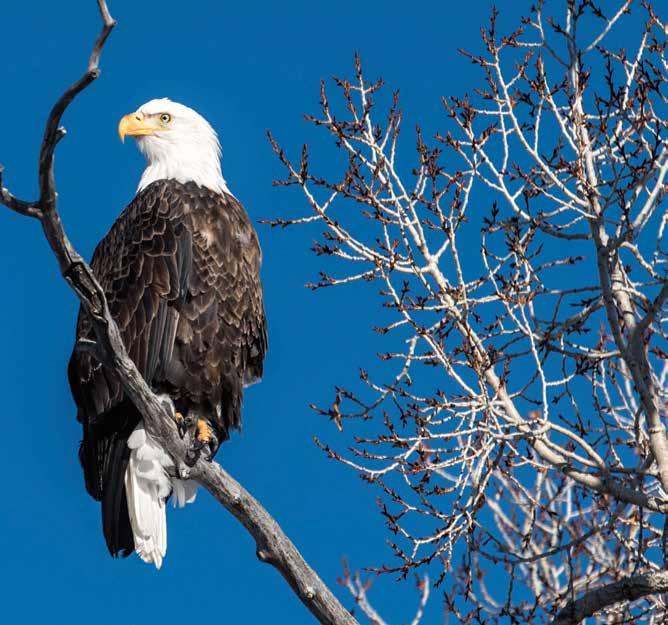
114 WINTER 2023 | JACKSON HOLE
RYAN DORGAN
Louisa Willcox completed her master’s degree on grizzly bears from Yale University in the early 1980s, a time when the Yellowstoneregion population was reeling and largely confined to the protected national park. The causes of the decline were many: grizzlies were hunted, their core habitat was lit tered with lethal hazards, and a major food source—Yellowstone’s garbage dumps—was taken away from them cold turkey against the advice of pre eminent grizzly biologists Frank and John Craighead. Even after grizzlies were awarded ESA protections in 1975, anxieties were high for nearly a decade. “It was like, ‘Oh my God, we’re going to lose these bears and on our watch,’” Willcox recalls. “We really thought grizzly bears were go ing down the tubes. They were in im minent risk of extinction, there was absolutely no doubt among the sci entists.” Population estimates for the
Yellowstone region around the time the slow-reproducing ursines were listed ranged from 136 to 312 bears. “They were in Yellowstone, Glacier, and a couple little teeny populations elsewhere,” Willcox says.

Grizzly recovery was slow and steady. Listing flipped a switch that prohibited hunting, and it implored land managers to take drastic steps to protect Ursus arctos horribilis. At the time of listing and up until the late 1980s, there were hundreds of thousands of domestic sheep being grazed on grizzly habitat in the Tar ghee and Gallatin National Forests. “They were like candy on legs, and the herders were always armed and often they didn’t speak English,” Will cox says. “Bears would just get killed.”
The sheep industry tanked partly on its own, but the national forest super visors also prioritized grizzlies over their permittees and helped facilitate allotment buyouts. By the turn of the
century, federal managers estimated that there were 400 to 600 grizzlies and the population was growing at 4 to 7 percent a year. Today, after a change in counting methodology, there are an estimated 1,000 grizzlies where managers count bears in the ecosystem and an untold number of animals wandering outside the counting area. States have pushed for grizzly delisting repeatedly, a step that USFWS has tried to take twice, in 2007 and again in 2017. The change of jurisdiction would have allowed the first grizzly bear hunts since the species’ 1975 listing, but both times the decisions were overturned in court. Willcox, who worries about the state hunts and the effects of cli mate change on grizzly food sources, is among those of the mind that the great bears deserve continued pro tections. “If they’re delisted, all bets are off,” she says. “We could easily be back to where we were in 1975.”

BACK FROM THE BRINK
RYAN DORGAN
JACKSON HOLE | WINTER 2023 115
Conservationist activist Renee Askins formed an organization in the 1980s, the Wolf Fund, that had a single goal: the reintroduction of wolves to Yellowstone National Park.

“Of course, the single mechanism to achieve that was the Endangered Spe cies Act,” Askins says. A provision within the ESA allows wildlife manag ers to establish “experimental popu lations.” The road to reintroduction was long and tortuous. Askins, who former U.S. Interior Secretary Bruce Babbitt once called the “den mother” of wolf reintroduction, began advo cating in the late 1970s and moved to Jackson Hole in 1981. Living out of a now-vacant home at the base of Shad ow Mountain, she was a dogged advo cate who educated resistant residents about the virtues of the native canine carnivore, which had been absent from the landscape for more than 60 years.
“My staff called it ‘behind enemy lines lecture tours,’” Askins once told the Jackson Hole News&Guide. “Western agriculture had been in control of the

politics of the West for so long that no one thought there was a chance in hell [reintroduction] would ever fly.”
It took nearly two decades of ad vocacy, but reintroduction did indeed fly. In the winter of 1995, the U.S. Fish and Wildlife Service moved 14 wolves to enclosure pens in Yellowstone Na tional Park (17 more came later, and 35 were also moved to central Idaho wilderness areas, for a total of 66 transported wolves; all of the reintro duced wolves came from populations in Canada). That meant the end of the Wolf Fund's formal involvement. “The Wolf Fund was created with a sunset clause, that when they open the gates to release wolves, we would swing [shut] our doors,” Askins says. “That’s what we did on March 21, 1995, when the first wolves left their enclosures.”
Wolf recovery and expansion since then has been profound. The U.S. Fish and Wildlife Service’s recovery goal of 450 wolves and 45 breeding pairs in Wyoming, Montana, and Idaho was achieved by the turn of the century.
Wolves were delisted legislatively in Montana and Idaho in 2011 and ad ministratively the next year in Wyo ming, where state officials afforded the species no protections outside of the Greater Yellowstone Ecosystem. To day, there are more than 3,300 wolves estimated in three northern Rocky Mountain states plus Washington and Oregon. Three packs dwell in Cali fornia and another pack—migrants from Wyoming—lives in Colorado, where state wildlife managers will conduct their own reintroduction ef fort by 2024. Although the ESA did its job biologically, persecution of wolves persists. Unregulated killing is autho rized in 85 percent of Wyoming, and bounty programs have been estab lished in Montana and Idaho, where the state legislatures have gone over wildlife managers’ heads to mandate heavy hunting and trapping. “This is the same old-fashioned cruelty and hatred and venom that really drove the persecution and the complete elimina tion of wolves,” Askins says. JH
THE RETURN
116 WINTER 2023 | JACKSON HOLE
JACOB W. FRANK / NATIONAL PARK SERVICE
INTRODUCING


This winter you'll have 600 acres of awesome new terrain to explore. The Colter Lift delivers avenues of fun, varying runs, like the steep pitches of Silver Jae, the rollers of Rolling Thunder and the trees of Tanglefoot. Come spread out on the mountain and find your new favorite run.
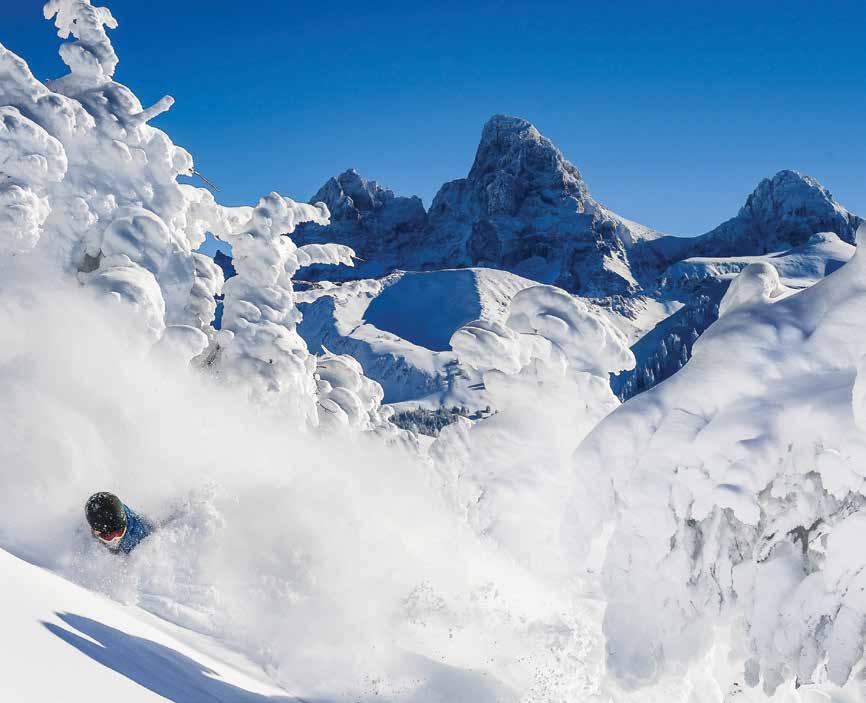
ADDING 30% MORE TERRAIN TO GRAND TARGHEE
COLTER Lift GRANDTARGHEE.COM | 800.TARGHEE | ALTA, WYOMING
Dreamy powder days tearing along the frozen slopes up on Togwotee Pass have been easy to come by in Skinner Bell’s lifetime. Bell was born to and raised by a Togwotee snowmobile guide, Jerry Bell. And Skinner, too, went on to build a career guiding on the roughly 600 miles of trails that span out in all directions from the federal highway—U.S. Highway 26/287—that tops out at 9,659 feet, straddling the Continental Divide as it traverses the pass. Bell paints a pic ture of when the stars align and the sledding is to die for in the high peaks northeast of Jackson: “It’s like right around zero degrees, with three or four feet of blower pow,” he says. “I don’t care if it’s out in the middle of a meadow, in the hills, or wherever, as long as I’m just having fun with my friends or whoever I’m riding with. I wish it was like that every day.”

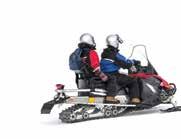 // BY MIKE KOSHMRL // PHOTOGRAPHY BY TODD WILLIAMS
// BY MIKE KOSHMRL // PHOTOGRAPHY BY TODD WILLIAMS

TREMENDOUS, TREACHEROUS TOGWOTEE
118 WINTER 2023 | JACKSON HOLE
The Continental Divide Trail System is a mecca for snowmobilers looking for backcountry and groomed-trail riding. Hazards lurk, too, and sometimes get the best of flatlander sledders.
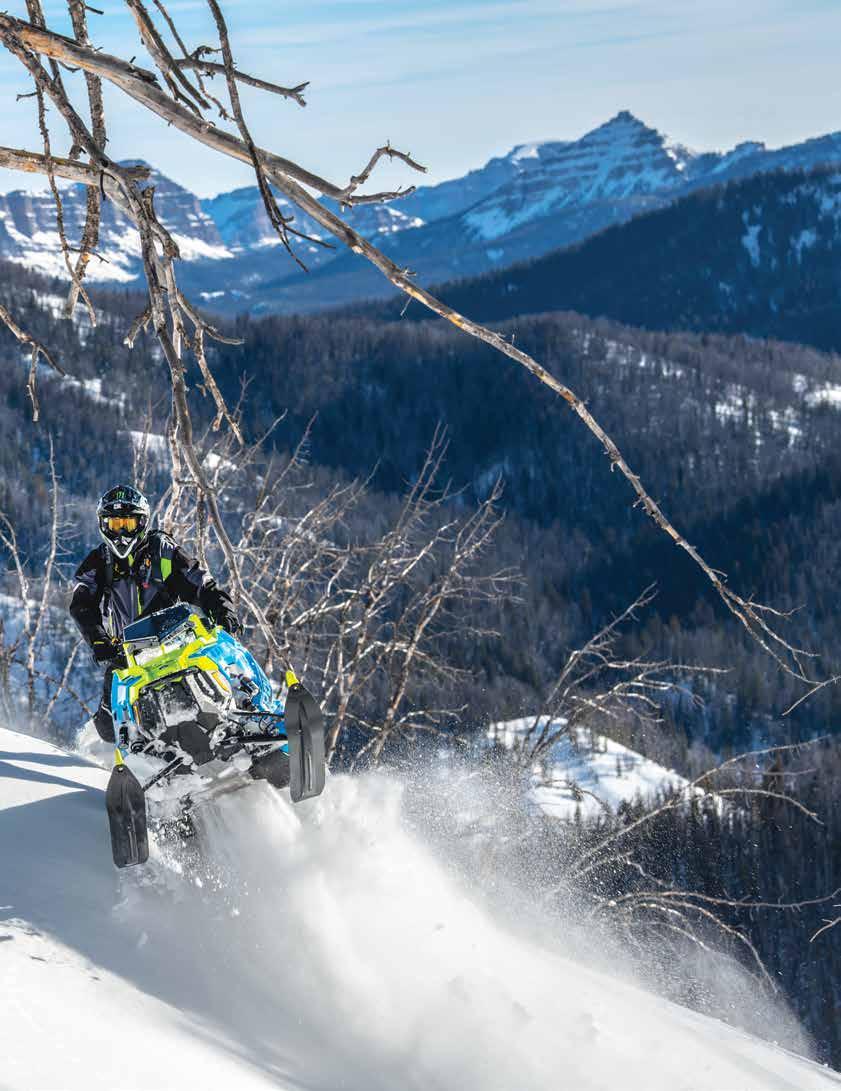
HOLE | WINTER 2023 119
JACKSON


120 WINTER 2023 | JACKSON HOLE
—Snowmobile guide Skinner Bell on the riding around Togwotee
“THE SKY'S THE LIMIT. IT'S JUST SO BIG. THERE’S NOTHING ELSE LIKE IT.”
mixed bag of avalanche burials, colli sions with trees, riders getting lost or stuck, and the assortment of injuries those accidents cause. “That doesn’t include people getting hurt and riding out on their own, or when the guides are responding to it,” Estes says.

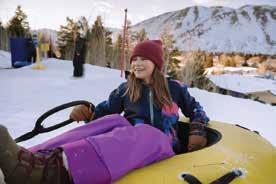

JACKSON HOLE | WINTER 2023 121
WHERE TO STAY, RIDE, AND RENT
There are several commercial lodges in the Togwotee Pass area that cater their wintertime operations to snowmobilers. The largest and most well-known is Togwotee Mountain Lodge (togwoteelodge.com), which offers 54 cabins and several dozen rooms on land permitted by Bridger-Teton National Forest. Immediately accessible are hundreds of miles of groomed trails in the forest and hundreds of thousands of acres of ridable slopes and meadows. A snowmobile rental shop, bar, restaurant, and gas station are on the premises, too, so wintertime guests don’t have to go anywhere—except to go ride. Four miles off the highway down a groomed snowmobile trail is Turpin Meadow Ranch (turpinmeadowranch.com), which has its own network of trails maintained for cross-country skiers and fat bikers, and which connects to the Continental Divide Snowmobile Trail System. For visitors looking for a more upscale wintertime experience, try Brooks Lake Lodge and Spa (brookslake.com/winter), an all-inclusive resort that’s five miles off the highway and only accessible by snowmobile or tracked vehicle. On the Dubois side of Togwotee Pass is Lava Mountain Lodge (lavamountainlodge. com), a rustic drive-up lodge and restaurant that overlooks the Wind River.
Tragedies are the less talked-about part of the Togwotee snowmobiling scene. Almost annually, a snowmobiler will die on Togwotee. In 2014 an avalanche buried and killed a 26-year-old Iowa man. Two years after that, a 33-year-old North Dakotan met his end from blunt force trauma after hitting a tree. A Ten Sleep, Wyoming, man died in 2017, the result of obstructed visibility causing him to land on the highway and break his neck. In 2018 another young Iowa man died in an avalanche—the exact same fate that claimed a two twentysomething Wisconsinites in two sepa rate incidents the very next winter in 2019. Another young Midwestern man died snowmobiling Togwotee in 2021, this time a 24-year-old Minnesotan.
Alpine resident Justin Fritz, who’s on the board of direc tors at the Wyoming State Snowmobile Association, says
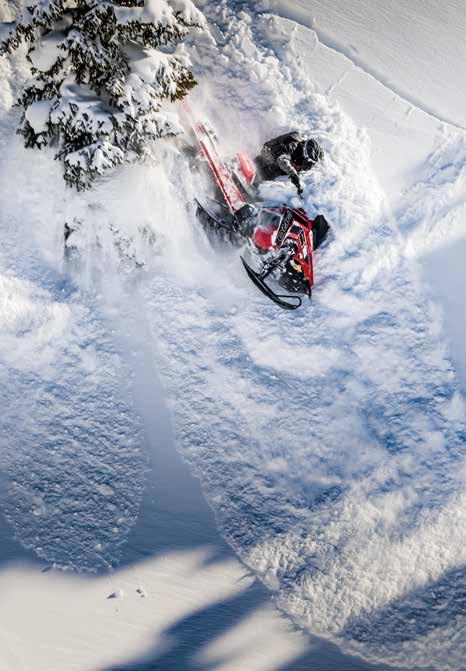

122 WINTER 2023 | JACKSON HOLE
that there’s a caricature of the snowmobilers who tend to flock to Togwotee Pass. “It’s a lot of Midwesterners, especially Wisconsin, Minnesota, Michigan,” he says. “They don’t nec essarily have the avalanche training that they should have to come to a place like this, especially coming from flatland states. If you’re going to a place like Togwotee, in my opinion you should have to have a guide. A lot of these folks are com ing from places where you can just pick up a map and ride.”
Advancements in snowmobile technology have exacerbated the troubling trends. Today’s backcountry sleds are lighter, higher powered, and have longer tracks with powder-profi cient paddles, which together enable riders to reach riskier terrain, whether they know it or not. “You can’t just pick up a map and ride in a place like Togwotee,” Fritz says. “There are concerns, and they are called avalanches.”

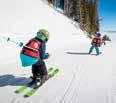


JACKSON HOLE | WINTER 2023 123
A PLACE LIKE TOGWOTEE. THERE ARE CONCERNS, AND THEY ARE CALLED AVALANCHES.”
—Justin Fritz, Wyoming State Snowmobile Association
“YOU CAN’T JUST PICK UP A MAP AND RIDE IN
STAYING SAFE IN THE BACKCOUNTRY
Hiring a guide isn’t just something novice snowmobilers should consider; it’s advised that even experts unfamiliar with the Togwotee Pass terrain consider going along with someone who knows the area. “You can get into some pretty extreme, treacherous terrain pretty quickly,” Cameron Chimenti, 3C Guiding's (3cguiding.com) owner, says. “That’s why we have jobs as guides—people hire us to keep them out of that stuff.” Other businesses that offer guided riding on the Continental Divide Snowmobile Trail System include Togwotee Mountain Lodge, Brooks Lake Lodge, Lava Mountain Lodge, Old Faithful Snowmobile Tours (snowmobilingtours.com), and Scenic Safaris (scenic-safaris.com), among others. It’s highly recommended that do-it-yourself riders who are not acquainted with avalanche terrain take a course so they know what they’re getting into. Besides Mountain Riding Lab (themountainridinglab. com), which specializes in classes for snowmobilers, the American Avalanche Institute (americanavalancheinstitute.com) also offers classes for recreational winter travel and avalanche rescue in the Jackson Hole area. Find updates on avalanche conditions via the Bridger-Teton Avalanche Center, which provides daily forecasts specific to Togwotee Pass (jhavalanche.org).
Fortunately, there are indications that the flatlanders who have historically been getting into trouble on Togwotee Pass are changing their behavior. “There are more and more peo ple from the Midwest getting more and more training,” says Cameron Chimenti, who grew up in Dubois and now runs Laramie-based 3C Guiding. “It’s because their wife heard that somebody passed away in an avalanche here, and they don’t want it to be their husband next.”
Organizations that offer training are also ramping up. In 2016 the Mountain Riding Lab launched in Jackson, offering avalanche-hazard management courses tailored specifically to snowmobilers and snow bikers. Some of their classes take place in the field on Togwotee Pass. Estes, at Teton County Search and Rescue, emphasized the importance of avalanche education, which can teach riders which types of terrain to avoid and what to do when the snow unexpectedly slides and buries a pal. “We should be going to those snowmobiling clubs in the Midwest and telling them, ‘Hey, you’re coming out, take an avalanche course,’” Estes says. “I think that’s the biggest thing. Sometimes even the best riders get caught. It’s something that just happens.”
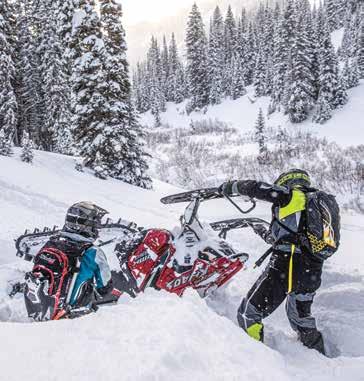

It’s a core part of Bell’s job to avert accidents, and he even finds himself dishing out guidance over social me dia and to unguided riders he encounters up in the hills. “I know the snowpack really well, and I know the areas where not to go,” he says. “As a guide, I always think where I want to go while still making the client happy. At the end of the day, the goal is to bring everybody back alive.”
Many of those perfect powder days end with guys— there are female snowmobilers, but the sport is most popular with men—sitting around the bar at places like Togwotee Mountain Lodge and giving each other good ribbings. Bell builds games into his standard guiding out ings: whoever gets stuck in the snow the most has to wear a special, shameful hat and buy the first round at the bar. That’s a playful tactic that’s partly in jest, he says. But it’s also geared toward motivating his clients to make smart choices in the sometimes-deadly Togwotee backcountry. “Everybody starts thinking more about their decisions before they go and do it,” Bell says. JH
124 WINTER 2023 | JACKSON HOLE
Shop Elevenate at Teton Village Sports, providing high-quality brands since 1965.
Find Elevenate skiwear at Alpine Options, Mountain Ops & Valley Bike and Ski Werks
TETONVILLAGESPORTS.COM

Hand Crafted boards
JACKSON HOLE’S SKI AND SNOWBOARD MAKERS CARVE THEIR NICHES ONE TURN AT A TIME.

126 WINTER 2023 | JACKSON HOLE
// BY RACHEL WALKER // PHOTOGRAPHY BY NATALIE BEHRING
LIKE MANY, THEY CAME FOR THE
mountains and the snow. Come winter, they rose early to get the first tram and chased friends down secret stashes at the resort. They humped gear up Glory Bowl and toured into Grand Teton National Park. And as they threw themselves to the elements, they forged unique connections to this valley. How many people come to Jackson Hole and find their life plans upended as one season turns into another and into another?
Many, of course. But how many of those people manage to work for themselves build ing tools that ostensibly improve the lives of their powder-addicted brethren? Meet the custom ski and snowboard makers of Jackson Hole. These men—and, as of this writing, the founders/owners are all men—have engineer ing minds, woodworking skills, and an almost singular obsession with winter sports. They’re
Parris, owner of Igneous Skis. “I consider myself fortunate that I realized my priorities early on enough in my life to make them a reality.”

At our count, there are four area companies selling handcrafted boards: Igneous and Maiden in the town of Jackson, and Franco Snowshapes and Sego in Teton Valley on the west side of the Tetons. They’re all making a living doing what they love, each with unique visions about the types of boards they want to build. These build ers bristle at the suggestion that they’re dudes who happened to luck into a métier. The com panies grew out of ingenuity and curiosity, hard work, cultivating relationships, and a willingness to take risks. (And, yes, all four make a profit.) Together, the annual output of our four local ski and board makers improve winter for between 1,000 and 2,000 skiers and snowboarders.
Boutique ski and snowboard makers are nothing new. As long as there have been ma chines to sandwich together wood and metal,
JACKSON HOLE | WINTER 2023 127
Snowshapes, create custom boards us ing specific customer measurements and other information about riding skill, preferred terrain, and athletic goals. Sego, by contrast, creates lines of skis that are all handmade but, for the most part, are not custom.
“A lot of the indie brands want to talk about how their materials or building process are superior to what mainstream brands build in factories, but that’s not the case,” says Jonathan Ellsworth, founder of BLISTER, a com prehensive, independent gear-review company based in Crested Butte, Colo rado. “Where the indies blew up for ab solutely great reasons was their shapes. That was game changing.”
Ellsworth points to early indepen dent ski brands like Line, founded in Seattle, Washington, in 1995, and 4Front, founded in Truckee, California, in 2002, as disruptors to the indus try with innovations including fatter skis, rocker, and twin tips. “We went through a seismic change and now are in a spot where shapes of skis and the materials used—whether they come from an indie or an old European com
pany—are more dialed in than they were ten years ago,” he says.
Where indie companies today really differ from traditional, mass-market ski and snowboard manufacturers is the buying experience and the brand story. Buying from indie companies differs drastically from going into a typical re tail shop. At an indie, you’re likely going to talk with the actual ski builder when you go into the shop. There’s likely a bar or at least a beer fridge, and you’ll experi ence the company’s culture first-hand.
Ordering custom boards, like those made by Igneous, is even more inti mate. You’ll be asked to answer a list of comprehensive questions designed to help the builder fine-tune the design specifically for you. These questions will include not just your height and weight but also your style of skiing and pre ferred type of snow and terrain. There’s an enhanced level of customer service, but this pales in comparison to the sense of community. Go to any town where there’s an independent board maker, and the local stoke around the brand is guaranteed to be high, which creates hype that appeals to people who want
skis and snowboards built by hardcore riders and skiers themselves, says Nick Sargent, president of Snowsports In dustries of America. “Each company is going to have their brand story, and that creates the buzz and notoriety,” he adds.

Naturally, where an indie ski brand is based is a big part of its story. That Jackson Hole can sustain one or two custom ski and snowboard compa nies is impressive. That four compa nies thrive here is unusual among ski towns. Unusual, but not unexpected, given Jackson Hole’s geography, com munity, and cachet.
The Teton Range is inimitable in its rigor and vertical relief, especially com pared to other mountains in the Lower 48, and the snow that falls here is cold, dry powder. Jackson Hole Mountain Resort has been rated the best overall ski resort in North America a couple of times by different publications and is almost always rated as the best place for experts on the continent. There is backcountry skiing on Teton Pass and in Grand Teton National Park, and, if you’re willing to drive for an hour, on Togwotee Pass.
128 WINTER 2023 | JACKSON HOLE
And then there’s the community, both on a micro and macro scale. We haven’t fact checked this, but it’s prob able that, per capita, Jackson Hole is home to more world-class big moun tain skiers and riders than any other place in the U.S. And then there are just the “regular” local skiers, many of whom think nothing of hucking them selves into Corbet’s, skiing the Grand Teton on a Wednesday morning, or tak ing a break from their morning com mute to hike up and ski down Mt. Glory on Teton Pass.
“From the get-go, Igneous started because people here were devouring skis,” Parris says. “They were breaking two or three pairs a season. We wanted to make a ski that held up to the ter rain and style of skiing that people do here—skiing over rocks, and jumping off cliffs, sometimes onto rocks. The durability Igneous is still known for to day is a result of Jackson and the style of skiing we do here.”
The Jackson Hole community as a whole also helps these companies be successful. Each maker credits the lo cal relationships they have for their

longevity and continued existence. Any ski bum who’s lasted more than a season in Jackson Hole will tell you that the locals get by enormously on the re lationships they forge. There’s a certain reciprocity. As friends become more established, more professional, the rela tionships lead to jobs, clients, housing, and more. It may sound transactional, but it’s not. It’s more like a mutual un derstanding and respect for what it takes to stick around and succeed in a place like Jackson Hole.
Finally there’s the “Jackson Hole” brand. “There is definitely a mystique about Jackson,” Parris says. “It has such a reputation, and the newish Epic and Ikon passes are bringing a lot of people here to check it out. This has actually helped—and challenged—us to broad en our offerings. Today we’re making skis for a lot of different types of skiers— it’s not just hardcore skiers, but also now skiers who appreciate having skis that are handmade locally and the crafts manship versus mainstream skis.”
So what about the story of three of the four brands? (Maiden Skis was unavailable.)
RIGHT:

JACKSON HOLE | WINTER 2023 129
“WE WANTED TO MAKE A SKI THAT HELD UP TO THE TERRAIN AND STYLE OF SKIING THAT PEOPLE DO HERE—SKIING OVER ROCKS, AND JUMPING OFF CLIFFS, SOMETIMES ONTO ROCKS. THE DURABILITY IGNEOUS IS STILL KNOWN FOR TODAY IS A RESULT OF JACKSON AND THE STYLE OF SKIING WE DO HERE.”
—Mike Parris, owner of Igneous Skis
LEFT: Mike Parris, owner of Igneous Skis, in the company's Jackson production facility.
Quality control in the Sego workshop.
Igneous
MICHAEL PARRIS IS THE GODFATHER OF Jackson Hole ski building. He does what he wants—not in an entitled way, but in the vein of someone who has put in the years to perfect his craft and realize his vision. A skier since age four and the son of a carpenter, Parris grew up near Blue Knob, Pennsylvania, and learned to build things at a very young age. Driven by curiosity, he wanted to know how things worked. After high school, he studied architecture in college, not because he wanted to become an architect, but because he wanted to be able to design and build things. “I spent a lot of time thinking about how humans interact with their environment and ob jects and also about the objects we have and what they mean to us,” Parris says.

Parris paid his own way through college and dropped out at one point to earn money. He also traveled—to Chamonix, France, and then, in 1992 to Jackson, where he connected with his old friend Adam Sherman, who was just beginning to conceptualize the company that would become Igneous. The two experimented with materials and shapes, and then Parris returned to his studies. After graduating, he got a job working in ro botics for NASA. A 1998 sabbatical brought him to Jackson for a summer of climbing, and he stopped in to see Sherman, who was about to build a new ski press. Sherman invited him to help. “It was for tuitous timing,” Parris says. It was also interesting enough to keep Parris in Jackson.
In 2000 Parris became Sherman’s business partner. In 2007, Parris bought Sherman out. Back then, custom skis were still something of a mystery. Early customers came to Igneous know ing they wanted something different from their stock skis but unable to articulate their desires. So, Parris began to ask questions. Why do you ski? What’s your favorite type of ter rain? Out of the people you ski with, do they struggle to keep up with you or do you struggle to keep up with them?
“Learning to communi cate with people has been the more challenging part of the process for me,” Parris says. “From the beginning, I understood the physics and the mechanics. But I need cus tomers to tell me what they really want. So, it is on me to ask the questions to get them to tell me what they want.”

130 WINTER 2023 | JACKSON HOLE
Sego Skis
IN 2014, THEN-VICTOR, IDAHO, mayor Zach Smith and Grand Tar ghee owner Geordie Gillett pitched brothers Tim and Peter Wells—one a long-time ski bum, the other a suc cessful financial professional—about the benefits of moving to Teton Valley, Idaho. The Wells brothers had recent ly sold their Oregon-based custom ski company, Deviation, and were in the initial stages of building what would become Sego Skis. Ultimately, the pitch worked, and the two moved to Teton Valley and got to work.
Since its inception, Sego has steadily grown and has six models in its 2022/2023 lineup. The company’s skis have developed a reputation
as hard-charging boards; Sego’s top athletes include Freeride World Tour Champion Isaac Freeland and up-andcoming Alta, Utah, skier Clare Chap man, among others.

The brothers make a formidable team. Peter, the company’s head pro duction manager and designer, has worked in ski shops in Alta, Utah, and has climbed and skied all over the world. Having discovered his passion early, he said he was determined to be either a ski bum or work in the industry for the rest of his life. Sego allows for both. Sego CEO Tim Wells (pictured above) brings business acumen. After graduating from Cornell with a bachelor of science degree in statistics and business, he
served as finance director for The Shel ter Group, a real estate development and property management company.
Sego mainly sells direct to con sumers from its factory and online, though its skis are available at Conflu ence Kayaks in Denver, Colorado, and in Australia at Blackbird Bespoke, a store that specializes in handmade and custom skis. Sego sold about 1,000 pairs of skis last season and aims to grow that by about 75 percent this season. And though they don’t make snowboards under the Sego name, they have the capacity to build snowboards and have made them for Elevated Surfcraft and Slideshow Snowboards.
JACKSON HOLE | WINTER 2023 131
Franco Snowshapes
ONLY AFTER A SEASON-ENDING injury sidelined him years ago did profes sional snowboarder Mikey Franco imagine a career beyond riding, guiding, and teaching. Franco sustained the injury in Japan, and during his recuperation, he met Taro Tomai, founder of the boutique Japanese ski brand Gentemstick. Enamored with the beautiful design of Tomai’s boards, Franco returned to Jackson Hole determined to create his own boards that honored the Gentem style of “snow surfing,” but with a uniquely Ameri can twist.

Make that a uniquely Franco twist. Franco wanted shiny, bold designs and, after learn ing the basics of how to make boards by hand, gravitated toward a lacquer finish. The clear, hard coating is similar to the finish on a nice ly painted car and adds depth to the natural grains and colors on his boards. “It’s mouthwatering color, something you cannot get out of waxed wood,” (a more typical, classic finish),
—Mikey Franco, founder of Franco Snowshapes

“I’M CONSTANTLY ASKING MYSELF, WHAT ARE WE DOING WITH OUR BRAND VERSUS WHAT OTHER FOLKS DO? HOW CAN WE PUSH IT? WHAT ELSE CAN WE DO THAT PEOPLE HAVEN’T SEEN?”
132 WINTER 2023 | JACKSON HOLE
Franco says. “While wood is stunning, I wanted more. I wanted more longevity and eye-popping colors.”


Initially, snowboard making was a hobby for Franco. That fateful, injured winter led him to his childhood friend Mike Parris’s Igneous workshop in Jack son. Parris taught him the ropes. “When I had to miss an entire winter, I was dev astated,” Franco says. “Mike bringing me in was just being a great friend and helping me get through that winter. But doing it definitely sparked something in me that I haven’t felt since I was a kid.”
Later, Kelvin Wu, of Maiden Skis, also took Franco under his wing. Fran co credits Parris and Wu with mentor ing him and helping hone his craft. But eventually he needed to strike out on his own. He wanted his own space with his own machines where he could push the boundaries of snowboard shape and design. Then some of Fran co’s guiding clients offered to invest in his business. He found a plot of land in Victor, designed, and built his ideal factory space, and, in 2021, when con struction was finished, signed a sym biotic tenant: Sego Skis.

Now that Franco Snowshapes has its own space, Franco can explore his cre ativity in new and different ways, creat ing snowboards that “totally blow other people’s minds,” he says. “I’m constantly asking myself, what are we doing with our brand versus what other folks do? How can we push it? What else can we do that people haven’t seen?” Recently, this resulted in a metallic board with aluminum sidewalls and top sheet. “No one has done that,” Franco says. “It’s in sane and also totally functional.”
High-performance and high-art, each board Franco makes is tailored to the customer’s specifications, and each is unique. “The goal is to get into their head and build the board down from their head to their feet,” Franco says of the board-building process. “So long as they love it, it’s a success. I tell them that I don’t give a shit if no one likes your board but you. It was only made for you.” JH
JACKSON HOLE | WINTER 2023 133
Wyoming Highway 22
A commute like
none other.
PHOTOS AND TEXT BY BRADLY J. BONER
Spanning only 17.5 miles between the Idaho-Wyoming border and the town of Jackson, Wyoming Highway 22 isn’t the Cowboy State’s shortest highway, but it is definitely one of busiest, and certainly among the most scenic. The road winds over Teton Pass, a 1,200-foot ascent in only about two and a half miles from the west, before plunging about 2,200 feet down into Jackson Hole on the eastern side of the Teton range and into the hamlet of Wil son (population about 1,500). From there, Highway 22 straightens and bisects six miles of Jackson Hole, crossing the mighty Snake River before the highway ends at its intersection with Highway 191 in west Jackson. The Wyoming Department of Transportation estimates that about 5,000
people drive daily between Teton Valley, the 20-mile-long and 10-ish-mile wide val ley on the western side of the Tetons that is home to about 11,000 people and only two stop lights, and Jackson Hole. Bulging housing prices put living on the Wyoming side of the Tetons out of reach for a signifi cant chunk of workers who make Jackson Hole’s economy tick; other people are fine working in Jackson’s relative hustle and bustle but want to live on the quieter side of the Tetons.
Over the 17 years I’ve commuted from Teton Valley to Jackson—driving east down Center Street in Victor, Idaho, coffee in hand, until turning right and joining the steady stream of commuters heading to work in Jackson Hole—I’ve learned every detail of

ESSAY
PHOTO
134 WINTER 2023 | JACKSON HOLE
//
the drive. There are the broad S curves just above Coal Creek; the long straightaways where you finally have a chance to pass that dump truck or tentative motorist; the expansive view of Jackson Hole as you crest the top; the precarious avalanche paths where you get nervous if you linger too long on snowy winter days; the sweeping views of the Tetons to the north between Wilson and Jackson. All of these details demand a sense of hyperawareness and simultane ously fit into a drive that seasoned com muters have on autopilot.
Over those same years, I’ve found ad venture in the powder stashes accessible from Teton Pass—the apex of Highway 22. There are few places in the country where you can park, strap on your skis, hike, and ski 2,000 vertical feet of powder to the road, and then hitch a ride back to your car. It’s another routine on the pass that repeats itself over and over in the winter; during the snowiest days in December and

January, the Mount Glory boot pack alone can see more than 1,000 ascents. (Read more about ski touring on Teton Pass and in the Tetons on page 136.)
And over those many years, on the thousands of commutes and hundreds of trips into the backcountry, I’ve stopped countless times to take pictures of scenes that were just too good to pass up—a portrait of a road that has become tightly woven into so many aspects of my pro fessional and personal life. Every time I feel like the drive to and from work over Teton Pass isn’t worth it, I tell myself that there are people who have much worse commutes than this. People in big cities are in their cars twice as long as I am to go half the distance, stuck in gridlock traffic looking at the ass end of the car in front of them. That’s not to say that the occasional car accident or timid driver on Teton Pass doesn’t grind progress to a crawl, but when it does, at least we can enjoy the view.
| WINTER 2023 135
JACKSON HOLE
 PHOTO ESSAY
PHOTO ESSAY
136 WINTER 2023 |
Mist in trees on Teton Pass, October 2008
JACKSON HOLE
The pullout at the summit of Teton Pass routinely becomes packed with vehicles of backcountry users seeking powder during the winter months. March 2014
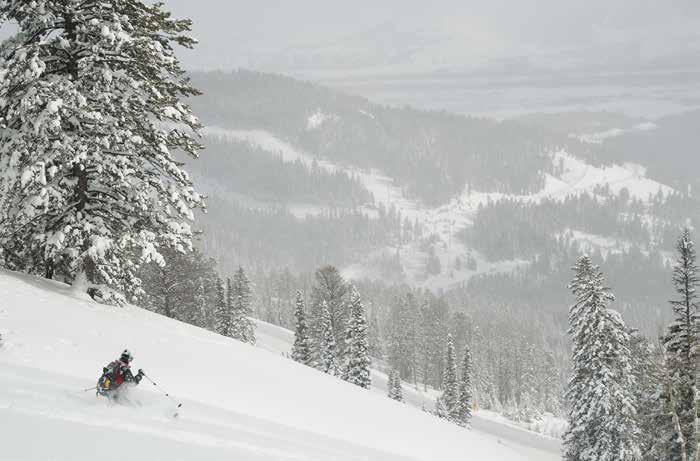
A skier carves tracks into the south face of Mount Glory on Teton Pass above Highway 22, January 2008. The proximity to world-class backcountry on Teton Pass means proficient skiers can make the 2,000-foot ascent of Glory and be back to their cars in less than an hour, oftentimes before heading to work for the day.
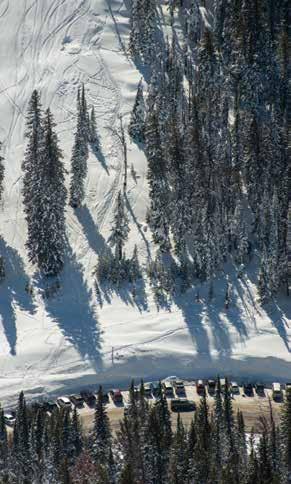
Backcountry skiers ride in the back of a truck up the east side of Teton Pass after hitching a ride from Old Pass Road near Wilson, February 2014. The practice is common on both sides of Teton Pass for skiers and snowboarders doing laps in the backcountry.

JACKSON HOLE | WINTER 2023 137
An osprey takes on a pair of Canada geese in an attempt to intimidate them off a platform nest at Skyline Curve along Highway 22. Two osprey—birds that typically use the same nest year after year—had arrived to find the geese in residence and spent several days unsuccessfully attempting to kick them out. April 2013

A young cougar emerges from a tree well near Highway 22 just west of Wilson. March 2008

A small herd of elk runs through a field on the north side of Highway 22 near Wilson. The elk were trying to cross the road to join the rest of their group on the south side of the highway. December 2013

138 WINTER 2023 | JACKSON HOLE
ESSAY
PHOTO
Cars snake past an overturned box truck that wrecked while descending the west side of Teton Pass, snarling traffic for evening commuters. January 2021 JH


JACKSON HOLE | WINTER 2023 139
Avalanche debris dwarfs motorists on Highway 22 below Glory Bowl near Teton Pass. Poor visibility and dangerous avalanche conditions can keep Teton Pass closed for extended periods, sometimes days at a time. December 2008


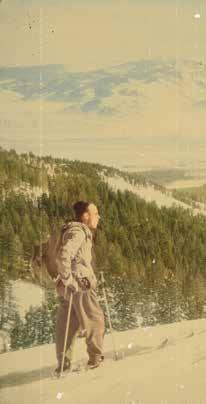


140 WINTER 2023 | JACKSON HOLE
DINA MISHEV
THIS PAGE: Skiers hiking up the Glory bootpack shortly after sunrise.
TOP RIGHT: Locals and guests of Trail Creek Ranch skied on Teton Pass for fun as early as the 1930s. Here Fred Brown, the first president of the Jackson Hole Ski Club, skis on the south side of the pass with Betty and Willy Mueller.
BOTTOM RIGHT: Bill Briggs and his support team for the first ski descent of the Grand Teton June 16, 1971. Photo was taken after the climb. Shown L to R: John "Blackie" Bolton, Bill Briggs, Jorge Colon, Robbie Garrett.
No Lifts Necessary




 // BY DINA MISHEV
// BY DINA MISHEV



People skied in Jackson Hole long before the arrival of ski lifts...and they still do. Today it’s called ski touring, and it is more popular than ever.



As I hike up a well-established bootpack on Mt. Glory, a hulking peak rising 2,000 vertical feet just north of Teton Pass, my headlamp is one light among dozens. Each spotlight is a person carrying a backpack with ava lanche gear like a probe pole and snow shovel inside and a snowboard or skis strapped to the outside. We’re “dawn patrolling,” mountain-town speak for squeezing in a ski run, preferably of powder, before the start of the work day. A couple of times when I’ve had family and friends visit ing with the fitness and skills required to dawn patrol— “dawn patrol” is both a noun and a verb—I take them. What was a regular weekday morning for me was the highlight of their vacation.
Backcountry skiing (also known as ski touring) is a type of skiing done in areas in which there are no lifts, no ski patrol, and no avalanche control. It requires special ized gear, avalanche awareness, and a willingness to climb a mountain before skiing it. It’s not unique to Jackson Hole; over the last decade, and particularly since the start of the pandemic, ski touring has grown tremendously in popularity. Between August 2020 and March 2021, sales of backcountry skis, boots, and bindings were up 115 per cent compared with the same period over the previous years, according to the industry trade group Snowsports Industries America.
While ski touring isn’t unique to Jackson Hole, Jackson Hole is unique in the U.S. for the quantity and quality of its backcountry skiing, and its relatively easy


JACKSON HOLE | WINTER 2023 141
COLLECTION OF JACKSON HOLE HISTORICAL SOCIETY AND MUSEUM
COLLECTION OF JACKSON
HOLE HISTORICAL SOCIETY AND MUSEUM
TOP:








BOTTOM: Neil Rafferty
COLLECTION OF JACKSON HOLE HISTORICAL SOCIETY AND MUSEUM
Margaret “Muggs” Schultz, who turns 94 in 2023, guided these skiers. “A group would go out before breakfast; we’d hitch a ride up in the mail truck and ski down to the ranch,” she says. They’d be back at the ranch in time for breakfast. After breakfast, a larger group would be driven to the top of the pass in the ranch’s ski bus, and they’d ski a different run down. “We never worried about running out of powder,” Schultz says. “There wasn’t anyone else up there.”
While some people skied powder on the pass, others used their skis as a way to explore Grand Teton and Yel lowstone National Parks. Local adven turers did multiday cross-country ski tours in the Tetons starting in the late 1920s. It wasn’t until the 1960s that ski ers began looking at peaks in the park as ski objectives. And then, on June 15, 1971, Bill Briggs blew everyone’s mind when he successfully skied the Grand Teton. “That recalibrated everyone’s idea of what was possible,” says histori an Tom Turiano, who has backcountry skied around Jackson Hole since 1985.
Hole is unique in the backcountry ski ing world because many of the ranges are sized and shaped just right to allow a lifetime of one-day outings,” says ski guide, author, and historian Tom Tu riano. “These outings vary widely from the most mellow to some of the most extreme anywhere.” Equally rich is the history of ski touring in Jackson Hole. Books have been written about the top ic (see sidebar); here we only have room to share the broadest of strokes.
People have ski-toured in Jackson Hole since homesteaders arrived here in the 1880s. For decades, it wasn’t done for recreation, but necessity.

60-mile round-trip up and over (and back up and over) Teton Pass. In sum mer, this was done by horse, but in the winter, volunteers skied to get the mail. Homesteaders on Mormon Row sometimes skied the 10-ish miles into Jackson for dances or supplies.

But it didn’t take long for ski touring to be done for fun. Locals made turns on Teton Pass in the 1920s and 30s. A 1940 map of the pass shows many of the same runs people ski today. For decades, a group came and stayed at Trail Creek Ranch at the base of Teton Pass for one month and skied the pass almost every day. And for decades,
Briggs skiing the Grand wasn’t remarkable only for its audacity, but because it introduced ski mountain eering—a mix of snow climbing and skiing—to North America (it was al ready happening in Europe). The argu ment can easily be made that Briggs is the father of North American ski mountaineering; he’s undisputedly the father of ski mountaineering in the Tetons. (Skiing the Grand was only one of Briggs’ many achievements; in 2009 he was inducted into the U.S. National Ski Hall of Fame.) “You build on the successes and failures of your predecessors,” says Turiano. “We knew Barry [Corbet] had skied the East Face of Buck, so we thought, ‘let’s go and ski that.’ We knew [Doug] Coombs skied the Sliver, so that is a thing to do. The pace of route development acceler ates. In the Tetons, the classic extreme routes have become so standard that to take it a step farther is really taking it a step further. The skill and fitness levels of the skiers doing new things
142 WINTER 2023 | JACKSON HOLE
DINA MISHEV
Skiers use climbing skins affixed to the bases of their skis to explore the Gros Ventre mountains on the east side of Jackson Hole.
(shown here), ran an early-season rope tow on Teton Pass from 1947 until the late 1960s. Rides were 10 cents each.
today are to the point of total mastery of the sport.”
It’s not just the lines people are skiing in the backcountry that have changed, but the number of people who are backcountry skiing. Angus Thuermer, a Teton Pass skier since 1978, thought Teton Pass was “over” in the early 1990s. “I was up there one day, and it was all tracked out,” he says. A writer, editor, and photographer, he had been holding off on publish ing his book Jackson Hole Ski Atlas for several years. He says “the Teton back country was somewhat of a secret.” He didn’t want to be the one to blow it up. “I didn’t want my friends to get upset at me,” he says. But after seeing it all tracked out, “I thought, ‘I might as well publish the Ski Atlas,’” he says. Jackson Hole Ski Atlas was published in 1995.

Pass crowds in the 1990s were quaint when compared to today’s, though. Teton Backcountry Alliance, a nonprof it advocacy group, estimates that over each of the past several winters, more than 150,000 runs have been taken on Teton Pass. Most of these are unevent ful, but fights have broken out in the parking lot between cars waiting in line for a parking spot and also on the Glory bootpack, where the speeds of hikers can differ vastly. Skiers and snowboard ers have triggered avalanches that have run down to Wyoming Highway 22, which more than 5,000 cars commute over every day, and closed the road to traffic. More than one dozen skiers have died in avalanches. Something that in the 1990s seemed as likely to happen as a T-Rex bootpacking up Mt. Glory—that the Wyoming Department of Transportation would stop plowing the parking lot at the top of Teton Pass, effectively ending the easy accessibility that makes skiing there so popular—is now a topic of discussion.
Thuermer, who still skis the Teton Pass backcountry says, “In one sense [Teton backcountry skiing] is way over now. But in another sense, it is still go ing strong. It is just done by different people at different times. And it is still the greatest, but don’t tell anyone that.”
JACKSON HOLE | WINTER 2023 143
SALES • RENTALS • SERVICE NORDIC TOURING SKIS • SKATE SKIS SKIN AND CLASSIC SKIS • TELEMARK SKIS KIDS SKIS • SNOWSHOES AND MORE! NORDIC SKIING • RUNNING • MOUNTAINEERING JUST OFF THE TOWN SQUARE ON DELONEY STORE HOURS: 9–6PM, SUN 10–5 (307) 733-6094
Jackson Hole’s Premier Nordic and Cross Country Skiing Specialist Since 1974!
THE VALLEY’S LARGEST CROSS COUNTRY SKIING RENTAL AND DEMO FLEET!
Photo Courtesy David Swift & GTNPF
History of Ski Touring
1891 Volunteers ski up and over Teton Pass to Driggs, Idaho, (and back) to collect mail for Jackson Hole.
1931 (or 1932) Fred Brown and chief Grand Teton ranger Allyn Hanks make the ear liest recorded ski tour into Grand Teton Monument; they go up the south fork of Cascade Canyon.
1937 The Jackson Hole Ski Club is formed; Fred Brown is its first president.
1937 Brown hosts the Dartmouth ski team at his family’s Teton Pass Ranch; during the ski team’s stay, the members demonstrate the latest ski techniques—including using two poles and fixed-heel bindings—to specta tors in Telemark Bowl on Teton Pass.
1971 After three years of unsuccessful attempts to ski the Grand Teton, Bill Briggs is successful, skiing from the summit of the highest peak in the Tetons.
Early 1970s A group of three skiers from Idaho ski 25 Short and Peak 10696 in Grand Teton National Park; they are looking for alternatives to Teton Pass, which they think has become too popular.


1968 Ray “Whitey” White and three others ski from Jackson to Granite Hot Springs in a day.
1966 Dick Person opens Skiing Unlimited, a ski-touring guide service.
1965 Jackson Hole Ski Area opens.
1974 Rod Newcomb founds the American Avalanche Institute in Jackson Hole to teach ava lanche awareness and hazard evaluation.
1975 Maurice “Rick” Horn and Roger LaVake publish The Guide to Ski Touring in Jackson Hole
1975 Bridger-Teton National Forest avalanche forecaster Gary Paulson starts a public phone line to offer current weather and avalanche forecasts, which matures into the Bridger-Teton Avalanche Center of today (jhavalanche.org).
1978 Aspen-based freeskier Steve Shea becomes the second person to ski the Grand Teton. The 1981 docu mentary short Fall Line chronicles his adventure.
1980 Teton Mountain Tour ing is founded in Teton Valley and offers ski tours in the Big Hole Mountains.
2006 In response to an increase in backcountry users on Teton Pass, the Wyoming Department of Transportation, the Bridger-Teton National Forest, and Friends of Pathways partner to create the position of Teton Pass Ambassador. After several years of serving as a volunteer ambassador, Jay Pistono, who has been skiing the area since 1978, is hired.
2006 Steve Romeo launches TetonAT.com, a website dedicated to backcountry skiing and ski mountaineering in Jackson Hole and Grand Teton National Park.
2000 Three skiers die in avalanches on Teton Pass.
1999 Jackson Hole Mountain Resort becomes the first ski area in the continental U.S. to open its boundaries; skiers can now legally access adjacent backcountry.
2008 The ski cabin, now 55 winters old, gets a new wood stove, roof, and outhouse.
2009 Conor Miller publishes The Black Book: Select Lines from Grand Teton National Park.
2010 The Bridger-Teton Avalanche Center Foundation is founded to help fund the operations of the Bridger-Teton Avalanche Center, which provides daily avalanche forecasts for areas around Jackson Hole.
2012 TetonAT founder Steve Romeo and ski partner Chris Onufer die in an avalanche. Romeo’s family decides to keep the site online, allowing future skiers to access its hundreds of trip reports.
144 WINTER 2023 | JACKSON HOLE
1938 Bob Kranenburg, the foreman and caretaker at the Square G Ranch in Moose, and a friend make the first ski tour into Paint brush Canyon in Grand Teton Monument.
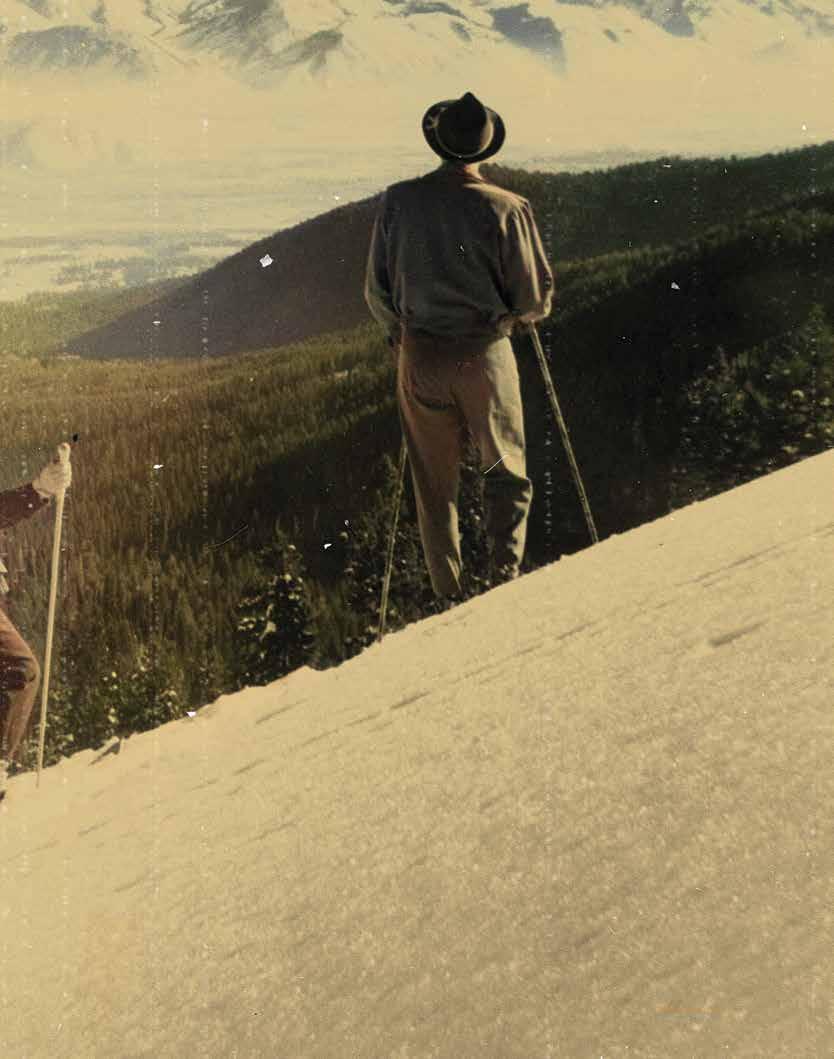
1939 Snow King opens as Wyoming’s first ski area; it has a rope tow.
1940 Alan Huntley makes a ski map of Teton Pass, showing runs on Edelweiss, Thanksgiving Bowl, Black Canyon, Mt. Glory’s southwest slopes, and the north western slopes to Coal Creek, among others.
1940 Brown and friends, including Betty Woolsey, an Olympian and former captain of the U.S. women’s ski team, do a six-day ski tour from Cascade Canyon to Phillips Pass in the Tetons.
1961 Barry Corbet guides two clients on the first descent of the east face of Buck Moun tain in GTNP.
1954 The Jackson Hole Ski Club builds a ski cabin for backcountry skiers in the Sheep Creek drainage north of Jackson Peak.
1947 Neil Rafferty runs an early-season rope tow on Teton Pass. The price is 10 cents a ride. The rope tow closes for the season when the lift at Snow King opens. It runs annually on this schedule until the late 1960s.
1944 Woolsey and Margaret “Muggs” Schultz take Trail Creek Ranch guests skiing on Teton Pass; this continues through the 1960s.
1943 Woolsey buys Trail Creek Ranch at the base of Teton Pass.
Early1980s
Peter Koedt founds Timberline Tours, which specializes in rugged multiday mountain trips.
1985 Koedt skis the entire Teton Crest solo. He doesn’t bring a tent; he builds igloos along the way, cutting blocks with a snow saw.

1987 Former Teton Mountain Touring guides Glenn Vitucci and Carole Lowe found Rendezvous Ski Tours, which has a permit to build a yurt at the top of Plummer Canyon in Teton Valley.
1995 Tom Turiano publishes Teton Skiing: A History and Guide to the Teton Range
2016 A skier-triggered avalanche on Teton Pass catches a Jeep and pushes it off the road; the driver is trapped (but eventually rescued), and the highway is closed overnight.
2017 Teton Backcountry Alliance is founded to promote safety, education, and conser vation with the goal of ensuring that backcountry skiing is able to continue in the Tetons.
2019 An estimated 150,000 runs are made by skiers and snowboarders on Teton Pass.
1991 Exum guide and author Tom Turiano starts the Exum Ski Mountaineering Camp.
2020 TBCA brings on seven volunteer backcountry ambassadors to help Pistono.
1989–1994 Snowboarder Stephen Koch does the first descents of five lines in the Tetons— the Southeast Couloir on the South Teton, Bubble Fun Couloir, Apocalypse Couloir, Northwest Ice Gully, and Black Ice Couloir—which ski guide and historian Tom Turiano describes as “the most extreme skiing ever achieved in the U.S.”
1993 Teton County Search and Rescue is founded.
1995 Angus M. Thuermer Jr. publishes the first edition of the Jackson Hole Ski Atlas
| WINTER 2023 145
JACKSON HOLE
TheBooks Backcountry guidebooks over the years
THE GUIDE TO SKI TOURING IN JACKSON HOLE 1975, OUT OF PRINT
 Maurice “Rick” Horn and Roger LaVake
Maurice “Rick” Horn and Roger LaVake
With the exception of the Grand Teton, the 20-some tours in this guide are, by today’s standards, cross-coun try ski adventures rather than backcountry skiing. Tours include Shadow Mountain, Bradley Lake, and Cache Creek. And the authors only include the Grand Teton, which, when this guide was published, had only been successfully skied once, as a joke. In its description they write: “SPECIAL NOTE: This difficult and hazardous tour has only been done once in the history of skiing— by Bill Briggs of Jackson on June 16, 1971.” They end the description by wishing anyone attempting this ski good luck.
50 SKI TOURS IN JACKSON HOLE AND YELLOWSTONE 1990, OUT OF PRINT Richard DuMais


Similar to the 1975 guidebook, DuMais’s book focuses mostly on ski tours rather than on downhill turns. In the introduction, he writes, “… this is a land of superlatives for winter sports enthusiasts. But it is to the cross-coun try skier more than anyone else that this vast region extends the greatest range of possibilities.” Tours include many of the same ones in the Horn/LaVake book, just with greater detail, and DuMais also expands into Yellowstone.
JACKSON HOLE SKI ATLAS 1995, FIFTH EDITION AVAILABLE EARLY WINTER
2023
Angus Thuermer, Jr.
Thuermer, the former editor of The Jackson Hole News and, later The Jackson Hole News&Guide, says he held off on publishing this book for several years after he had all of the photography. This was the early 1990s and, “the Teton backcountry was somewhat of a secret,” he says. The atlas—a 40-page collection of 37 images from Teton Pass, Snow King, JHMR, Grand Teton National Park, and Grand Targhee—was only published after Thuermer went up to ski the pass one day in the mid-90s and it was all tracked out. “I said, ‘it’s over, might as well publish the Ski Atlas.’” The book is not a guidebook, though. Thuermer says: “It was never intended to be. You had to figure out how to get there and how to get back and how to get down. It is ski porn in one respect.” Thuermer’s images were taken not looking up from the bottoms of runs, but, thanks to the use of small aircraft, looking across at runs. “It’s a much better view than the foreshortened one you get from looking up from the bottom,” he says.
TETON SKIING: A HISTORY AND GUIDE TO THE TETON RANGE 1995, OUT OF PRINT; FIND USED COPIES ONLINE

 Tom Turiano
Tom Turiano
Turiano spent seven years working on this 221-page book that, as its title suggests, is as much of a history of skiing in the range as a guidebook. “Right away, I started digging into the history,” Turiano says. “I’d call some people and ask about their skiing adventures and then they’d tell me, ‘oh, you need to talk to so-and-so,’ and then I’d cold call them and tell them what I was doing. I’d send everyone a question naire and ask them to fill out the peaks that they had skied.” (Turiano still has all of these filled-out questionnaires in his
archives.) The routes in the book range from mellow valley tours to you-fall-youdie couloirs. Although Turiano wrote Teton Skiing as more of a personal project than because he thought there was a need for a guidebook, “people noticed it,” he says. “And people I didn’t inter view came out of the woodwork to tell me the peaks they had skied when.” Turiano has kept all of these notes and might incorporate them into a future book, Jackson Hole Backcountry Skier’s Guide: North.
SELECT PEAKS OF GREATER YELLOWSTONE: A MOUNTAINEERING HISTORY AND GUIDE 2003, OUT OF PRINT; A SECOND EDITION IS COMING IN SUMMER 2023

Called “The Bible” by TetonAT.com founder Steve Romeo, Tom Turiano’s second book includes the same mix of history and route descriptions as his first book, but broadens his subject matter from the Tetons to the 15-million-acre Greater Yellowstone Ecosystem. Turiano’s eponymous “select peaks” are 107 mountains across the Madison, Gallatin, Beartooth, Absaroka, Wind River, Gros Ventre, Wyoming, Salt River, Snake River, and Teton Ranges. Copies of this book, which has been out of print for at least a decade, call sell for upward of $400 on Amazon. Look for a second edition in summer 2023.
THE BLACK BOOK: SELECT LINES
FROM GRAND TETON NATIONAL PARK 2009, FROM $47, AVAILABLE AT BLURB.COM
Miller, who worked at Alpinist magazine in the early 2000s, did this book because, he says, “I loved the other guides, but felt the beauty of the lines was missing. I would be mesmerized by them in person, and there was nothing to look at when I got home from skiing.” Because of its focus on images and purposeful lack of
Tom Turiano
Conor Miller
146 WINTER 2023 | JACKSON HOLE
text, it’s more accurate to call The Black Book a picture book than a guidebook. Miller’s photography is inspired by the work of photographers including John Scurlock and Bradford Washburn, and the aerial images in The Black Book—including of Hidden Couloir (Thor Peak), Amora Vida (South Teton), and Fallopian Tube (Mt. Woodring)— are artistic in addition to being inspirational. Miller shied away from written descriptions because, “I didn’t want to tell people how to get anywhere or have any words that someone might use to make a bad decision,” he says.
Covering upward of 1,000 routes in the southern Tetons, Snake Rivers, Caribous, the western Salt River Range, the southern Gros Ventre, and the southwestern Winds, this 406page book caused Bill Briggs, the first person to ski the Grand Teton and a member of the U.S. National Ski & Snowboard Hall of Fame, to call Turiano a “visionary” among backcountry skiers. But, with geology and history mixed in with route descriptions and 500+ photos and virtual renderings, this is the rare guidebook that’s not just interesting to skiers. Anyone interested in the history of the mountains around the valley will enjoy this book. Turiano says he wrote JHBSG: South, which does not include the areas of the Tetons most popular with backcountry skiers (north of Teton Pass), “because the Pass was getting crowded and [Grand Teton National Park] was getting crowded and I thought people would be interested in expanding their horizons a bit. There is so much more out there to ski.”
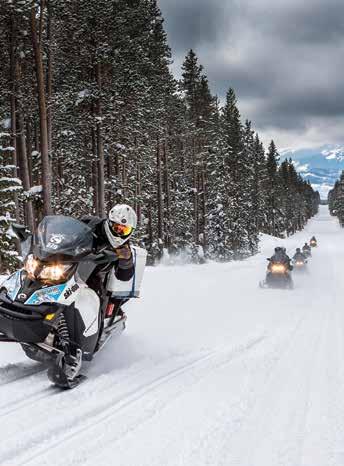

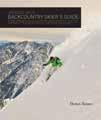
Although this has the same title as Turiano’s 2003 book, it is more than just a second edition of Select Peaks. “It’s a complete rewrite,” Turiano says. The “select” peaks included in the book are the same 107 as in the original, but with “many new routes added to the peaks,” Turiano says. Also different is that Turiano eliminated the 80-page general history section that started out the first edition and instead added “Deeper Dive” sections interspersed throughout the book. “Many of these deeper dives are completely new information, new research, and new writing,” he says. Finally, the photos in this book are in color (versus the black and white of the first edition). JH
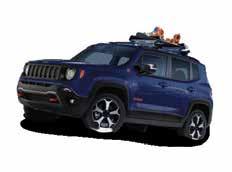






JACKSON HOLE | WINTER 2023 147
JACKSON HOLE BACKCOUNTRY SKIER’S GUIDE: SOUTH 2014, $70, AVAILABLE AT THOMASTURIANO.COM
Tom Turiano
SELECT PEAKS OF GREATER YELLOWSTONE: A MOUNTAINEERING HISTORY AND GUIDE SECOND EDITION, REVISED AND EXPANDED COMING SUMMER 2023
Tom Turiano

WILD AND MILD ADVENTURES

JACKSON HOLE | WINTER 2023 149
EXPLORE
COURTESY PHOTO
PAWPOWER
// BY MOLLY ABSOLON
The dogs jump and bark, leaping in place and eager to go, only barely held in check by an anchor in the snow. They remind me of a bunch of unruly kids— anxious to let off steam and impa tient at having to wait.
“The first 30 seconds seem chaotic. The dogs are so excited,” says Abby Tarver, the owner of Call of the WYld, which offers hourlong dogsled tours at the base of Jackson Hole Mountain Resort for a quick sampling of dogsledding on a trail through open mead ows and aspen groves below the Tetons. “But once they get going, the dogs go into work mode. It’s actually very peaceful out on the trail. Children fall asleep on tours all the time.” For now, while they wait to take off, the dogs’ voices electrify the air. Mushers, I learn, call this chorus of barks, whines, and howls “singing,” and I can’t think of a better word to describe this spontaneous outpouring of excitement.
Off the edge of the mayhem, the dogs that aren’t on call for this hour’s tour sit calmly and watch. Tarver takes me around, introducing me to each of them. They all have names and per sonalities, and she takes time to
snuggle with them as she gives me the tour. She’s in her third year of business, and now has 59 dogs in her kennel. Many of the dogs are retired racers. “They still love to run; they just aren’t super com petitive,” she says.
The first company in the area to offer dogsledding tours to the public, Frank Teasley’s Jackson Hole Iditarod Sled Dog Tours is located 30 miles to the south. Tea sley is a veteran of eight Iditarod Sled Dog Races (his top finish was a sixth place in 1991, but almost more important to him were the Humanitarian Award in 1989 and Most Improved Musher Award in 1991). Closer to home, he’s the cofounder and executive race direc tor of the Pedigree Stage Stop Race, a race that starts in downtown Jackson before taking mushers into the Bridger-Teton, Shoshone, and Caribou-Targhee National For ests. Teasley has worked with dogs since 1981. He considers himself a coach for more than 200 elite four-legged athletes. Some of his canine athletes are racers—the A-team—while others aren’t that interested in competing. The lat ter take guests for tours along Granite Creek in the Gros Ventre Mountains.
150 WINTER 2023 | JACKSON HOLE EXPLORE DOGSLEDDING
Sit back and enjoy the experience, or try your hand at mushing, at three area dogsledding outfitters.
 KAYLA RENIE
KAYLA RENIE
2023 151
JACKSON HOLE
| WINTER
Sled dogs wait in anticipation for the start of a tour.
EXPLORE DOGSLEDDING

On Togwotee Pass, Continental Divide Dog Sled Adventures, owned by Billy Snodgrass, offers yet another dogsled experience. Like Teasley, Snod grass has racing experience, including competing in the Iditarod five times. He started dreaming of the Iditarod soon after he began running dogs on his ranch in Dubois, Wyoming, in 1981. Dogs, he discovered, were more reliable than snowmobiles for getting around his snow-covered property. Snodgrass never raced in the Iditarod to win; he
"
loved the great adventure of traveling hundreds of miles through Alaska with his dog teammates.
“We are often told that a dogsledding adventure is the highlight of a winter trip to Jackson Hole,” WYld’s Tarver says. “No matter your age or athletic ability, you will be pulled back in time as the dogs guide your sled through majestic mountain scenery and sparkling snow. These tours provide a perfect balance of exciting thrills, peaceful relaxation, and happy dogs ready to be petted.”
FRANK TEASLEY, IDITAROD VETERAN AND FOUNDER OF JACKSON HOLE IDITAROD SLED DOG TOURS

CALL OF THE WYLD
Starting on the hour, every hour from 9 a.m. until 3 p.m. with a break at noon for a meet-and-greet with the dogs (this is open to the public), Call of the WYld offers hourlong tours Wednesdays through Mondays between December 15 and March 15 (weather and snow permitting). The tours start on a groomed trail through the woods and then pop into open meadows with—on clear days—a view of the Tetons towering overhead. If trail conditions permit, participants can try standing on the back run ners of the sled with their guide. The dogs pull up to 400 pounds, including the guide, so most teams can handle one or two clients per sled. Tours start at $400, $500 on select holiday dates; 307/413-6637, callofthewyld.com
152 WINTER 2023 | JACKSON HOLE
Pulling is in these dogs’ DNA. When you put a harness on them, all they want to do is run.”
Dogs at Call of the WYld before the start of a tour.
Dogs get harnessed before the start of a tour in Teton Village.
KAYLA RENIE
KAYLA RENIE
MUSHERS
Dogsledding is one of the few sports where men and women compete evenly against each other. Anny Malo has won Wyoming’s Pedigree Stage Stop Race for the past four years, and in 2022 the top three finishers in that race were women.

Contrary to popular belief, mushers don’t just stand on the sled rails yelling at their teams to go. They need to be athletic and strong to lean into turns and run up hills. On descents, mushers hold back the sled so it doesn’t overtake their dog team. Mushers need to speak the language of their dogs and to know when to push them and when to hold back.
Both Snodgrass and Teasley were mentored in their careers by some of the great names in dog mushing and, in turn, are now mentoring a new generation of mushers. Tarver, who says she grew up in a cat family, cut her teeth as a dog musher working for Snodgrass. She’d seen a documentary on famous Iditarod musher Lance Mackay and decided she wanted to run dog teams; she showed up in Dubois at the Continental Divide office and said they should give her a job. They did.

JACKSON HOLE | WINTER 2023 153
THE DOGS
When most of us think of dogsledding, we likely picture Siberian huskies or Alaskan Malamutes. That image comes from Hollywood. Most of today’s sled dogs—at least racing sled dogs—are neither of these breeds. Siberian huskies and Alaskan Malamutes were used to haul loads in the Arctic for hundreds of years. Bred for their strength, endurance, and ability to withstand extreme cold, these dogs are freight animals and can pull heavy loads but aren’t known for their speed. Call of the WYld has a few Siberian huskies in its kennel, but more often, sled dogs these days are Alaskan huskies, which look very little like Siberian huskies or Alaskan Malamutes.
Not recognized as a distinct breed by kennel clubs, Alaskan huskies are essentially mutts. They come in all shapes, sizes, and colorings. Generally midsized, lean, and well-muscled, Alaskan huskies are a product of selective breeding to maximize desirable sled dog traits—speed, endurance, aptitude for pulling, athleticism, intelligence, and tolerance for cold—rather than for specific coloring or conformation like other breeds. On average, Alaskan huskies are about 20 to 26 inches tall, and weigh between 35 and 75 pounds.
Racing teams of Alaskan huskies can travel up to 28 mph. In 2021, Dallas Seavey’s team of dogs ran the 1,000-ish-mile Iditarod Race in a record time of 7 days, 14 hours, 8 minutes, and 57 seconds. (This includes a mandatory 24-hour rest stop and two 8-hour stops.) Iditarod teams average a pace of roughly 8 mph over the length of the course.

Dogsledding has come under fire from animal rights groups in the past, and there were some infamous scandals that colored people’s impression of the sport a few years back. But Tarver, Snodgrass, and Teasley prioritize their dogs’ care and comfort over all other considerations. (Fun fact: Teasley says he goes through 80,000 pounds of dog food a year!)
CONTINENTAL DIVIDE DOG SLED ADVENTURES


Continental Divide Dog Sled Adventures offers two-hour tours from Togwotee Mountain Lodge, 48 miles north of the town of Jackson just below the highpoint of Togwotee Pass. The tours follow groomed trails that meander through open meadows, pine forests, and under craggy peaks with spectacular views of the Teton Range to the west. Guests can opt to include lunch and transportation from Jackson in their package. Tours start at $310 per guest including lunch and transportation, $250 per guest without; 307/851-6539, dogsledadventures.com
Frank Teasley and his team of mushers cater tours to clients. If you just want to ride in a warm, cozy sled, great. If you want to try driving a team with your guide, great. Full-day tours include the opportunity to soak in Granite Hot Springs, a historic hot springs pool fed by mineral-rich thermal water. Both half- and full-day tours include a hearty lunch, hot bever ages, and homemade cookies. Groups of four can also book an over night adventure that includes 30–40 miles of trail, a family-style dinner, breakfast, and a bed in a cozy cabin. Half-day tours are $345 per person, full-day tours are $445 per person, overnight tours are $975 per person; 307/733-7388, jhsleddog.com
154 WINTER 2023 | JACKSON HOLE
DOGSLEDDING
EXPLORE
PRICE CHAMBERS
JACKSON HOLE IDITAROD SLED DOG TOURS
PRICE CHAMBERS COURTESY PHOTO
PEDIGREE STAGE STOP





Wyoming’s only sled dog race, the Pedigree Stage Stop Race, was first held in 1996. Founded by Frank Teasley, with the help of Jayne Ottman, the race showcases the state and aims to make sled dog racing more accessible to the public. It follows a Tour de France format, with seven 30- to 35-mile stages in various western-Wyoming/eastern-Idaho communities over the course of 10 days of racing. Jackson has traditionally hosted the race’s start with a ceremonial leg at the Town Square. Communities usually hold banquets for the racers, and spectators are encouraged and welcome at all the stages. The race is known as a fun, family affair, and most mushers love to introduce their dogs to fans. Three hundred and forty-nine teams with a total of 5,496 dogs have raced in the Stage Stop since its founding. The 2023 race will be held January 27 through February 4. JH


JACKSON HOLE | WINTER 2023 155
BRADLY
J. BONER
REBECCA NOBLE
in Yellowstone YURTING
Feel the wildness and quiet of winter in the park by staying at a small yurt camp that offers guided cross-country skiing. //

156 WINTER 2023 | JACKSON HOLE EXPLORE YELLOWSTONE
TEXT AND PHOTOGRAPHY BY DINA MISHEV
The fresh powder is about as deep as the spaces between the trunks of the immature lodgepole pine trees I’m tromping through on skis: 18 inches. Breaking trail is hard work, and, because of the tightness of the trees, the trail I leave behind me looks like the path of an intoxicated penguin. Nowhere does it go straight for more than five feet. Still, there is nothing else I’d rather be doing. For the first time in my 26 years explor ing Yellowstone, I have a sense of what the park felt like to its earliest white ex plorers. With the exception of my fel low adventurer, Piper Gillard, a guide with Yellowstone Expeditions, I haven’t seen another human since a snowcoach dropped us off at the Cygnet Lakes trail head several hours ago. Skiing into the forest—here thick with 20- to 30-foot tall lodgepole pines growing back after the area was burned by wildfire in 1988—we haven’t even seen any signs of other hu mans. (Although there are plenty of ani mal tracks—ermine, pine marten, wolf, snowshoe hare, bison, and coyote.)

JACKSON HOLE | WINTER 2023 157
Approaching Yellowstone Expeditions' yurt camp near Canyon Village in Yellowstone National Park.
While Gillard and I are experienc ing an as-untouched-by-man land scape as did the park’s early winter ex plorers, we have modern conveniences including a GPS track to follow and radio communication. We also have a delightfully cozy base camp that, just that morning, served us a breakfast of bacon, granola, and spinach-and-ham frittata and which, when we return this evening, will have a spread of charcute rie waiting. We’ll get back to camp and charcuterie from our ski tour by using the radio to summon one of the camp’s snowcoaches to pick us up along one of the park’s snow roads.
“Camp” is Yellowstone Expeditions’ Yurt Camp. Near the north rim of the Grand Canyon of the Yellowstone, the camp includes a kitchen yurt, a dining


158 WINTER 2023 | JACKSON HOLE
EXPLORE
YELLOWSTONE
Meals are hearty and different every day. Breakfast could include fresh fruit, frittata, bacon, and cinnamon rolls.
The 2022-2023 season is Yellowstone Expeditions' 40th anniversary.
Skiing into Pelican Valley north of Yellowstone Lake.




yurt, nine “yurtlets,” a bathhouse with composting toilets and foot-pump sinks, and a wood-heated sauna; and it welcomes about 15 guests at a time during its 10-week season. Guests can stay for three, four, or seven nights, and stays include transportation to and from West Yellowstone, Montana, all meals, and daily guided cross-country ski tours and snowcoach transporta tion to and from trailheads.
Yellowstone Expeditions’ camp is the smallest and most remote of the three winter lodging options in Yellowstone. (The other two places visitors can stay are Old Faithful Snow Lodge and Mam moth Hot Springs Hotel.) A handful of park and concessionaire employees live in Canyon Village near the yurt camp, but, aside from these, the next nearest humans are 35 miles away.
While Yellowstone was the thirdmost-visited national park in the coun try in 2021, the most recent year for which there are statistics, only about

110,000 of that year’s 4.9 million visi tors came during the park’s winter sea son, which runs from mid-December into March. This means any winter trip to Yellowstone will be quieter and sig nificantly less crowded than a summer trip. The yurt camp takes this one step further; here, it feels like you’ve got the park to yourself.
An example: On day one, I and 10 other guests arrive at camp in the after noon via a five-ish hour snowcoach ride from West Yellowstone, during which we make frequent stops to look at wild life and thermal areas and munch on snacks. After we all settle into our pri vate yurtlets, guides take us to the north rim of the Grand Canyon of the Yellow stone. The park grooms a network of ski trails in the area, and on these it’s a cou ple of miles and less than a hour from yurt camp to the canyon’s rim.
A snaggly incision 800 to 1,200 feet deep that starts at the base of the 308-foot-tall Lower Falls of the


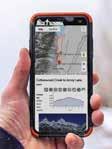


JACKSON HOLE | WINTER 2023 159
EXPLORE
YELLOWSTONE

Yellowstone, the tallest waterfall in the park, the canyon is one of the most vis ited areas of Yellowstone, in summer and winter. But we have it entirely to ourselves. The day trippers are on their way out of the park or headed back to Old Faithful Snow Lodge. It’s possible I imagine this, but, standing at Lookout Point in my ski boots—the first time I’ve been here without having to duck and weave around dozens of other spectators—I don’t just see, but feel the falls. (It feels like there’s a vibrating cell phone between my diaphragm and the base of my ribs.)
By the time I’m back at camp and pinning my sweaty ski clothes up to dry on lines hanging above the king-size bed that takes up the majority of my yurtlet, the vibrating is gone, but my sense of awe is not.
Another day we ski in one big group into Pelican Valley. Just north of Yellow
stone Lake, Pelican Valley is where, in 1901, the last 23 bison in the park hid out from hunters. When we ski across the valley, there are two small groups of bison around, one on either side of an open expanse the size of many football fields. A park law states you must keep a distance of 25 yards from bison, but the guides interpret this as a minimum. “If an animal is reacting to you, you’re too close,” Gillard says. We are able to ski between the two herds without get ting closer than 600 yards to either and without any of the hulking beasts giv ing us so much as a sideways glance. We stop for lunch—sandwiches made back at yurt camp that we carry in small
day packs—on a mossy hillside lightly steaming from unseen underground thermal activity. We return to the snow coaches via a slightly different route than the one we took into the valley. The total number of other people that aren’t part of yurt camp I see all day? Zero.
It’s my last full day at the yurt camp
when I get Gillard as a private guide and we do our tromping through the trees. After three days of skiing, the other guests, several of whom have never be fore cross-country skied, opt to stay close to camp. “I want to feel the wildness of Yellowstone,” I tell Gillard. She says she’s got the perfect tour for us. Indeed.
160 WINTER 2023 | JACKSON HOLE
I don’t just see, but feel the falls. (It feels like there’s a vibrating cell phone between my diaphragm and the base of my ribs.)"
"
Staying at Yellowstone Expeditions' yurt camp near Canyon Village, it's possible to have viewpoints of the Lower Falls of the Yellowstone to yourself.
THE EARLIEST WINTER
INTO YELLOWSTONE

EXPEDITIONS

The first official organized exploration by whites of what is today Yellowstone was the Raynolds Ex pedition of 1859 and 1860. The first winter expedition into the park was in 1876–77, and was, as Jeff Henry writes in his fabulous 2022 book Yellowstone The First 150 Years, “ill-advised and ill-fated from the start.” It wasn’t until January of 1887 that a group of explorers again braved Yellowstone’s winter. It’s difficult to call that expedition a resounding success, but it was more successful than the one a decade earlier. Led by Frederick Schwatka, who had previously explored in the Arctic and rafted 1,300 miles down the Yukon River from Chilkoot Pass to the Bering Sea, a party of more than one dozen men left Mammoth on January 5, 1887 on snowshoes and skis and pulling sleds laden with gear and supplies. They reached Norris on January 7, and the two days it took them to get there was long enough to convince the majority of the group, including Schwatka, that Yellowstone in winter was a bad idea and the only sane thing to do was return to Mammoth. A much-reduced group did continue on and visited the Lower and Upper Geyser Basins, Yellowstone Falls, and Mouth Washburn. On the flanks of the latter, they were trapped by a blizzard for 72 hours and thought death imminent. They survived though, and, 29 days and about 200 miles after departing Mammoth, returned to the park’s headquarters. Photographer Frank Jay “F. Jay” Haynes was among this group and, despite temperatures never rising above zero degrees Fahrenheit—the group’s coldest day was 52 degrees Fahrenheit below zero— he managed to take 42 images; these were the first ever photographs of the park in winter.


DETAILS
Yellowstone Expeditions’ Yurt Camp is open from December 22, 2022 until March 9, 2023. This winter is its 40th season. Rates for a three-night trip start at $2,000/person for double occupancy and $2,400/person single occupancy, four-night trips start at $2,400 for double occupancy and $2,800 for single occupancy, sevennight trips start at $3,400 for double occupancy and $3,800 for single occupancy; 406/646-9333, yellowstoneexpeditions.com JH





JACKSON HOLE | WINTER 2023 161
obsidianexpeditions.com | tours@obsidianexpeditions.com | 307.201.9575
An authorized permittee of the National Park Service.
GUIDED WINTER WILDLIFE SAFARIS OF THE NATIONAL ELK REFUGE & GRAND TETON NATIONAL PARK
Sunrise, sunset & all-day tours. Hotel pick-ups in Teton Village & the Town of Jackson in spacious luxury vehicles. Offered from December 15, 2022 thru March 31, 2023.
Creating lifelong memories in the Greater Yellowstone Ecosystem
℠
to


Off
162 WINTER 2023 | JACKSON HOLE
EXPLORE
DINA MISHEV Camp
JHMR SKI CAMPS
// BY DINA MISHEV
Day two (of four) at my first Steep & Deep Camp at Jackson Hole Mountain Resort, camp coach Bill Truelove reminds me to “schmear” my turns as our group skis down bumps bigger than I’d ever ski on my own, especially since these bumps are in full view of everyone riding up the Bridger Gondola. The morning before, after the 100(ish) campers had been sorted into groups of no more than five skiers and I’d landed with True love, I thought schmear was something done with butter or cream cheese, not skis. But then True love explained a “schmear turn”—a type of turn in which you control your speed throughout the en tire arc—to the group and we spent the rest of the day skiing off piste across the resort practicing them. Day two of the camp, I’m far from expert at schmearing, but it’s already Transformed—note the capital “T”—my skiing. Just before lunch, schmearing allowed me to, for the first time ever, ski a narrow double-black diamond run just south of the Cirque while staying in control, and without panicking.
I moved to Jackson Hole to learn how to ski but lived here for 14 years before I took my first ski les son. That was a mistake. Skiing is not a sport that should be self-taught, at least if the “self” in ques tion is me. After 14 years, I could get myself down about 95 percent of the terrain at JHMR, but, at best it wasn’t pretty, and, at worst, the mechanics of my skiing opened me up to injury.

Although it took me a while to come to the idea of taking a ski lesson, once I made the decision I was all in. I didn’t bother with a one-day lesson, but signed up for one of Jackson Hole Mountain Resort’s Steep & Deep Camps, a camp founded in the 1990s by then-world extreme skiing champi on and JHMR athlete Doug Coombs.
It was in that camp that I learned about schmearing. Since that first camp, which was in 2011, I’ve taken seven more of JHMR’s multiday camps—three Steep & Deep Camps and four of the women-only Elevate Camps. While the Steep & Deep Camp remains the resort’s most popu lar—in 2023, there are five four-day Steep & Deep Camps—JHMR Mountain Sports School began offering a women’s-specific camp about a decade ago and, more recently, began offering a Back country Camp. There are differences between these camps, but they are similar in what makes them special—four days of skiing with the same instructor. While almost every ski lesson can give you some tip or trick to take away, multiple days of skiing with the same coach brings breakthroughs.
Schmearing was my first breakthrough. Breakthroughs at subsequent camps included learning to weight the fronts of my skis (Elevate Camp 2022), correctly timing my pole plants (Steep & Deep 2016), and retracting and extend ing in bumps (Elevate 2019). Every camp is differ ent, and, going into one, I have no specific idea of what kind of breakthrough I’ll have—or even what kind of breakthrough I hope for. I just know that I’ll emerge from camp a better and more confident skier.
This winter, for the first time, JHMR is limit ing the number of skiers and riders in each camp. “The smaller camp numbers will allow for a more intimate and personalized experience, and we will be able to match coaches and guests with an in creased amount of accuracy,” says Lexey Wauters, Jackson Hole Mountain Resort Mountain Sports School assistant director.
Up for transforming your skiing? Here’s info to help you decide which camp is best for you.
their next run.
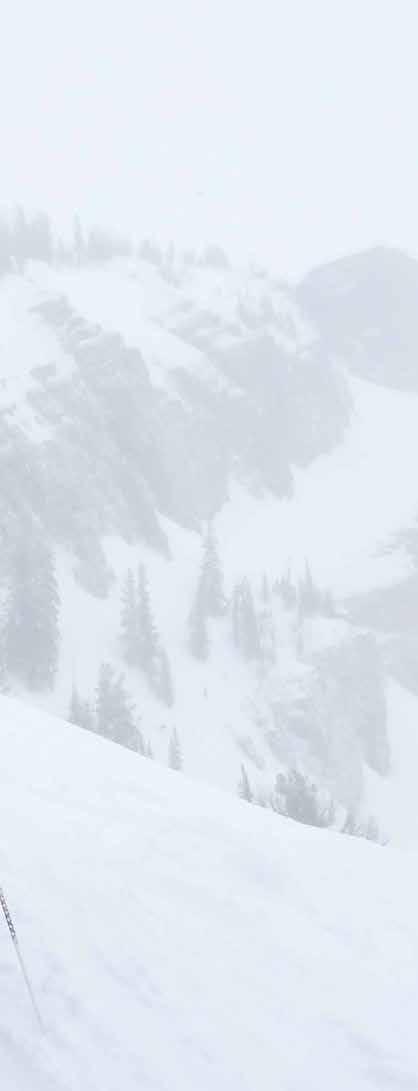
JACKSON HOLE | WINTER 2023 163
Become a better skier or rider during a multiday ski camp.
A group of women in the Jackson Hole Mountain Resort Elevate Women's Camp wait to take
EXPLORE
JHMR SKI CAMPS
ELEVATE WOMEN’S CAMP
This camp welcomes women skiers who range from inter mediate to expert, allowing groups of friends of differing ski abilities to take a ski vacation together. (However, the included day of backcountry skiing with a JHMR mountain guide is for advanced- and expertlevel groups only.) The Elevate "ski-off" on the first morning of camp that sorts campers into groups of similar ability usually happens on Easy Does It, a groomed intermediate slope beneath the high-speed Casper Lift, or Amphitheater, which is also a blue run but between the Bridger Gondola and the Thunder Lift. Elevate is unique among JHMR’s camps for having a day off in the middle of the camp—so you ski four out of five days. I find this makes my third and fourth days in the camp much more productive and fun than they’d be without a rest day.
This camp for expert skiers and snow boarders aims to teach campers how to safely and efficiently ski JHMR’s steep est runs. The “ski-off" usually happens in Cheyenne Bowl, an area of ungroomed black diamond runs off the Sublette Lift. Expect to ski more than 30,000 feet of vert a day; only a fraction of this will be on groomed runs. Some groups have the goal to ski Corbet’s Couloir—a double-black diamond run that, most seasons, requires skiers and riders to jump in at the top—on the last day of camp. At least one morning or afternoon of the camp, campers ski out of JHMR’s boundaries and into the backcountry south of the resort with a mountain guide. Ninety percent of Steep & Deep campers are men.


164 WINTER 2023 | JACKSON HOLE
STEEP & DEEP
DINA MISHEV
KATHRYN ZIESIG
MAMMUT BACKCOUNTRY CAMP


Jackson Hole was the first resort in the Lower 48 states to open its boundar ies to backcountry skiers. In this camp—for advanced-intermediate and above skiers—JHMR mountain guides teach campers about avalanche awareness and efficient touring and terrain-selection techniques. “This was a natural out growth of the Steep & Deep and Women’s Camps,” Wauters says. “Realizing how popular the backcountry tour day of the camp was, we understood that there was a demand for a camp that really focused on backcountry skills. The intention is for it to be an immersive experience—learning about backcountry travel, risk evaluation, gear, and more—all day for four days. Our open access to the Bridger-Teton National Forest backcountry to the south of the resort gives us premium terrain to explore and develop these skills.”
LADY SHRED SKI & SNOWBOARD CAMP




This camp is new this year and blends intermediate and above female skiers and snowboarders. (Individual groups will be single discipline, though.) Unlike the Elevate Women’s Camp, it does not have a rest day in the middle; campers ski and ride four days in a row.
DETAILS



The Women’s Elevate Camp is January 16–20, 2023 (January 18 is a rest day). There are four Steep & Deep Ski Camps this season: January 10–13 and 24–27, Febru ary 7–10, and February 28–March 3. A Steep & Deep Snowboard Camp is January 31–February 3. There are two Mammut Backcountry Ski Camps: January 10–13 and February 12–15. The Lady Shred Ski & Snowboard Camp is March 7–10. Elevate is $2,300; all of the other camps are $1,970. Camp prices do not include lift tickets; included is coaching, video analysis, and lunch; jacksonhole. com/multi-day-camps JH



JACKSON HOLE | WINTER 2023 165
DINA MISHEV
DINA MISHEV
EXPLORE SLEIGH RIDES
Sleigh Back
No longer relied on for transportation, horse-drawn sleighs today are a novel, nostalgic experience.
// BY MOLLY ABSOLON
The sun glints on the snow, creating a sparkling field of diamonds. Galloway and Gil—a pair of Belgian draft horses that each stand nearly 19 hands, or more than six feet, at the with ers—lumber through the snow, pulling our sleigh along a packed track that meanders around an open meadow with an unob structed view of Teton Canyon and the Grand. Bells on their har nesses jingle, the horses’ massive hindquarters flex and arch with each step, steam rises off their backs, and the sleigh creaks. Mer edith Wilson, the head teamster and owner of the Double Dia mond Bar Ranch in Alta, talks to the pair in a gentle voice, telling them to steady or encouraging one or the other to move forward.
Around Jackson Hole, horsedrawn sleighs were an essential piece of farm equipment and the dominant way to travel during the winter for decades. These days, they’re a nostalgic novelty. A fun, nostalgic novelty.
DOUBLE DIAMOND BAR RANCH
WHERE
Through rolling ranch fields near Teton Canyon in Teton Valley on the west side of the Teton Range.
PRO
Team driver Meredith Wilson is full of stories about the history of Teton Valley and of his ranch, which has been used to raise livestock and crops since his great grandfather homesteaded the place in 1888.
CON
If you are staying in Jackson, it can be a trek to get over Teton Pass and to Alta. Check in with the Wyoming Department of Transportation for current conditions on Wyoming Highway 22 (dot.state.wy.us).
COZY FACTOR
Plenty of blankets and hot cocoa to keep you warm. If you’re lucky, Wilson will recite cowboy poetry.
DETAILS
Sleigh rides must be scheduled in advance and last about an hour; $250 per sleigh (each sleigh can hold between six and eight people, and there are two sleighs available); 307/353-8428, doublediamondbarranchevents.com

 BRADLY J. BONER
BRADLY J. BONER
JACKSON HOLE VINTAGE ADVENTURES
WHERE
Through dense cottonwoods and along the Snake River levy south of Wilson.
PRO
A lot of different sleigh rides are available: a basic one-hour sleigh ride; a hot chocolate tour; or an appetizer, lunch, or dinner tour. Meals are pre pared in a cook tent and served in a wood-stovewarmed tipi or wall tent along the ride’s route. Dinner selections include Wagyu beef, bison, or salmon; lunches feature homemade soup, grilled sandwiches, and freshly baked cookies.
CON
The Vintage Tours experience is a luxury one, and its prices reflect that; these are the most expensive sleigh rides in the area.
COZY FACTOR
At the tipi camp where meals are served, wood stoves, blankets, and candles create warm, cozy retreats.
DETAILS
Sleigh rides are offered daily by reservation only; From $1,000 for up to six people; 307/732-2628, woodboattours.com/jackson-hole-sleigh-rides
166 WINTER 2023 | JACKSON HOLE
PRICE CHAMBERS
in Time
MILL IRON RANCH DINNER SLEIGH RIDES
WHERE
In the southern part of Jackson Hole near Hoback Junction and adjacent to a state-run elk feeding ground (which guarantees you’ll see plenty of elk).
PRO Family-run by the Wheeldons since 1921. Mill Iron hires real cowboys (!) as drivers.
CON You get dinner with this ride whether you want it or not; Mill Iron doesn’t offer a sleigh-ride only.
COZY FACTOR
All rides include dinner—a T-bone steak, fish, chicken, or vegetarian option—served familystyle in the ranch’s cozy Western lodge, which is decorated with an impressive array of taxidermied wildlife mounts.
DETAILS
Rides are available from mid-December until ground snow melts and are about one-hour long, followed by dinner; from $125 per person; 307/733-6390, millironranch.net
SPRING CREEK RANCH
WHERE
Near the top of 7,411-foot-tall East Gros Ventre Butte at the Spring Creek Ranch Resort.
PRO
East Gros Ventre Butte might have the valley’s best views—and photo ops—of the Tetons and Sleeping Indian.
CON
Sleigh rides here do not include any food options; if you’re hungry before or after though, you can make a reservation at Spring Creek Ranch’s restaurant, The Granary.
COZY FACTOR
Since these rides are all about the big views from the sleigh, “cozy” isn’t much of a consideration.
DETAILS
Rides are 45 minutes and offered daily at 10 a.m., 11:30 a.m., 1:00 p.m., 2:30 p.m., and 4 p.m.; from $71 per person, hire a private sleigh for $700; 307/733-8833, springcreekranch.com
NATIONAL ELK REFUGE SLEIGH RIDES



WHERE
On the National Elk Refuge, immediately north of downtown Jackson.
PRO
Get close enough to some of the 7,500 elk that winter on the Elk Refuge to hear them snorting; you’ll likely also see bald eagles and coyotes. Tour guides teach about the hundreds of species that call the National Elk Refuge home as well as about Jackson Hole history.
CON
Pre-Covid, hefty wool blankets were provided; now you have to bring your own (and maybe also a hot water bottle for extra comfort).
COZY FACTOR
Being in the middle of a giant herd of elk is much cozier than it sounds.
DETAILS
Conditions permitting, 45-minute rides are available daily between 10 a.m. and 4 p.m. from December 17 into mid-April; adults are $30, ages 5–12 are $15; 307/733-0277, nersleighrides.com JH
JACKSON HOLE | WINTER 2023 167
COURTESY OF SPRING CREEK RANCH
COURTESY MILL IRON RANCH
BRADLY J. BONER
JACKSON
y Catch a Dancers’ Workshop performance (p. 84).
y Check out the National Museum of Wildlife Art (p. 78).
y Splurge on the rack of lamb at the Blue Lion (p. 76).
y Go for a run or hike on the packed snow trails up Cache Creek (p. 51).
y Take a sleigh ride on the National Elk Refuge (p. 166).

y Grab an espresso at the Snake River Roasting Cafe (p. 44).
TETON VILLAGE
y Watch the Jackson Hole Mountain Resort Downhill (p. 30).
y Enjoy a steak at Westbank Grill (p. 68).
y Grab lunch at Piste Bistro at the top of the Bridger Gondola (p. 68).
168 WINTER 2023 | JACKSON HOLE EXPLORE
GO! JACKSON
Go to jacksonholemagazine.com for more details. JUST A FEW THINGS TO DO IN JACKSON HOLE
y Take a multiday ski camp at Jackson Hole Mountain Resort (p. 162).
y Enjoy fondue at The Alpenrose (p. 56).
y Catch a Tram Band concert of “ski-bum music” (p. 42).
GRAND TETON NATIONAL PARK
y Go Nordic skiing on the Inner Park Loop Road (p. 38).
y Reap the benefits of being outside (p. 94).
WILSON
y Try winter running up Mosquito Creek (p. 51).
y Go sledding at R Park (p. 46).
y Take a drive up Teton Pass (p. 134).
FARTHER AFIELD
y Try dogsledding (p. 150).
y Stay in a yurt in Yellowstone National Park (p. 156).
y Go on a sleigh ride at the base of the western side of the Tetons (p. 166).

JACKSON HOLE | WINTER 2023 169
CALENDAR
SAVE THE DATE WINTER 2023
JACKSON HOLE RENDEZVOUS SPRING FESTIVAL
The premiere spring music festival in the Rockies is bigger than ever this year. Presented by the Jackson Hole Travel and Tourism Board, the annual festival—2023 is the eighth—includes concerts on the Town Square and in Teton Village. jacksonhole.com

MARCH APRIL
31–1
Events below are based on information and Covid-19 conditions/restrictions as of mid-November 2022. Please check with organizers to make sure the global pan demic has not further affected their event.
ONGOING
JACKSON HOLE MOOSE HOCKEY
Home games (at Snow King Arena) start at 7:30 Friday and Saturday nights. moose.pucksystems2.com
SLEIGH RIDES
Between December 17 and early April, sleigh rides into the National Elk Refuge depart daily between 10 a.m. and 4 p.m. nersleighrides.com
JACKSON HOLE MOUNTAIN RESORT
Its 2,500 acres and 4,139 vertical feet of terrain are open 9 a.m. to 4 p.m. daily through April 9. jacksonhole.com
SNOW KING MOUNTAIN
Lifts open daily through March 26, 2023. Hours: Monday through Friday 10 a.m.–6:30 p.m.; Saturday 9 a.m.–6:30 p.m.; Sunday 9 a.m.–4 p.m. (Sum mit Gondola closes at 4 p.m. daily). snowkingmountain.com
NATIONAL MUSEUM OF WILDLIFE ART
This museum takes an expansive view of the wildlife art genre with its 5,000-plus-piece permanent collection. wildlifeart.org
GRAND TARGHEE
This season, the new Colter Lift on Peaked Mountain opens up an additional 600 acres of intermediate and advanced terrain (on top of 2,600 existing acres); skiing and riding open 9 a.m. to 4 p.m. daily through April 16. grandtarghee.com
DECEMBER
03 HOLIDAY ART BAZAAR
The Art Association’s 58th annual Holiday Art Bazaar is a juried fair showcasing handcrafted ce ramics, jewelry, paintings, photography, woodwork, textiles, body care, knitted wares, and more from area artists. Snow King Hotel’s Grand Teton Ballroom, artassociation.org
31 NEW YEAR’S EVE IN TETON VILLAGE
Celebrate the New Year in Teton Village with a glow worm parade and fireworks. 4:45–7:30 p.m. Teton Village, jacksonhole.com
JANUARY 27–FEBRUARY 4
PEDIGREE STAGE STOP SLED DOG RACE
Mushers and their dog teams start in Jackson and race seven stages around the Greater Yellowstone Ecosystem. wyomingstagestop.org
FEBRUARY
4 11 KINGS & QUEENS OF CORBET’S
Skiers compete to see who can ski Jackson Hole Mountain Resort’s most iconic run with the most style. Teton Village, jacksonhole.com
MARCH
2–4
JACKSON HOLE FOOD & WINE FESTIVAL
Celebrate food, wine, spirits, and brews at this three-day event. jhfoodandwine.com
23–26
WORLD CHAMPIONSHIP
SNOWMOBILE HILL CLIMB
Watch amateur and professional snowmobilers race to Snow King’s summit. Snow King Mountain, snowdevils.org
31–APRIL 1
JACKSON HOLE RENDEZVOUS FESTIVAL
Headliners at this year's festival include Grammy and Academy Award winner Ryan Bingham and The Revivalists. jacksonhole.com
170 WINTER 2023 | JACKSON HOLE


OLD WEST DAYS MAY 19-29, 2023 jacksonholechamber.com | (307)733-3316
Photo by Lonestar Looking Glass
AS THE HOLE DEEPENS
Wind Chill
As the valley busily ap proached 2023, the same question seemed to be on every valley citizen’s lips: does spit really bounce at 50 below zero?
And Maurey Pierce came up with a second question: what are the repercussions of a blue moon on New Year’s Eve? A blue moon—the second full moon in a single month—is a time when things that don’t usually happen happen. New Year’s Eve is the night people forget their upbringing, so both at the same time is an awesome phenomenon.
A group of us discussed these burning issues last week over what the waiter told us was limoncello distilled in Chugwater, Wyoming. I think he figured we were tourists and he could pull jackalope level lore on us. Whatever his motive, the limoncello hit the spot on a cold night.
is for Wimps
// BY TIM SANDLIN // ILLUSTRATIONS BY BIRGITTA SIF

Roger Ramsey had the blue moon odds figured out mathematically. “A full moon comes every 28 days and there’s one blue moon every couple of years, so there must be a New Year’s Eve blue moon every 56 years. We had one a couple years back, which means we’re not due for another in our lifetime.”
Maurey counted on her fingers. “How come I seem to have a blue period every couple of months?”
As usual, Heather Heidi went spiritual on us. Liqueurs
do that to HH. “The point isn’t how often, it’s how powerful New Year’s Eve will be. Just think, the one night of the year it’s okay to wear funny hats and kiss strangers, coupled with the triple-power full moon. The vibes are astral.”
I missed the point. “Funny hats and coupled?”
Whenever we’re in public, my wife, Delores, treats me like someone else’s bumptious child—lovable and cute but
172 WINTER 2023 | JACKSON HOLE EXPLORE
not her responsibility. As she talked, she dipped her cloth napkin in her water glass and wiped my mouth. “Jack London wrote a short story called ‘To Build a Fire’ where he said at 50 below spit freezes in mid-air and bounces.”
“He said crackles, not bounces,” Roger said. “It hits the snow and crackles.”
“I heard it hits the street and shatters,” Maurey said.
Delores set them straight. “I’ve hocked on every available surface, and at 50 below, spit shatters on concrete, bounces off a wooden sidewalk, and crack les in snow.”
I’d read London’s story. This guy was an idiot, and he died trying to warm himself with dog guts. I don’t think Jack knew diddley about gauging sub-zero temperatures with secretions.

“New Year’s Eve, 1980, I peed my name in the snow at 62 below zero,” I said. “It froze so solid I picked it up with my mitten and propped it on the war memorial in the square. Looked like a neon Pete.”
Delores said, “You hate being called Pete.”
“I ran out of power half way up the R.”
As usual, when old-timers bring up the winter of ’80-’81, the newcomers listened with dubious atten tion. “That year, the difference between New Year’s Eve and the Fourth of July was 158 degrees,” Roger said. “Sixty-two below to 96 above.”
“I remember walking by the bank a couple days later and noticing 40 below Fahrenheit is the same as 40 below Celsius,” Delores said.
I put in my two cents of nostalgia. “That’s the week David Swift created the saying we all repeat to relatives back home every winter,” and the whole table chanted in unison, “Wind chill is for wimps.”
“You know the part I hate,” Maurey threw down an entire degustation glass of limoncello. “I hate whenever it gets cold and people start talking about body parts of witches and well diggers. Have you ever touched a well digger’s backside?”
She scoped the table, but no one raised their hand. “Then why is it six times today I’ve heard someone say, ‘Colder than a well digger’s ass’? Who is this well digger and where does he get off using his butt as the cold standard?”
Roger came to our rescue. “There’s an old Kiowa legend about a brave named Dances With Chiselers who, in the winter of the Starved Buffalo, went out to hunt and froze his ass off.”
Heather Heidi said, “He tells one more Kiowa leg end and I’m going to fwow up.”

“Two young thunderbirds found Dances With Chiselers' tail end lying in the snow, and they mis taked it for a beautiful spring larkspur, so they care fully carried the prize to their mom in the Happy Hunting Grounds.”
“This sounds like a long legend,” I said. “I’m switching to coffee.”
“The thunderbird’s mom took one look at the gift and said, ‘This is no spring larkspur, this is just another frozen Kiowa butt,’ and she hurled Dances With Chiselers’ posterior into the heavens where it still sails to this day. And you know what?”
Delores made a groan sound. “I can see what’s coming.”
“Whenever that twin-cheeked orb flies over the mountains, the Kiowa people gather together to marvel at the majesty of the blue moon.” JH
JACKSON HOLE | WINTER 2023 173
"I’ve dreamed of coming to Jackson Hole for 23 years, and now I’m finally here and I’m freezing my ass off.”
— UNKNOWN TOURIST FROM TEXAS




















































 BY MIKE KOSHMRL
BY MIKE KOSHMRL



















































 // BY JIM STANFORD
// BY JIM STANFORD
 // BY JIM MAHAFFIE
// BY JIM MAHAFFIE



































































 HELLO
LAURIE ANDREWS
This community leader runs trails and nonprofits. //BY MAGGIE THEODORA
Laurie
HELLO
LAURIE ANDREWS
This community leader runs trails and nonprofits. //BY MAGGIE THEODORA
Laurie








 HELLO PAUL
HELLO PAUL




























































 // BY RACHEL WALKER
// BY RACHEL WALKER










 // BY RACHEL WALKER
// BY RACHEL WALKER


























 // BY BEVIN WALLACE // PHOTOGRAPHY BY BRADLY J. BONER
// BY BEVIN WALLACE // PHOTOGRAPHY BY BRADLY J. BONER




































































 The year 2023 marks the 50th anniversary of the Endangered Species Act, a landmark law that made the Greater Yellowstone Ecosystem whole.
The year 2023 marks the 50th anniversary of the Endangered Species Act, a landmark law that made the Greater Yellowstone Ecosystem whole.













 // BY MIKE KOSHMRL // PHOTOGRAPHY BY TODD WILLIAMS
// BY MIKE KOSHMRL // PHOTOGRAPHY BY TODD WILLIAMS






























 PHOTO ESSAY
PHOTO ESSAY

























 Maurice “Rick” Horn and Roger LaVake
Maurice “Rick” Horn and Roger LaVake



 Tom Turiano
Tom Turiano







 KAYLA RENIE
KAYLA RENIE















































 BRADLY J. BONER
BRADLY J. BONER















